Industry
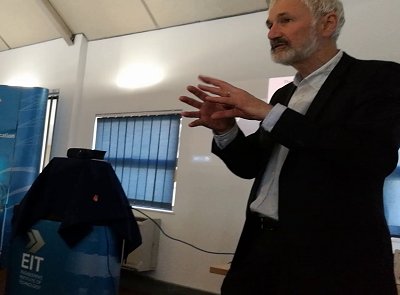
- Details
- Written by: Quintus Potgieter
The digital world is a scary place. It is a place of automation, it is a place of digitization, it is a place of disruption. And it can’t be ignored. If you don’t have the skills for work as dictated by the fourth industrial revolution...you may be in trouble.
People may find themselves in jobs that will be automated out of existence in the near future. Thankfully, however, education and training is also undergoing a revolution and is ready to meet the challenge of bridging the digital skills gap.
To quell the anxiety, the Dean of Engineering at the Engineering Institute of Technology, Steve Mackay, presented to a room full of graduated and budding engineers in South Africa. The presentation was entitled: ‘Taking control of your Engineering Career & Learning in the new Digital World’. Mackay said:
“You may be doing something today, but tomorrow, you will be doing something completely different. The most important message is that you should commit to continuously learning.”
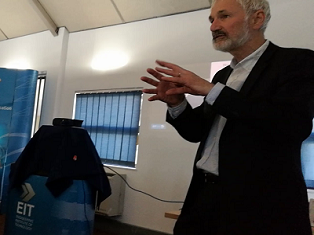
Mackay advises that a good rule of thumb, when deciding what discipline of engineering to pursue, is to consider what engineering skills your country desperately needs. That way, pursuing and getting a job in industry is more likely. He said:
“Look for the job demands of the country you are based in and be open to always learning and upskilling. Every country needs a certain kind of engineer - in fact; every town has its own particular demands and needs its own kind of engineers.”
Once students start to pursue their discipline, Mackay says, they will acquire qualifications. But they must not underestimate the value of learning informally, through practical tinkering with technology and learning the ropes of engineering, at work, through others.
Joining Mackay at the seminar was engineer and EIT lecturer, Deon Reynders. He currently teaches the Advanced Diploma of Industrial Automation, the Advanced Diploma of Electrical and Instrumentation (E&I) Engineering in Mining, and the Advanced Diploma of Mechanical Engineering.
He is also one of two instructors who is teaching the module known as Fundamentals of Project Engineering. Reynders suggested that engineering professionals should be constantly upskilling because of the rapid progress made in technology every decade.
“I graduated in 1972. One of our professors gave us a little farewell speech and he said: ‘Gentleman, I want to tell you something. The technology that you will use in your career does not exist yet’. I was taught using the slide rule and printed logarithm tables - there were no computers, no laptop, no mobile phone, there was no internet and no wireless.”
45 years later and Reynders is still a student of ongoing technological development. As a senior engineer, he has to be on top of all of the new developments in industry. He says:
“In 20 to 30 years from now you’ll laugh at this outdated junk; mobile phones, laptops. They will be archaic museum pieces. Things are changing rapidly, you can see it, it’s changing rapidly. You see technology merging. For example, for a couple of bucks you can buy a drone now which is a combination of mechanical and electronic engineering; it’s got camera, WiFi, incredibly complex control algorithms, and it will fly and land in your hand. It’s made by a team of multi-skilled engineers.”
Online learning
In 2007, he began lecturing online for EIT. The institution advertised a course in cyber security, and one student enrolled. After that, they created a course in data communications. Reynders has penned two books entitled: ‘Practical Industrial Data Communications: Best Practice Techniques’ and ‘Practical TCP/IP and Ethernet Networking for Industry’.
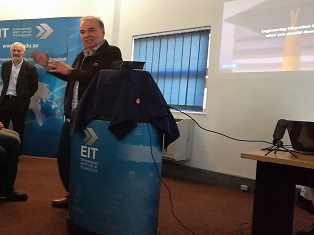
Reynders officially went rogue from his university past (he was once head of a department at the Walter Sisulu University) and decided to become a full-time, online lecturer, able to teach from any place he could find an internet connection. He lectures from his home office and plans to lecture from his yacht - which he is still building.
“We have to keep upskilling, multi-skilling, and learning. Otherwise, you’re gone...you’re dead. Thankfully, the methods of learning are also changing. The days of going to a university and sitting in the class and resigning from your job are numbered. In ten to fifteen years from now you will see the lecturer in virtual reality - but let’s take it one step at a time. But, meeting people online, and teaching and learning online, and accessing laboratories online, it is becoming the new paradigm. It’s the new way we do things.”
At the conclusion to the seminar it was clear that - when considering how to upskill oneself - the mindset should be: digital first, traditional second.
And finally Mackay commented on the future of engineering degrees. He believes they will become more niched with the focus on ‘micro-degrees’. These will be acquired throughout a career to keep workers industry-ready. They will equip those in the workforce with the necessary theory, but with the essential and relevant practical, hands-on skills needed in the engineering industries of today and into the future
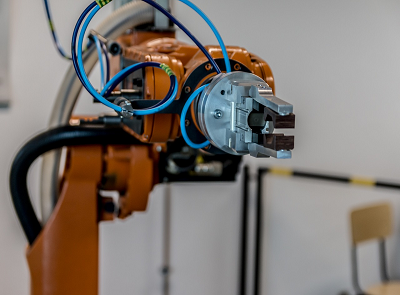
- Details
- Written by: Quintus Potgieter
Real-time Big Data and Analytics - Mobility - the Internet of Things - Social Media - 3D Printing - Drones - Self-driving Vehicles.
What do all of these things have in common? They are all associated with the digital disruption of the supply chain. They are technologies that are contributing to the Industrial Automation of today and will have an impact into the future.
They are also terms we should all be acquainted with. If we can keep an eye on the technologies responsible for replacing repetitive jobs in the supply chain we will be better prepared to be part of the revolution rather than part of the fall-out. Autoware is an example of a company which is automating and increasing the efficiency of processes in the supply chain.
The company has helped other companies produce 800,000 desserts, 14 million vials, 8 million bottles of beer, 5 million packets of pasta, 900,000 packets of mouthwash, and much more. Smart manufacturing is enabling it. When a company requires a product to be mass produced, Autoware employs their Manufacturing Execution System (MES) and facilitates it.
Whilst technology plays an integral role in improving the efficiency of the supply chain, digital implementation has disrupted the industry from end-to-end.
Luigi De Bernardini the CEO of Autoware is dedicated to developing ‘Wireless, autonomous production operation architecture for cognitive manufacturing’. He says the supply chain from four decades ago does not exist anymore. Now, supply chains are logistics, manufacturing, and the autonomous delivery of the product - all in one. He writes:
“Delocalization of production and globalization have created new challenges in managing supply chains, introducing new complexity in logistics and quality control. The main challenge has become finding the right combination of low production cost, necessary quality of products or semi-finished goods and reasonable transportation costs, guaranteeing at the same time the availability of the products when needed.”
No replacing work - just jobs
A law firm named Littler Mendelson P.C. has tackled the tough topic of whether automation in the supply chain is a good thing. They put together a report named: “The Future is Now: Workforce Opportunities And The Coming TIDE. A Call to Action”.
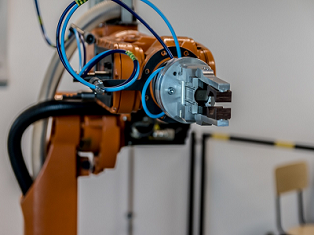
‘TIDE’ refers to the ‘technology-induced displacement of employees’. Top law and engineering firms agree - automation is and will continue to replace jobs. But, it won’t replace ‘work’ altogether. That is, if companies can meet workers halfway. The report states:
“The accelerating pace of automation will likely lead to productivity increases on a scale not seen since the Industrial Revolution, while displacing tens of millions of American workers from their current occupations. Too often, news reports dramatically focus on AI and robots as job killers. Unfortunately, the debate over whether jobs eliminated will outnumber jobs created ignores two related and no less important questions: 1) With the fast-paced arrival of innovative and transformative technologies, will workers whose jobs are most likely to be disrupted have the skills and training required for the new jobs being created? 2) Will employers be able to fill existing vacancies as this unstoppable transformation occurs?”
Bernardini agrees that smart manufacturers that utilize an automated supply chain must change to accommodate the digital future. He concludes:
“The hard work done in the past to optimize the supply chain in a delocalized environment is almost useless in the new world enabled by the usage of the technologies that have become available and affordable. A new approach -- and especially a cultural shift -- is needed in considering the end user as an active and driving part of the supply chain itself.”
Works Cited
“Digitalization Is Disrupting the Supply Chain.” Is Writing an Essential Skill for Engineers? | Automation World, www.automationworld.com/digitalization-disrupting-supply-chain.
Selko, Adrienne. “Automation Eliminates Jobs Not Work: New Report.” IndustryWeek, 22 June 2018, www.industryweek.com/talent/automation-eliminates-jobs-not-work-new-report.

- Details
- Written by: Quintus Potgieter
The UK government has dubbed 2018 the ‘Year of Engineering’. And as the year gallops into its final five months, innovation in Africa is a hot topic too. South Africa and Zimbabwe have both seen new presidents thrust into power, which may have also stimulated changes.
There also seems to be a renewed appetite for innovation in education and training - part of the blossoming global economy.
The UK government attended the Royal Academy of Engineering Workshop - hosted at Zimbabwe’s NUST University. They were represented by Catarina Laing from the University of Strathclyde in Scotland.
In 2015, the UK government set up the Global Challenges Research Fund. The £1.5 billion fund has been working to support cutting-edge research that addresses the challenges faced by developing countries.

They're particularly concerned about the number of people studying engineering in the UK - more specifically the fact that fewer girls are interested in studying engineering. Laing said:
“Engineering success is absolutely vital to the future of the UK, Zimbabwe and indeed all countries. We’ve seen how in the UK what a massive contribution engineering and engineering research makes to the UK economy and to the lives of UK citizens. Back in 2015 it was reported that engineering-related sectors have contributed around 280 billion pounds to the UK’s Gross Value Added in 2011 - about 20 percent of the total.”
Zimbabwe’s engineers and the engineering industry are well placed to help revitalize their economy and bring them out of the historical hyperinflation they have seen in the last few decades. However, with political tensions still present in the country, uncertainty reigns.
LEGO lends a helping hand
Another hot topic is the renewed push to prevent attrition rates in science and mathematics in schools. The United Kingdom, for example, continues to push for overhauling education and training in engineering. In this environment LEGO is reminding the world that the development of affection for STEM (Science, Technology, Engineering and Mathematics) starts with LEGO.

LEGO are now supporting the ‘Year of Engineering’ national campaign and will be travelling around the UK, visiting primary schools and inspiring the UK’s future engineers. The UK government said they see a shortage of 20,000 engineering professionals per year. On top of that, only 12% of engineers in the UK are female.
Therefore, LEGO will be running the ‘The Engineers of the Future’ roadshow. They will be giving children hands-on experience with new technologies and the opportunity to hear already prominent engineers speak about their careers.
Minister for the Year of Engineering, Nusrat Ghani said:
“Engineers are at the forefront of technology and infrastructure advances which are shaping all of our lives, from how we communicate and travel to tackling major challenges in healthcare and the environment. But the opportunities of this creative, innovative and hugely important profession are all too often misunderstood and overlooked by young people and their parents.”
The students will take part in challenge called the FIRST LEGO League. The challenge will see students trying to make sense of and solve some complex engineering problems.
Camilla Bottke, Head of LEGO Education After School and Competition said:
“For more than 35 years it has been our mission to inspire and develop all children, equipping them with the right skills to empower them to succeed, whatever their background and whatever the ambition. Our experience shows us the importance of supporting development of STEM skills in children from an early age. We are delighted to be part of the UK government’s ‘Year of Engineering’ initiative to further our commitment to developing these important STEM skills in children across the country and leveraging technology to give children the opportunity to become aspiring engineers.”
Works Cited
Commonwealth Office. “Engineering Success Vital to Zimbabwe's Future: UK Ambassador.” GOV.UK, GOV.UK, 18 June 2018, www.gov.uk/government/speeches/engineering-success-vital-to-zimbabwes-future-uk-ambassador.
“LEGO® Teams up with Year of Engineering Campaign to Inspire and Develop the Engineers of the Future.” GOV.UK, GOV.UK, www.gov.uk/government/news/lego-teams-up-with-year-of-engineering-campaign-to-inspire-and-develop-the-engineers-of-the-future.
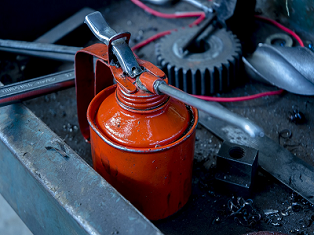
- Details
- Written by: Quintus Potgieter
Grease (lubricant). Engineering industries’ little talked about best friend. Lubricants are present in many engineering industries: Power Generation, Water & Wastewater, Food & Beverage, Oil & Gas, Transportation & Fleet industries, and more. Lubricants simply help machines run at optimum efficiency - and have given rise to the term ‘a well-oiled machine’.
Industrial lubricants also ensure that machines stay healthier for longer. Reducing the amount of friction a machine undergoes during its operation is lubrication engineers’ bread and butter. For fleet owners, for example, having trucks work around the clock is an important outcome for their business models. Trucks still play a vital role in our modern day world - countless industries depend on trucks to get product from ‘A’ to ‘B’. Engine oils, transmission fluids and fuel supplements are important to the truck’s efficiency and lifecycle.
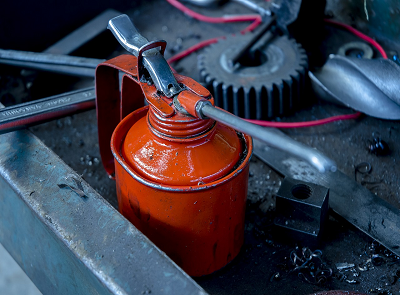
But how much innovation is occurring in the lubrication industry? It turns out that it is quite a bit.
Oil quality is a big focus of the grease world where innovation is welcomed. New blends of greases are being designed that can withstand far more heat and can lead to far less wear and tear - it is all done with synthetic-blend compositions.
A technical services manager for CHS Transportation, talking to Fleet Owner, says:
“Grease isn’t just grease. It’s changed. The quality of the base oil is incredibly important. It’s the majority of what goes into the grease. Synthetics tend to have better life expectancy. You want grease to stay in place so it can do its job where it’s supposed to do its job.”
Country specific recipes
Modern day synthetic greases are 70 to 90% base oil and the remainder is thickener. As newer technologies were introduced into the lubricant industries the thickener has vastly improved; now holding oil better than most greases in the past. Historically, greases would see much oil run-off and wastage.
Even modern day conventional oils sometimes fall short in countries where temperatures drastically drop during winter. Thus, there are specific standards developed per region, catering for what oils are needed. However, there are universal lubricants for specific industries.
Using synthetic oils that are specifically designed to work in those lower temperatures is advisable. But lubricants are not only utilized to keep those truck engines running in winter, they are also used to stop excessive metal-on-metal contact, Ball bearings are in the direct line of experiencing wear and tear. Woetzel says:
“You’ve got to avoid metal-to-metal contact at all cost. Any kind of direct contact leads to wear and tear, which eventually causes problems down the road.”
Future Markets Insights believe that the global industrial lubricants market will be seeing a high growth rate in the next few years due to the growing automotive industry. Power companies and plant operators also utilize oils for their turbines. Where there is machinery, there is always a need for some grease.
Another issue confronting lubricant makers is the need to create them with the environment in mind. Synthetic and renewable, non-hydrocarbon oils is where the industry has been moving to, and engineers have to adapt.
Online sensors have also made their way into the industry. The sensors scan the lubricants and analyze the lubricants in real time to ensure they are effectively offsetting the wear and tear occurring inside a machine. The need for efficiencies and preserving technologies over time has given rise to lubricant innovation, and more can be done despite synthetics being in existence for many decades now.
Mobil recently celebrated 150 years of lubricant innovations. To see how they built their entire company around lubricants - which propelled the industrial revolution forward - is shown in this video:
Lubricants simply keep the world moving. And they will be with us for many years to come to improve efficiencies, circumnavigate the wear and tear of machines, and keep things going along smoothly.
Works Cited
12, Jun. “Grease: The New Frontier in Fleet Technology.” Fleet Owner, 13 June 2018, www.fleetowner.com/lubricants/grease-new-frontier-fleet-technology.
Budholiya, Abhishek, and Himesh Khatri. “In-Depth Forecast & Analysis on Industrial Lubricants Market for 2015 – 2025.” SatPRnews, www.satprnews.com/2018/06/11/in-depth-forecast-analysis-on-industrial-lubricants-market-for-2015-2025/.
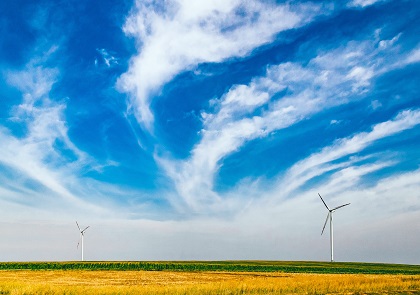
- Details
- Written by: Quintus Potgieter
110,000 Australian homes are to be powered by renewable energy sources before the end of 2018. Much of this is thanks to Partners Group - the global private market investment manager. They will be investing a total of AUD$700 million in a renewable energy platform named the Grassroots Renewable Energy Platform.
The investment will, over four years, help add 1.3GW of new wind power, solar power, and battery storage projects in Australia. It is not the first time Partners Group has thrown their weight behind the Australian renewables sector. In 2015, they pledged AUD$450 million for the building of the Ararat Wind Farm in Victoria. The local developer utilizing the funds and building the farms is CWP Renewables. They are in the business of delivering energy, and powering communities.
Then in 2016, the investment firm pumped a further AUD$250 million to complete the 270MW Sapphire Wind Farm in New South Wales. This particular wind farm is going to be the most important player in the new Grassroots Renewable Energy Platform the company plans to perfect in Australia. It is thought that the wind farm would be paired up with an upcoming solar and battery storage project.
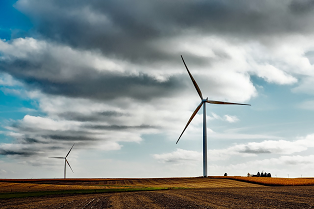
This cash injection is changing the face of power generation in Australia. The Head of Private Infrastructure Asia-Pacific at Partners Group Benjamin Haan said:
“When we invested in Sapphire Wind Farm, one of the key attractions for us was the project’s potential to anchor an Australian renewable energy platform. Partners Group and CWP have a project in the pipeline of 1.3GW in generation capacity across wind and solar power, offering the scope to be selective and develop Grassroots into a quality renewables platform of significant scale. We look forward to working with the CWP team to further support the generation of clean energy in Australia.”
CWP boss, Alex Hewitt, believes that the platform will undeniably help Australia transition from a fossil-fueled electricity industry to one powered by renewables at ‘very affordable prices’. An added benefit of bringing the wind farms online will be a marked decrease in carbon emissions.
Not stopping there
An extra 55,000 homes will be getting clean power in 2019 when the second project, the Crudine Ridge Wind Farm, is completed. That farm will produce 135MW in Mudgee, New South Wales. And of course power isn’t the only thing being generated – jobs are too. By September of next year the General Electric wind turbines will be erected, producing 75 full time jobs.
Partners Group adds that over its lifetime, the Crudine Ridge Wind Farm, will offset eight million tonnes of carbon emissions.
And if all goes well, with continued innovation in renewables, the Grassroots platform could indeed become an Australian clean energy superpower. Talking to Clean Technica, Haan concluded:
“In Australia’s energy market, a significant transition away from fossil-fuel power is now underway. The compelling economics of renewables and the age of older coal plants is driving that change, the speed of which is ramping up. While it is true that political instability has delayed the transition in the past and the sector is still somewhat fragmented, the Grassroots platform is aimed at this transition and its business plan is robust enough to deal with any likely outcomes from the current political debate. We believe Grassroots has the scale and competitive edge to succeed and become a significant renewable IPP in Australia.”
Works Cited
“Partners Group to Invest AUD 700 Million in Australian Renewable Energy Platform; Announces Imminent Construction of Crudine Ridge Wind Farm.” Private Investors, www.partnersgroup.com/en/news-views/investment-news/current/detail/article/partners-group-to-invest-aud-700-million-in-australian-renewable-energy-platform-announces-imminent-construction-of-crudine-ridge-wind-farm/.
“Swiss Equity Firm Commits To 1.3 Gigawatt Australian Renewable Energy Platform.” CleanTechnica, 29 May 2018, cleantechnica.com/2018/05/29/swiss-equity-firm-commits-to-1-3-gigawatt-australian-renewable-energy-platform/.
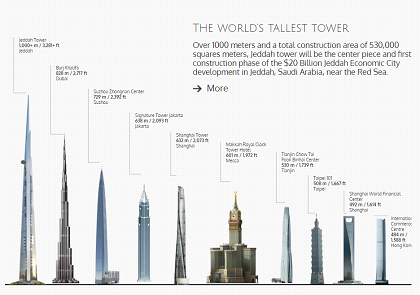
- Details
- Written by: Quintus Potgieter
The world’s tallest building, the Burj Khalifa in Dubai, is about to be dethroned. 1,200 miles away, a new tower is nearing its completion in Saudi Arabia. In 2020, the tallest building in the world, the Jeddah Tower measuring in at one kilometer, will open. That is if engineers can complete the audacious towering skyscraper on the desert sand.
The tower’s construction is estimated to cost the Kingdom Holding Company around US$1.5 billion. Jeddah Economic Company website initially reported that the tower would stretch “over 1000 meters” but Engineering360 says those plans have changed. Nonetheless, the tower will also have the world’s highest observatory deck ever built.
The tower will also be the centerpiece of an almost Singaporean city, a center for business and commerce. This city will be called the Jeddah Economic City. The entire district is to cost US$20 billion. It will include a new airport and cutting-edge infrastructure, replacing the dated and aging infrastructure Saudi Arabia has become synonymous for.
Building on sand
Whilst building a kilometer high building is obviously an engineering challenge, another engineering conundrum is how to build on the fine sand in Saudi Arabia. Civil engineers have had to closely study the 5 subsurface layers of the sand in Jeddah.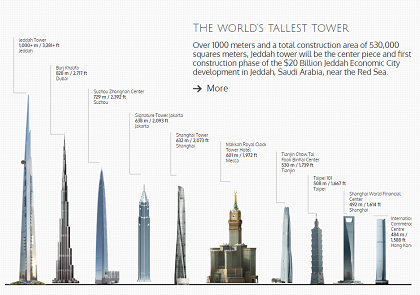
Geographically the tower is near the Red Sea.
Roger Pink from IEEE Global Spec’s Engineering360 explains:
“The first layer, varying from half a meter to 2 meters thick consists of silty sand. The next 40 to 50 meters is coralline limestone, followed by a 2 to 10-meter thick mudstone/gravel layer. Next comes a poorly constituted sandstone layer about 35 to 50 meters thick, followed by another 3 to 9-meter gravel layer. Finally, below all of this is a sandstone layer as far as 200 meters.”
The unique challenges have been figuring out how to utilize the architecture blueprints and build sturdily according to those designs. The architect for the project is American born Adrian D. Smith - coincidentally the architect behind the Burj Khalifa in Dubai. He is also responsible for the Trump International Hotel & Tower in Chicago, the Jin Mao Tower in Shanghai and the Zifeng Tower in Nanjing.
The engineers have created a three-winged load-bearing design. This design also has to account for wind and the pressures that it brings. The project began construction in 2013, but a series of delays has led to the most recent end-goal which is 2020.
One of the delays arose because of the height of the Jeddah Tower. Civil engineering experts advised the architects that the higher up they go, the more unstable the concrete becomes. That high up, the wind load would cause the concrete to shrink under the pressure. (This has also meant the construction has had to be as aerodynamic as possible.)
Specialized concrete pumping equipment with thin, pressurized pipes is being utilized to counteract the forces of gravity on the concrete. Pumping wet concrete a mile in the sky is allegedly the most challenging element of the construction.
The engineers have had to work later in the evenings at lower temperatures. This allows the concrete - being pushed out a single tube - to set. However, concrete is not the only thing that needs particular attention - transporting humans to the top of the tower will be a challenge too.
Bart Leclercq, head of structures for WSP Middle East, explains:
“You have to make sure a tower is not too flexible and people aren’t getting nauseous in high winds. You have to put enough stiffening elements in your building. For example, sheer walls in combination with concrete cores in the case of a concrete building.”
A novel approach to an elevator system is being drawn up to ensure the elevators do not suffer under the wind loads and the building sway. The tower is expected to have a wholly different elevator system - the first of its kind in the world.
The engineering challenges and the feasibility of a mile-high tower have meant that the architect’s original plans have, in some instances, changed to accommodate the actual construction of the tower.
Hisham Jomah, chief development officer at JEC, told the Times of Oman:
“Between theory and application: what has been designed and what is actually on site is quite another world.”
This year, over 50 percent of the construction is reportedly completed. Here is a video of the progress made on the tower in the first half of 2018:
To see how six cranes will contribute to the construction of the Kingdom Tower Jeddah, take a look at this construction simulation:
The entire project is a marvel of engineering from construction phase to completion. And as far as tall buildings go, in 2020 this tower will have reset the bar. It does, however, make one wonder at the significance of it all?
Works Cited
“Home Page.” Times of Oman, NEWSPAPER_NAME, timesofoman.com/.
Pink, Roger. “Jeddah Tower - Building a Skyscraper on Sand.” A Water Treatment Alternative to Chlorine? | Engineering360, insights.globalspec.com/article/8791/jeddah-tower-building-a-skyscraper-on-sand.
_TWIITERID. “Jeddah Economic Company | Home.” Http://Www.jec.sa//, www.jec.sa/.
Ephgrave, Oliver. “Tall Order.” ConsrtuctionWeekOnline.com, www.constructionweekonline.com/article-13533-tall-order/.
- Details
- Written by: Quintus Potgieter
A startup in Melbourne, Australia, has introduced the world’s biggest 3D printer. The company in question is
They boast that they also have the industry’s fastest metal 3D printing production line.
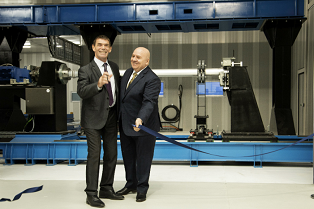
They specialize in titanium, of course. They print for an assortment of industries. They produce and manufacture metals for space ships, automobiles, skyscrapers, bicycles, military marine vessels, yachts, wheelchairs, mining equipment, and offshore oil and gas drilling stations.
Their 3D printer stands at 1.5 meters high, has an area of 9 meters and is 3 meters wide. The 3D printer can produce 45kg (99lb) of printed material per hour. Smaller machines, CEO Jeff Lang says, can only do 1kg (2.2lb) per 24 hours. The size and efficiency of Titomic’s machine
CEO of
The printer has a printing function the company has dubbed
In short, the process uses kinetic fusion instead of melting metals to build.
The company has begun utilizing their new fusion methods to create seamless titanium bicycle frames. They produce a new bike every 30 minutes with a smaller machine utilizing the same fusion methods the larger 3D printer employs.
The process was created in collaboration with the Australian federal scientific research agency CSIRO. Business Insider reports that the previous title owner of ‘biggest 3D printer’ was GE’s machine - which could print metal objects of up to one cubic meter.
Here is a timelapse of Titomic’s machine printing a sign in four minutes:
Why titanium?
The benefit for bikers is immediately apparent. Titanium bike frames are more durable than those made from carbon fibre. The golf club company, Callaway, is also very interested in this very capable printer.
However, titanium isn’t the only metal the company is looking to use.
CEO of
“When we look at carbon fibre parts they generally make a hollow part called a monocoque construction. We’re sort of at the stage now where we can achieve that with metal,
Lang believes that their printer signals the birth of a new industry for metal manufacturing. He says now, with
The printer, Lang says, is creating titanium at a level that is “very close” to the strength of titanium when created using traditional methods - but concedes that more can be done to improve its printing methods. The printer has shown how efficient the process of additive manufacturing
Works Cited
Farquhar, Peter. “A Melbourne Manufacturer Just Fired up the World's Largest 3D Metal Printer.” Business Insider Australia, Business Insider Australia, 16 May 2018, www.businessinsider.com.au/a-melbourne-manufacturer-just-fired-up-the-worlds-largest-3d-metal-printer-2018-5.
Quick, Darren. “World's Largest Metal 3D-Printer Scales up Additive Manufacturing.” New Atlas - New Technology & Science News, New Atlas, 18 May 2018, newatlas.com/titomic-worlds-largest-metal-3d-printer/54667/.
- Details
- Written by: Quintus Potgieter
If you aren’t utilizing a service that delivers your groceries to your door now, you most likely will use one in the future. Thanks to automation, you won’t have to cast your mind to the nonexistent workers that are packaging all of your groceries up for you - because all of the workers will be robots.

If it sounds like a persuasive brochure from a futuristic sci-fi novel, it isn’t. It’s already happening. Ocado warehouse in Hampshire, England, utilizes hundreds of robots on a metal grid, speedily transferring groceries from holding cell to packet to your front door. And we have engineers to thank for that.
The warehouse where the robots perform their gymnastics is completely unmanned. Pick-and-place robots are abundant, carefully lifting and then putting down items that will be shipped to the demanding customer.
It is all made possible through an automated solution named the Ocado Smart Platform Automated Fulfilment Solution. The graphical representation of what is going on in the computers’ brains as it fulfills an order looks like this:
The whole robotic ‘ecosystem’ is orchestrated through a 4G-based wireless protocol system that is running the whole system in real-time and can optimize the operation on-the-fly. The company says the system is the most advanced system for logistics in the world.
Thousands of little specks on a digitized warehouse blueprint map show what the robots see - items ready to be fetched and delivered. It is called a resource map.
440 other specks (the robots) then need to travel into the interior of the warehouse and pick the items up. The 4G network makes the magic happen - it communicates at 10 interactions per second with each robot.
The robots need to know where to be at the appropriate time. The system can handle 3 million routing calculations per second. Something that quantum computing, upon its arrival, will more than quadruple. It is an ecosystem of robotic automation, working in complete harmony - something human workforces are hard pressed to perfect.
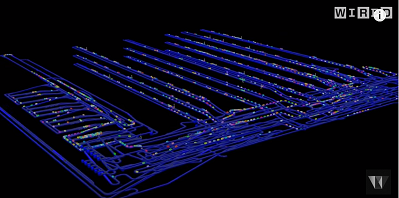
source:wired
Talking about efficiency, the grid that Ocado has designed ensures that all possible warehouse floor space is utilized so that there is no wasting of resources whatsoever. The company says that the grid can be retrofitted into existing warehouses.
The robots themselves can carry tens of kilograms and can move at several meters per second - there is no doubt that the robots are efficient. They are so efficient they have dubbed their robot battalion a ‘swarm’ of robots. Traversing a grid the size of several football fields, the robots communicate via a cloud-based solution and continually generate data that gets plugged into an analytics program named BigQuery.
It is a data and communications tour de force. Experts say the data communications network the company is running is the first of its kind and is the ‘first deployment of unlicensed 4G spectrum for warehouse automation’. The warehouse can handle up to 1,100 robots.
Thus, it is a glimpse of the not too distant future for all warehouses.
However, Ocado isn’t the only company utilizing robots in warehouses. Amazon has a staggering 45,000 robots currently whizzing around in 20 fulfillment centers - grabbing the relevant items customers have ordered, and transporting it to the delivery departments. From 2016 to 2017, they doubled the number of robots that was working for them. Amazon purchased the robot company Kiva Systems in 2012, and has been using warehouse robots ever since.
It is no secret, automation is replacing the pick-and-place workers in warehouses. What has been kept secret are the incredible data communications systems in place to ensure the most efficiency for a warehouse. Companies are looking to automate more efficiently than the next company, and it seems Ocado - with their own novel software and systems - is pulling ahead.
Works Cited
“Ocado's Robot Swarm.” New Electronics, 23 May 2018, www.newelectronics.co.uk/electronics-news/ocados-robot-swarm/174218/.
Shead, Sam. “Amazon Now Has 45,000 Robots in Its Warehouses.” Business Insider, Business Insider, 3 Jan. 2017, uk.businessinsider.com/amazons-robot-army-has-grown-by-50-2017-1?IR=T.
- Details
- Written by: Quintus Potgieter
Food and beverage processing has been achieved by
With the rise of
Fast food giant,
Four MIT engineering graduates have gone into the restaurant business and shown the world the future with their automated kitchen. It is the brainchild of Michael Farid, who during his Masters in Mechanical Engineering, found that he had almost no time to cook himself meals.

He recruited Braden Knight, Luke Schlueter and Kale Rogers to acquire the technology they would need for the project of creating an automated kitchen. They, too, agreed that they couldn’t find a decent meal at an affordable price point as students. They subsequently began their work on the restaurant of the future. ‘’
In 2015, they took their idea to MIT’s Global Founders’ Skills Accelerator program. They had officially become a startup. They gave the restaurant they would open a name: Spyce.
When they had all the robotics figured out, they had to get a menu going. Therefore, they brought in a gentleman named Daniel Boulud, a Culinary Director and Michelin-Star Chef. Michael Farid guessed Boulud’s email address and asked if he wouldn’t mind creating a menu for their automated kitchen. Boulund says the robotic kitchen brings ‘precision’ and ‘consistency’ to the kitchen - something which humans struggle with.
They eventually opened the restaurant in downtown Boston on May 3rd, 2018. What’s on the menu? An assortment of stir-frys. So how does the restaurant work?
Customers are ushered in by a host. Food is ordered via an automated kiosk. The automated kitchen then gets to work after which the
Every bowl costs US$7.50. Patrons can opt to add proteins for an extra cost.
The
To see how it all came together, check this video out:
The replacement of human workers in the food industry is already causing some consternation in the industry. Members of Las Vegas’ Culinary Workers Union recently went on strike to force employers to amend their contracts to protect their jobs from being replaced by automated technologies.
But Luke Schlueter, the head mechanical engineer on the project, has made assurances that only one or two processes have been automated in their kitchen and that humans are still as vital as ever. He said:
“Our robotic kitchen was designed to be a tool. At our restaurant, our robotic kitchen allows our managers to focus on making our bowls look beautiful, applying the finishing touches, and being creative. We also have a commissary team that preps our ingredients for the robotic kitchen. We’ve designed the robotic kitchen to work in harmony with
Works Cited
Coxworth, Ben. “Restaurant Keeps Its Prices down – with a Robotic Kitchen.” New Atlas - New Technology & Science News, New Atlas, 29 May 2018, newatlas.com/spyce-restaurant-robotic-kitchen/54818/.
“Las Vegas Food Service Workers Are Going on Strike so They Don't Lose Their Jobs to Robots.” Futurism, Futurism, 29 May 2018, futurism.com/las-vegas-food-service-workers-strike-automation/.
“Spyce Restaurant Opens with Robotic Kitchen Ready to Serve.” Should the Federal Government Raise the Minimum Wage to $15? - MIT Sloan School of Management, mitsloan.mit.edu/newsroom/articles/spyce-restaurant-opens-with-robotic-kitchen-ready-to-serve/.
- Details
- Written by: Quintus Potgieter
A vast number of jobs are potentially on the chopping block in South Africa: engineering professionals, senior project managers, energy storage specialists, coal truck drivers, technicians, asset managers, operations officers, and others. They are seriously threatened if the state-owned power utility, Eskom, restructures its operations.
Presently it powers 95 percent of South Africa, but it is not looking good. It is struggling to weather historical maladministration, a failed nuclear deal with Russia, crippling debt and a change of presidents. Electricity distribution is once again under the microscope.
The situation is looking particularly dire as the country moves into their winter months. Three managers at the company were recently suspended, deemed responsible for coal shortages, and the utility is also without a CEO at the moment.
Up for debate?
To ensure an ongoing electricity supply in the country an open public debate was held in Johannesburg earlier this month. It was tasked with asking the pertinent question: ‘Should Eskom be restructured and if so how and when?’
Frans Baleni, the Deputy Chairman of the Development Bank of Southern Africa and former Secretary-General at the National Union of Mineworkers (NUM) argued that the utility has served South Africa well; he believes it is impossible to turn back from the network footprint it has.
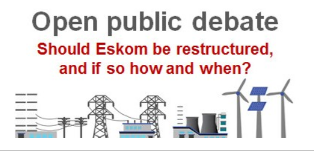 He says that Eskom has a solid fleet of generation plants, but concedes that they are now aging and need to be upgraded.
He says that Eskom has a solid fleet of generation plants, but concedes that they are now aging and need to be upgraded.
He warns that a complete restructuring of the utility would put 40,000 jobs at stake. He proposes that the utility deals with governance issues, focuses on building investor confidence and deals with corruption decisively, so that business performance can be prioritized.
Miss Nelisiwe Magubane was also one of the speakers at the debate. She is a Non-Executive Director of Eskom and Former Director-General at the Department of Energy. She is an electrical engineer with 25 years of experience. She is a key player in energy policy in the energy sector. She has also been named as one of the top 50 most influential people in the energy sector in South Africa.
She commented that those countries with a more privatized energy sector had superior systems, when compared to the vertically integrated state-owned utility business model. However, she thinks the terms and conditions surrounding the privatization of the energy sector in South Africa should depend on whether a private system would lead to the lessening of inequality and poverty.
She said:
“What kind of industry structure is going to meet our objectives? You need skills, you need drive, you need financial astuteness. We need to have a proper governance of the energy sector. It needs to be beneficial for all South Africans.”
Dr Grovè Steyn, a graduate from the University of Cape Town and the University of Sussex, was the last speaker at the event.
Steyn started his career as an Industrial Engineer at Eskom. He went on to become a leading infrastructure and regulatory economist in South Africa. He is currently the Managing Director at Meridian Economics. He says undoing the 95 year institutional model of Eskom is going to be a tough process, but it has to be done. He explained:
“This institutional model has long since outlived its usefulness. It has now become critical for South Africa to embrace the technological disruption and address the environmental imperatives in the power sector.”
Steyn says Eskom’s ‘abuse of dominance’ in South Africa has led to ‘managerial moral hazards’. Citing numerous studies, Steyn highlighted the ‘human cost’ of coal power stations - explaining that coal power reportedly kills 2,000 people in South Africa per year.
Steyn advocates for clean, renewable energy sources. He notes that the reduction of costs in technologies such as solar and energy storage means governments have little choice but to use the cleaner alternatives in new energy project builds.
He also wants the energy sector to open the industry up to new players, to move away from the state-owned monopoly. More choice, more competition and a democratized energy industry can’t be a bad thing.
“It is now globally recognized that electricity generation is best organized as a competitive sector. And our own experiences with our IPP program supports this very strongly.”
Where are the jobs being created?
Power sector talks, which are now a national conversation, are pressing for the sector to be overhauled. South Africans need to ensure they are skilled-up to deal with the newer power generation technologies, and the jobs that are created through them.
Some of the traditional jobs will begin to dwindle; coal truck drivers are particularly concerned that they will be made redundant. Already Eskom has said it wants to shut down four coal power stations by 2020. In their stead the country is asking renewable energy providers to apply for tenders to create renewable plants in South Africa.

The renewable energy industry is responsible for the creation of a large number of jobs around the world. According to the International Renewable Energy Agency, there were 3.4 million renewable energy jobs available in the photovoltaic industry in 2017 alone. The entire energy industry accounted for 10 million jobs last year - with China supplying 43 percent of the industry.
A group providing renewable energy, Abengoa, has just completed the construction of a concentrated power plant in the Northern Cape. They believe South Africa’s best bet for a secure renewable energy supply is to go with blended energy plants: with both solar photovoltaic (PV) technology and concentrated solar power (CSP) technologies.
Works Cited
Bloomberg. “Renewable Energy Jobs Are Becoming More Available.” IOL Business Report, 11 May 2018, www.iol.co.za/business-report/energy/renewable-energy-jobs-are-becoming-more-available-14881893.
Creamer, Terence. “South Africa Urged to Consider CSP-PV Blend to Lower Cost of Dispatchable Solar Generation.” Engineering News, www.engineeringnews.co.za/article/south-africa-urged-to-consider-csp-pv-blend-to-lower-cost-of-dispatchable-solar-generation-2018-05-07.
Watson, Amanda. “Which Way for Eskom?” The Citizen, citizen.co.za/news/south-africa/1925176/which-way-for-eskom/.
- Details
- Written by: Elyse Simich
The Vasa

This Swedish ship was constructed between 1626 and 1628 and intended to be part of the Royal Swedish Navy. However, it only got 1300 metres into its maiden voyage before it capsized and sank. King Gustavus Adolphus oversaw the project and put tight time constraints on the engineers to get the ship finished. He also requested design changes mid-project, despite the constructers advising against them. Once the construction was finished, engineers conducted stability tests on the ship and concluded it was not sea worthy. The King ignored this and ordered it to be launched anyway. Light breeze caused the ship to capsize as soon as it left the harbour, and the ship sank as water flooded into the gun portals. 53 sailors lost their lives.
St Francis Dam
The St Francis Dam in California had been operational for two years, when in 1928 it exploded and killed over 450 people. Constructed out of concrete, it started showing signs of cracking shortly after being filled. This is because the dam was built from plans that were originally meant for another site, with no location-specific modifications. During construction, the height of the dam was increased twice, but the base remained the same – this reduced the safety margin for structural stability significantly. For a considerable amount of time leading up to the explosion, muddy water was observed entering the dam from within the foundation. The dam failed less than 12 hours after the last inspection by its engineer.
Purity Distilling Company Tank
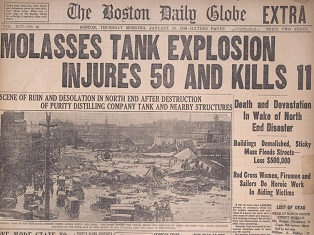
On 5 January 1919, a giant molasses tank blew up and coated a Boston neighbourhood in sticky syrup, killing 21 people and injuring 150. Molasses wasn’t only used to make rum; during World War 1 it was used to make munitions. This tank was built hastily because of the war and as a result, it was never filled to capacity to test for leaks. As soon as it was filled with molasses it began leaking, so the owners painted it brown to camouflage the stains. Investigations into why the tank exploded were inconclusive; however some possible causes were a too-brittle tank or a reaction caused by a mix of hot and cold molasses brought on by extreme changes in temperature. When the tank exploded, 8.7 million litres of the syrup peaked at 27 metres and rushed into the streets at 56 kilometres per hour.
R101 Airship
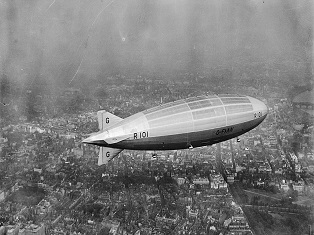
In 1930, British Airship R101 crashed killing 48 people. Originally this airship was conceived by the British Government as an experimental platform. However, after completion, the government decided they’d like the airship to fly commercially in order to compete with a German plane which had just successfully flown around the world. Engineers weren’t given time to fix any of the structural and mechanical issues in the design, nor were they able to run flight trials. As a result, the plane was heavier than intended and the engines were half as powerful, yet twice as heavy as planned. The plane was dispatched on a flight to India, despite being unfit to make the journey and with no regard to the bad weather. The load of fuel and unnecessary cargo exceeded the ship’s abilities and compounded the other design flaws.
Tacoma Narrows Bridge Collapse
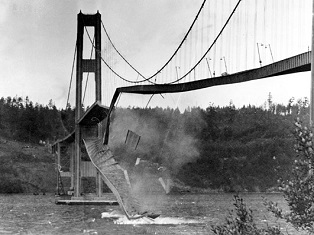
In November 1940, the third longest suspension bridge in the world collapsed, killing one dog. The Tacoma Narrows Bridge was designed to be the most flexible bridge ever constructed and despite exceeding standard ratios for length, width and depth, it was considered completely safe. It was later found that the engineers responsible for the project hadn’t taken into account all the aerodynamic forces brought about by strong winds. The sustained wind that passed over the structure that day caused vortices to occur, which started rocking the extremities of the bridge out-of-time with its middle. This caused one of the suspension cables to snap and the motion intensified, causing the entire structure to collapse.
Cleveland Gas Explosion
In 1944, two liquid gas tanks exploded in Cleveland, Ohio, killing 130 people. There were four above-ground tanks used as storage for the gas and one began leaking, sending white vapours into the air. The wind pushed the vapours towards the sewage system, which created the explosion. This storage tank caught fire and began destroying houses and factories in the area. As firefighters worked on it, a second tank also caught fire. 600 people were left homeless as a result of the damage. It took the all the firefighters in that town to put the fires out.
The de Havilland Comet

The world’s first commercial aeroplane featured turbojet engines rather than propellers, a bullet-shaped body, a pressurised cabin and square windows. These engines allowed it to fly higher than its competitors, avoid bad weather and increase its speed by up to 50 per cent. Built in 1949, it was commissioned by airlines such as Pan Am, South African Airways, Japan Airlines and Air India. In its first year it flew 30,000 passengers including Queen Elizabeth, taking customers from London to places such as Tokyo, Colombo and Johannesburg. By 1953 Comets were leaving London each week. However, there was a major structural design flaw which became evident after two crashes occurred in 1954.
On flight 781 from Rome, the plane exploded 20 minutes after take-off killing everyone on board. Crash investigators found the recovered bodies all had fractured skulls and ruptured lungs. When a South African airways plane crashed a few months later, the recovered bodies had all suffered similar injuries. Investigators found both accidents were caused by inflight metal fatigue failure, which led to explosive mid-air compression. The square windows were to blame for this – the sharp corners of the windows put the surrounding metal under stress at high altitude. Since the stress was localised to just the corners of each window, it resulted in metal fatigue. This is why round windows are always used in aeroplanes now; the stress is able to flow evenly around the window.
Firestone 500 Tires
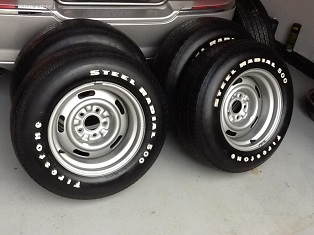
There were over 60 deaths and a hundred serious injuries caused by Firestone 500s across the US, culminating in a recall of millions of tires in 1978. Firestone was a popular tire brand in US prior to the 1970s, however, when radials became available in the American market their sales began to fall behind. In response, they engineered a radial tire but cut corners in order to release it in the shortest amount of time possible. One of the biggest issues in the manufacturing process was the use of incorrect machinery, as the radial-specific equipment was yet to be installed. Over a period of four months the tires passed high speed tests, high mileage tests and overload tests at maximum weight. A couple of years after the tires had been put on the roads, major accidents occurred, caused by tread rubber separating from the brass-plated steel belt at high speeds. While the cause of this separation was never proven, it’s believed the tread wasn’t adhered to the steel belt correctly and water got in, causing the belt to corrode.
Kansas City Hyatt Regency Walkway Collapse
In July 1981, two walkways collapsed at the Hyatt Regency Kansas City hotel killing 114 people and leaving over 200 injured. During its construction the 40-storey building experienced some setbacks, including the collapse of the atrium roof. The lobby was one of the hotel’s defining features, with steel, glass and concrete walkways connecting the second, third and fourth floors from north to south. The walkways had been designed with support beams and tie rods to carry the weight of the people standing on them. However, the design of the fourth-storey walkway had been modified slightly, and the change critically undermined the safety of the structure. On the night of the tragedy, 1600 people were in the lobby for a Tea Dance event. There were approximately 40 people on the second-storey walkway and 16 on the fourth-storey walkway. The connections supporting the ceiling rods holding up the second and fourth-storey walkways failed, causing them to collapse onto the crowded first floor.
Therac-25 Medical Accelerator
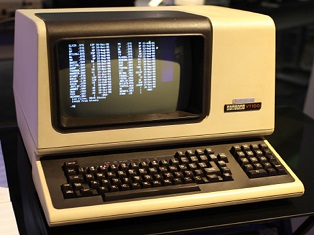
Between 1985 and 1987 six cancer patients were exposed to overdoses of radiation, killing four of them and permanently injuring two. This was caused by a “cancer zapping” machine, which used X-rays to kill cancerous tissues in patients. One of the issues with this machine was that healthy tissue around the tumour was always damaged too, however, it was always hoped the patient would be healed more than they would be harmed. It turned out the machine was only controlled by a computer and there were no hardware interlocks or supervisory circuits to ensure safety. Engineers had also failed to conduct time-analysis and unit testing of the machine. The software developed a bug, which lead to catastrophic events as the wrong dosage was delivered to patients.
Originally the manufacturers denied that such an error was possible, however a technician familiar with the machine ran experiments in his own time to find out what was causing it to malfunction. It was found the same error could happen in the previous model; however the hardware interlocking system would act as an emergency stop. Since this system had been removed in the current model, there was nothing to stop the machine from administering an overdose. The computer had been programmed to have real-time control over the machine. However when the software was placed under scrutiny, it was revealed the source code had been written by only one person who had little experience with coding for real-time systems. The Therac-25’s code had just been based off the code for the two previous models. Both the software engineers and system engineers were at fault for not properly testing the machine and ensuring tight safety measures were in place.
Chernobyl Disaster
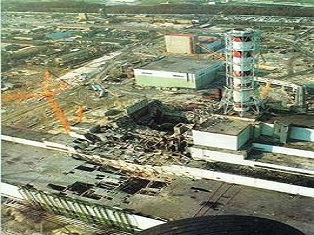
In 1986, workers at the Nuclear Plant were preparing for a one-time shutdown, when they violated safety regulations by disabling the automatic shutdown system and removing most of the control rods, while allowing the reactor to continue running at seven per cent. This caused two large reactions to occur , sending radioactive material into the air. In the four months that followed 28 workers died – some knowingly exposed themselves to the deadly levels of radiation in order to prevent the plant from leaking further. Since the radioactive material affected such a large geographical area, many people were displaced from their homes. Thousands of people died prematurely from cancer because they were exposed to such high levels of the poison.
McDonnell Douglas DC-10
These commercial planes were manufactured from 1970-1989 and designed to compete with the Boeing 747 by operating medium to long haul flights. Over 1000 people were killed in a series of incidents brought about by various engineering errors. Two of these incidents involved faulty locking mechanisms on the cargo door, causing it to be ripped off mid-flight and depressurise the cabin. In another incident, the left pylon and engine separated from the wing just after take-off, which cut several hydraulic lines at the same time. 275 people died in the resulting crash.
Mars Climate Orbiter
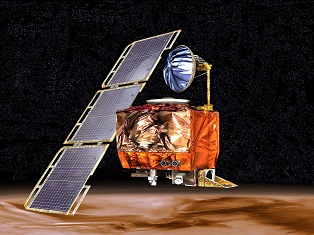
This US $125 million satellite was designed to be the first weather observer on another planet. However, in September 1999, it vanished as it approached Mars, burning up in the atmosphere. NASA reviewed their calculations and realised a conversion error caused the spacecraft to go too close into the Martian atmosphere. The software controlling the satellite’s thrusters calculated the necessary force it needed to exert in pounds. Another piece of software took this calculation and assumed it was in newtons. Unfortunately, the engineers didn’t pick this error up despite the spacecraft making 10 times the amount of adjustments than they expected. It got within 60 kilometres of the Martian surface despite simulations showing anything closer than 85 kilometres would exert enough atmospheric friction to destroy the satellite.
The Millennium Footbridge
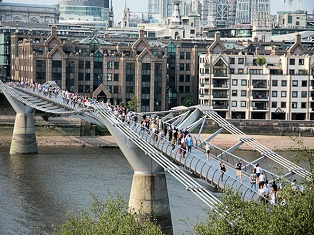
This footbridge was opened in June 2000 to celebrate the new millennium and connected St Paul’s Cathedral with the Tate Modern Gallery. Two days later, it was closed indefinitely as engineers re-worked the structure’s design. The US $26 million bridge showcased a futuristic design with an aluminium deck supported by two Y-shaped frames, rather than overhanging arches. Unfortunately, the bridge was wobbly and even a light breeze made it swing. As pedestrians crossed the bridge, they attempted to keep their balance by walking in time with the swaying to counter the motion. This increased the force of the lateral swinging and the rocking increased. New York engineers stepped in and installed 87 dampers underneath the bridge to act as shock absorbers and decrease the motion, costing a further US $7 million. The bridge was reopened 18 months later.
Tokyo Disneyland Big Thunder Mountain Derailment
One person was killed and 10 injured when the rollercoaster derailed in 2003. The gap between the axel and the bearing on the back wheel exceeded design specifications, causing more vibration than it should have and placed extra pressure on the screw holding the axel in place. As a result, the axel broke and the carriage crashed. The reason for the large gap was a miscalculation in measurements when converting them from imperial to metric – the axel should have been 44.14 millimetres rather than 45 millimetres.
French Trains Too Wide For Platforms
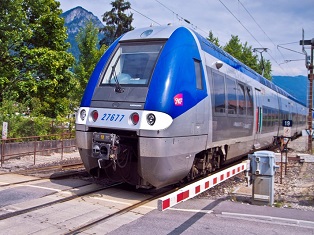
In 2014, French train operator SNCF discovered the brand new trains they had ordered at a cost of €15 billion were too wide for many of their regional platform. The trains had been purchased to fit the measurements of platforms built approximately 30 years ago, without taking into consideration the skinnier platforms built 50 years ago. To solve this problem, the rail operator had to spend upwards of €50 million to reconfigure over 1000 platforms across the country.
Sources:
https://accendoreliability.com/vasa-engineering-disaster/
https://www.wired.com/2009/01/jan-15-1919-morass-of-molasses-mucks-up-boston-2/
http://damfailures.org/case-study/st-francis-dam-california-1928/
http://www.airships.net/blog/british-airship-r101-crashes-killing-48-day-1930/
https://www.forbes.com/sites/startswithabang/2017/05/24/science-busts-the-biggest-myth-ever-about-why-bridges-collapse/#58a74fac1f4c
https://www.history.com/this-day-in-history/tacoma-narrows-bridge-collapses
https://www.engineeringclicks.com/cleveland-east-ohio-gas-explosion-1944/
http://www.news.com.au/travel/travel-advice/flights/the-tragedies-that-changed-the-shape-of-plane-windows-forever/news-story/bc723a15ce58a97d839483bfd0e7ce4a
http://www.wheresmychampagne.com/mcdonnelldouglasdc-10/
http://www.rubbernews.com/article/19960812/ISSUE/308129970/the-14-million-firestone-500-radials-still-on-the-road-the-radial-was-prone-to-belt-separation-and-blowouts-and-contributed-to-61-fatal-auto-accidents-according-to-the-national-highway-traffic-safety-administration-500-tragedy-crushes-firestone
https://www.engineering.com/DesignerEdge/DesignerEdgeArticles/ArticleID/175/Hyatt-Regency-Walkway-Collapse.aspx
https://interestingengineering.com/understanding-hyatt-regency-walkway-collapse
https://hackaday.com/2015/10/26/killed-by-a-machine-the-therac-25/
https://www.livescience.com/39961-chernobyl.html
https://www.britannica.com/event/Chernobyl-disaster
https://www.wired.com/2010/11/1110mars-climate-observer-report/
http://mentalfloss.com/article/18407/embarrassing-moments-engineering-and-what-they-taught-us
http://www.mouseinfo.com/forums/tokyo-disney-resort/13134-olc-space-mountain-accident-report-released.html
https://www.nytimes.com/2003/09/06/us/man-is-killed-in-ride-accident-at-disneyland.html
http://www.bbc.com/news/world-europe-27497727
- Details
- Written by: Elyse Simich
International Space Station
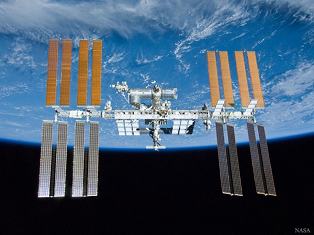
First launched into space in 1998, NASA’s International Space Station (ISS) is an engineering marvel. Costing close to US $100 billion, its construction required over 100 rocket and shuttle launches, plus 160 space walks, and the components were not all in place until 2011. Russia, the US, Canada, the European Space Agency and Japan all contributed, in what became a new collaborative approach to space exploration. The ISS is larger than a six-bedroom house and its systems are controlled by 52 computers – 3.3 million lines of software code on the ground support the 1.8 million lines of flight software code. Covering the area of a football field, the spacecraft is made up of living quarters, laboratories and robotic arms, and each module is connected by nodes. It is so large it can be seen with the naked eye from earth.
The main purpose of the station is to conduct research that cannot be explored anywhere else, such as the effects of microgravity on the human body and investigating the universe surrounding us. The robotic arms assisted in building the spacecraft module by module, after it had been launched, and they help astronauts go on spacewalks. The station gets its power from solar arrays attached to the edges of the craft. The spacecraft was first boarded by three astronauts in 2000. The ISS is now home to six permanent astronauts who live in orbit for four-six months each year.
The Mars Opportunity Rover

NASA’s Opportunity Rover has been exploring Mars since 2004, despite originally being launched with the purpose of fulfilling a 90-day mission. This project was originally green-lit in 2000, so the rover was designed with seven instruments, including cameras, a miniature thermal emission spectrometer, magnets, a rock abrasion tool, a microscopic imager and an alpha particle X-ray spectrometer. These tools are designed to allow the rover to investigate the terrain and air compositions, and send this data back to scientists. The fact that Opportunity is now in its 15th year of exploring Mars is amazing in itself – given it’s now the longest living robot on another planet. Opportunity and its twin Spirit were originally sent to opposite sides of Mars to explore the terrain and search for signs of past water and potential habitats, in case Mars was once like Earth. Since then, Opportunity has roved for 45 kilometres and sent more than 250,000 images back to earth. This mission has helped scientists collect evidence of ancient, habitable environments on Mars, to give them a better understanding of the planet.
The Mars Curiosity Rover and Sky Crane
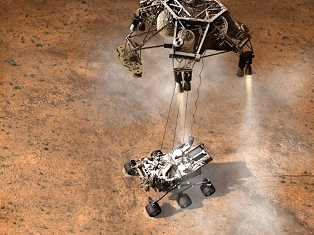
In 2012, Curiosity successfully landed on Mars with the intention of exploring the planet’s habitability on a long-term mission. This was the most sophisticated interplanetary probe ever created, with more than 7,000 scientists and engineers involved in its construction. One of the most challenging aspects of its launch was finding a place to have it land – the other rovers were secured inside a bag, which was inflated upon launch to protect the machines upon landing. Curiosity is five times the size of Opportunity, and a bag that big would have been torn apart during descent. In a marathon brainstorming session, scientists and engineers settled on the idea of creating Sky Crane to hover above Mars and lower curiosity down via a cable.
Fitted with the most advanced suite of scientific tools ever sent to Mars, Curiosity is using its built-in laboratory to analyse the composition of rocks and soil in the hopes of detecting chemical evidence of life, such as carbon. In a sample collected from its first drill, it found elements of sulphur, nitrogen, hydrogen, oxygen, phosphorus and carbon, which could potentially support life. Curiosity is also exploring Mars’ environment, including its weather and radiation emissions.
Chandra X-Ray Observatory

One of NASA’s “Great Observatories,” the Chandra X-Ray Observatory was first launched in 1999. Its purpose is to produce full-colour images of objects which are emitting X-ray light, so scientists can develop a better understanding of our universe. In 2007, the telescope monitored a galaxy 240 million light years away and helped astronomers realise the galaxy contained a type of exploding star which they had never seen before. The Chandra X-Ray Observatory circles the earth every two-and-a-half days; its elliptical orbit allows it to travel up to 140,000 kilometres away. It primarily focuses on collecting data about black holes, supernovae, starburst galaxies and exotic objects far from earth. It also has the capability to study foreign objects that cross its path spontaneously.
It has four pairs of mirrors which run perpendicular to the path of incoming light. As the light hits the top mirror in each pair, it filters down to the secondary mirrors, because two bounces are required before an X-Ray comes into focus. The X-Ray the travels down an eight-metre-long tube towards the telescopes scientific instruments, where the information is then sent back to earth to be analysed by scientists. The Chandra X-ray Observatory also contains devices called gratings, which can be used to filter the light and determine an object’s density, temperature, as well as its motion towards or away from the telescope.
Large Hadron Collider
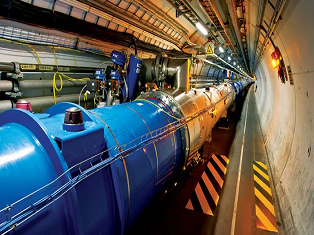
The world’s largest and most powerful particle accelerator was first used in 2008, despite scientists at CERN developing the concept for over two decades. It consists of a 27 kilometre circumference made of superconducting magnets, designed to accelerate the energy of particles as they pass through. It reuses the underground tunnel built for CERN’s previous large accelerator, Large Electron-Positron Collider, which was dismantled in 2000. This is for environmental reasons, such as minimal disruption to the landscape and using the earth’s crust as protection from radiation, as well as economic reasons; it’s more cost-effective than finding enough above-ground space to accommodate the machine.
This machine’s purpose is to help scientists discover more about the universe by smashing subatomic particles together at almost the speed of light. This will allow them to confirm the existence of particles they’ve predicted, discover new ones, and possibly create microscopic black holes. For example, the Large Hadron Collider led to the discovery of the Higgs boson, the final missing piece of Standard Model physics. Scientists are hoping this machine will help them discover how many dimensions there actually are.
3D Printing
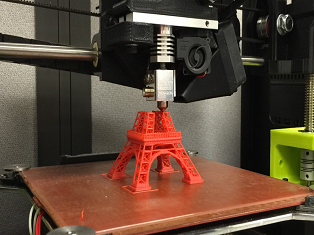
This technology was first developed in the mid-1980s; however, since then it has seen much advancement. At a very basic level, the process begins with the designing of an object via computer software to the correct dimensions. Spools of filament are fed into the 3D printer and turned into plastic; the object is then built layer-by-layer in a process known as additive manufacturing. However, many industrial-grade printers can use materials other than plastic – such as ceramic, brass and steel.
There are endless opportunities as this technology continues to develop, and its availability becomes more widespread. When the concept of 3D printing first came about, it was known as rapid prototyping because it was just used to make creating models easier for engineers. Now we have the ability to construct buildings, machines and furniture with one of these printers. Scientists are now looking into ways to engineer intricate food delicacies. There’s also the opportunity to generate biomaterials for the creation of organs and other body parts, something that would revolutionise the medical world. There are a few limitations to the technology, however. For example, the printer’s size determines the object’s size: you cannot manufacture a house using a regular sized printer. Additive manufacturing is also an incredibly slow process, which means mass production is not yet viable. The cost of these printers and the materials is incredibly high, and it’s currently impossible to achieve the same finish as an industrial machine would.
CT Scanners
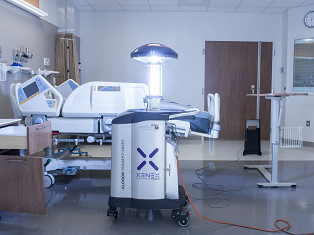
Computed Tomography is traditionally the process of using X-Rays to examine a specific part of the human body. Invented in 1972, this machine works by pin-pointing the area to be examined with a narrow X-ray beam, which is quickly rotated around the body to generate a cross-sectional image of the human body. These images, known as “slices,” are far more detailed than that of an X-ray. Once a number of successive images have been taken, the slices can be put together to form a 3D image of the human body. When the machine was first invented, taking these images was a slow process, one slice at a time. The newest machines can record up to 640 slices at a time; however it’s more common for machines to record between four and 320.
However, technological advancements have allowed this machine to be used for much more than the medical field. Industrial Computed Tomography allows engineers to capture the precise dimensions of external and internal structures, without destroying them. This opens the door for reverse engineering in a manufacturing setting: this process determines the measurements of an existing object to allow for mass production. It also allows for easier management of quality control, determining material posterity and ensuring internal contact points are made during assembly. There are still limitations, such as the cost and size of these machines, however this technology has the potential to change the engineering world.
LightStrike Germ-Zapping Robot
In 2010, the LightStrike was launched commercially to combat the spread of hospital acquired infections, as studies showed this was a leading cause of death in the US and throughout the world. This robot uses pulsed xenon lamps to produce flashes of germicidal UV light which destroys bugs in hard to clean places. The high-intensity UV light penetrates the cell walls of micro-organisms and fuses their DNA to kill them without making physical contact. Different pathogens die at different wavelengths, so this machine can be programmed to combat specific diseases: such as, the pathogens most commonly associated with hospital acquired infections, Ebola, Anthrax, HIV, and other communicable diseases. The disinfection cycle runs for approximately five minutes and the robot can clean 64 rooms per day without overheating. The UV-C light it emitted is highly dangerous for humans; however the light cannot travel through walls and glass, so it’s only harmful to humans who are in the room while it’s operating. As a safety measure, the robot is fitted with heat and movement sensors to automatically turn off if a human enters the room.
Bladeless Wind Turbines
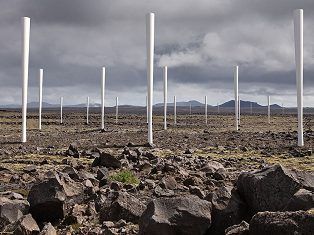
Wind is a major contributor to the generation of renewable energy, and reliance on it will only increase as fossil fuels continue to deplete. The most common way to harvest this resource is via wind turbines, which convert wind energy into electrical energy, as the movement of the blades fuel an electricity generator. The top-heavy nature of these machines means high-quality components are required for the blades to decrease the risk of structural damage. Therefore, the cost of producing traditional wind turbines is high.
A Spanish engineering start-up has developed bladeless turbines, which harness the vorticity of air. When wind passes through the cylindrical wind turbines, it becomes a spinning vortex which exerts force onto the cylinder and causes it to vibrate. The kinetic energy created by this cylinder is then converted into electricity via a linear generator. The lightweight design doesn’t have any gears or bearings, and it can produce electricity for approximately 40 per cent less than traditional wind turbines. It’s also less of a danger to birds flying near it. Currently, bladeless turbines are not as effective at generating electricity as traditional turbines; however, with time these machines will be adapted to increase their efficiency.
Sources:
http://www.washingtonpost.com/wp-srv/special/national/nasa-iss/
https://www.nasa.gov/feature/facts-and-figures
http://www.spacesafetymagazine.com/space-exploration/international-space-station/international-space-station-15-years-groundbreaking-achievements/
https://www.nasa.gov/audience/forstudents/5-8/features/nasa-knows/what-is-the-iss-58.html
https://www.nasa.gov/mission_pages/mer/overview/index.html
http://www.planetary.org/explore/space-topics/space-missions/mer-updates/2018/01-mer-update-opportunity-completes-14-years-of-exploring.html
https://www.space.com/17963-mars-curiosity.html
https://www.theguardian.com/science/2013/jul/28/curiosity-rover-descent-mars-nasa
http://www.wired.co.uk/article/large-hadron-collider-explained
http://cds.cern.ch/record/2255762/files/CERN-Brochure-2017-002-Eng.pdf
https://home.cern/topics/large-hadron-collider
https://www.space.com/26612-nasa-chandra-xray-observatory-15-years.html
https://www.airspacemag.com/how-things-work/how-things-work-chandra-x-ray-23580481/?all
https://www.britannica.com/topic/Chandra-X-Ray-Observatory
https://www.independent.co.uk/life-style/gadgets-and-tech/features/3d-printing-for-dummies-how-do-3d-printers-work-8668937.html
http://theconversation.com/explainer-what-is-3d-printing-and-whats-it-for-9456
https://www.nibib.nih.gov/science-education/science-topics/computed-tomography-ct
http://www.digitaleng.news/de/ct-scanning-a-new-way-to-look-at-parts/
https://www.allaboutcircuits.com/news/germ-zapping-robot-aims-to-make-hospitals-cleaner-and-safer/
http://sweetcrudereports.com/2018/01/08/wind-energy-innovations-bladeless-wind-turbines/
http://www.offshorewindindustry.com/news/vertical-bladeless-wind-turbines-future-wind
- Details
- Written by: Elyse Simich
Palm Island

In 2001, there was nothing off the coast of Dubai except for shallow gulf water. However, the city was becoming overpopulated quickly. To solve this problem, local real estate conglomerate Nakheel Properties used GPS precision to shape 94 million cubic metres of sand into a 17-frond palm tree-shaped island. Sixteen quarries throughout the UAE were dredged for rock, which forms a breakwater around the island to protect it from wind and waves. It took a decade for Palm Jumeirah to be fully completed, although residents began moving to the island in 2008. The trunk is made up of luxury hotels and malls; the fronds are lined with mansions. A six-lane underwater tunnel allows people to travel to the island from the mainland and the Middle East’s first monorail travels the length of the island. Two other islands are currently under construction.
Burj Khalifa
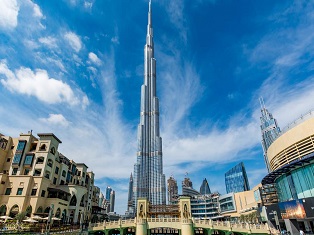
Officially the tallest free standing building in the world, this skyscraper is 828 metre high and has 163 stories. The biggest challenge engineers faced were strong winds, so they conducted over 40 wind tunnel tests, not only to determine how the building would be affected, but to ensure the safety of the cranes used to construct it. Built in Dubai, UAE in 2010, the building changes width as it gets taller in a bid to “confuse the wind,” according to global engineering firm SOM, who created the structure. This means wind vortexes cannot form, as they encounter a new shape at each tier of the building. The building has been engineered to withstand earthquakes and other natural disasters.
Kansai Airport
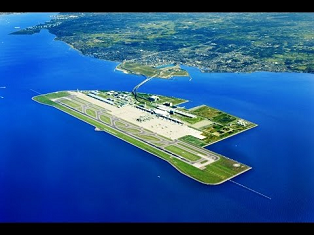
Located in Osaka, Japan, this was the first airport to be built on an artificial island. The project was created as a solution to overcrowding, as the city was too small to fit an airport on the mainland. One of the biggest challenges engineers faced was the clay found in the seafloor they intended to build on – it retains too much water to be a reliable foundation. To combat this, engineers utilised 1.2 million sea drains, a new technique used for sea-based stabilisation. Tubes were driven deep within the clay, filled with millions of tons of sand, and then removed. The columns of sand still act as drains within the clay, to stop the foundation becoming saturated with moisture and moving. 48,000 concrete tetrahedrons were stacked upon the stabilised seabed, with each one weighing 181 tonnes. Nearby mountains were excavated and approximately 161 million cubic tonnes of earth were poured into the gaps. It took three years for the seawall and base to be completed, before construction could begin on the airport itself.
The airport is an architectural wonder, built to reduce environmental impact and save money – blade-like deflectors line the ceiling, channelling air through the building and acting as a passive air conditioning system. Completed in 1994, it took three years and saw over 10,000 workers contribute to its construction. The island is 4 kilometres by 2.5 kilometres and became the world’s most expensive civil engineering project, costing US $20 billion.
Tokyo Sky Tree
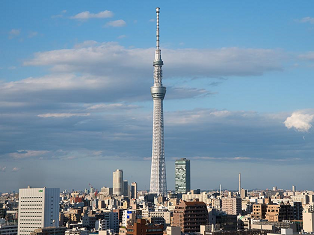
Engineers tasked with the construction of the 634 metre high-rise building faced many challenges while building Japan’s tallest building. They had to take into account not only the typhoons that strike Tokyo every summer, but also potential earthquakes as it is built on an active fault. Structurally, it features a reinforced concrete central column, which is separate from the outside steel frame – an adaptation of the design often seen in pagoda temples. Traditional Japanese building technique shinbashira was utilised, which sees the central column reduce sway by counterbalancing seismic waves.
Channel Tunnel
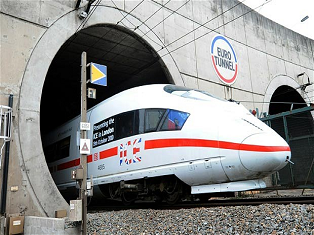
This 50.5 kilometre tunnel features the longest undersea portion in the world, coming in at 37.9 kilometres. Completed in 1994 after six years of construction, it cost approximately US $21 billion and required much problem solving from engineers. For example, they needed to ensure passenger safety, in case of a fire within the tunnel. So, engineers constructed a third, smaller tunnel in between the two full-sided tunnels, to act as an escape route during emergencies. There are also a number of passages that allow the trains to cross-over onto the other track. Eleven boring machines were used to dig the tunnel, collectively weighing over 12,000 tonnes – each one was as long as two football pitches.
Construction saw collaboration between British and French engineers, who had a competition to see who could reach the centre of the tunnel first: the British won. 13,000 workers were employed at the height of construction, and 10 people were killed while building the tunnel. The average depth of the tunnel is 50 metres below sea level, with the lowest point 75 metres down. The Channel Tunnel was included in the American Society of Civil Engineer’s “Seven Wonders of the Modern World” list.
Panama Canal
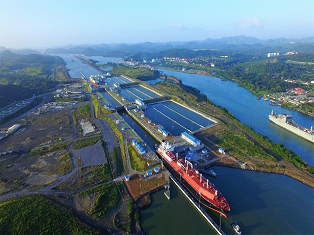
The French originally started this project back in 1880; however they failed because of poor design and high mortality from diseases such as yellow fever and malaria. So, the US took over and redesigned the endeavour in 1904, officially completing the project in 1914. Measuring 77 kilometres, this canal connects the Pacific and Atlantic oceans, allowing easier passage for ships. There were many challenges for engineers to overcome, such as the landmass being above mean sea level due to mountainous terrain, dense jungle, removing rocks and soil, and differences in tides. The Europeans believed canals should be built at sea level; however this would have involved much excavation and cost millions of dollars more. The Americans decided to utilise locks, which would raise and lower ships into the placid waters of the canal. Dams and spillways meant the water in this canal was better regulated than a strait in between two bodies of water, mitigating the issues brought on by the differences in tides.
Millau Viaduct
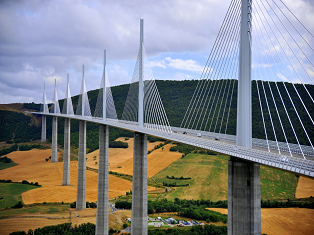
At 343 metres high, the Millau Viaduct is the world’s tallest bridge – it’s even taller than the Eiffel Tower. 18,000 tonnes of concrete were used to build its seven piers and the bridge cost a total of US $524 million to construct. The biggest marvel of this bridge is the short construction span of only three years from 2001-2004; builders were placed under enormous pressure to build it in less than four years; otherwise the French government would fine them US $30,000 per day. The bridge spans 2460 metres from France to Spain and carries between 10,000 and 25,000 cars per day.
Grand Canyon Skywalk

This glass bridge allows tourists to walk out onto thin air, 1219 metres above the Colorado River in the Grand Canyon. Its construction required over 453,000 kilograms of steel and 37,000 kilograms of glass to complete, with the total cost coming to US $40 million. Engineers had to undergo rigorous testing to ensure the structure could withstand the strong winds that come through the canyon; it has been designed to absorb vibrations. The foundation consists of eight support beams and the skywalk was assembled onsite, with the welding of the bridge taking four months to complete. A manipulator was designed to lift the 46 glass panels, each weighing 816 kilograms, into place. Three tuned mass dampers, which were specifically calibrated to meet the wind and weight requirements, were placed inside the horseshoe frame to make the bridge structurally sound.
Venice Tide Barrier
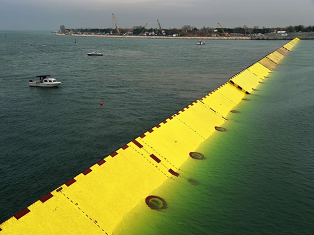
Despite construction beginning in 2003, this barrier is not yet complete. However the last of the giant floodgates designed to protect Venice from rising sea levels were built by a Croatian engineering firm earlier this year. In total there will be 78 gates forming four barriers at the three lagoon inlets of Lido, Malamocco and Chioggia. Each gate weighs 272 tonnes and measures 30 metres wide by 20 metres high, and five metres thick. The Electromechanical Experimental Module (abbreviated to MOSE in Italian) consists of over 18,000 tonnes of built-in steel, and is expected to have a 100 year lifespan.
Engineers have been faced with a number of challenges during this project’s construction, such as lowering the 23,000 tonne foundation into a lagoon. MOSE’s purpose is to only be deployed when it is necessary to do so; it will not stop tidal flow into the lagoon or cut Venice off from the ocean. The moveable barriers will sit beneath the lagoons surface during calm weather, allowing the gates to fill with water. However, when the tide rises, the water will be pumped out of the gates and replaced with air, so they rise to the surface and form a barrier capable of stopping water surges as high as 2.7 metres. This project will cost approximately US $6.5 billion in total.
Itaipu Dam

The world’s second-most powerful dam is located on the border of Brazil and Paraguay on the Paraná River. It was constructed in 1984, as a solution to projected energy crisis in Brazil due to its rapid population growth. The government decided to utilise the vast expanse of water surrounding Brazil and turn it into hydroelectricity. The dam took seven years to construct and provided jobs to 40,000 construction workers during this time. It generates enough energy to service 93% of Paraguay and 20% of Brazil.
The most challenging part of this project for engineers was changing the course of the Paraná River before construction could begin. It took three years for them to carve a 2 kilometre long, 91 metre deep channel for the river to divert through – fifty million tonnes of earth and rock had to be moved in the process. The dam wasn’t to be supported by any physical or natural features, so it had to weigh at least 61 million tonnes to withstand the water pressure, which was estimated to be the equivalent of 4000 bulldozers.
Trans-Siberian Railway
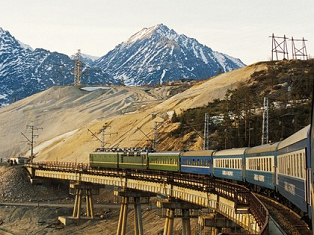
The world’s longest railroad took 25 years to construct. Completed in 1916, the Trans-Siberian Railway spans Russia from east to west for 9,198 kilometres; even today it’s the only way to cross the country, aside from flying. The idea was conceived by Tsar Alexander III; however the majority of its construction took place during Tsar Nicholas II’s reign, and stemmed from the fear of losing trade prospects. 90,000 labourers were contracted and the railroad was constructed simultaneously from both the west (Moscow) and the east (Vladivostok), working towards the centre. Challenges faced were the extreme weather conditions and the use of primitive hand tools, such as shovels, wheelbarrows, saws and axes to complete the labour. Budget constraints meant engineers avoided commercial centres, narrowed foundations and put down a reduced number of sleepers per kilometre. 12 million railroad sleepers were placed during construction and 100 million cubic metres of rock was moved. Line electrification began in 1929, but wasn’t completed until 2002.
Today, 30 per cent of Russia’s exports are transported via the railroad and trains carry an average of 250,000 containers to Europe each year. Not only does it link Moscow to Vladivostok, but has branching lines to China, North Korea and Mongolia. The 8 day journey spans 87 cities, 16 rivers and 8 time zones.
Bailong Elevator
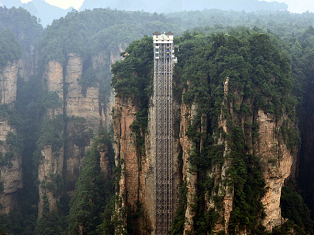
The tallest elevator in the world is located in the side of a cliff in China’s Wulingyuan scenic area. Constructed between 1999 and 2002, the Bailong Elevator’s shafts and tunnels were carved from a quartz sandstone column in the heritage-listed area, despite protests from environmentalists. Made of glass, it offers dizzying views to passengers, as it carries them 326 metres up the sandstone column to the top of a mountain range. 154 metres of the lift are embedded into the column, and the remaining 172 metres are set into exposed steel and other components. The journey takes just under two minutes, with lift cars running at three metres per second, taking up to 50 passengers at one time. Earthquake detectors are fitted into each car, to allow for a quick evacuation in case of an emergency.
Sources:
https://interestingengineering.com/5-of-the-worlds-greatest-feats-of-engineering
https://edition.cnn.com/travel/article/engineering-feats/index.html?gallery=10
http://www.topengineer.com/news-detail/the-world-s-top-10-most-amazing-engineering-feats//
https://10mosttoday.com/10-most-amazing-engineering-achievements/
https://www.iveyengineering.com/modern-engineering-marvels/
https://list25.com/25-most-monumental-feats-of-construction-in-history/
https://www.cntraveler.com/stories/2015-11-23/the-real-story-behind-dubai-palm-islands
https://www.theguardian.com/travel/2008/apr/26/travelnews
https://www.som.com/projects/burj_khalifa__structural_engineering
https://interestingengineering.com/kansai-airport-the-worlds-longest-airport
http://global.ctbuh.org/resources/papers/download/2624-structural-design-and-construction-of-the-foundation-of-tokyo-sky-tree.pdf
https://www.engineering.com/Library/ArticlesPage/tabid/85/ArticleID/79/The-Channel-Tunnel.aspx
https://www.telegraph.co.uk/travel/destinations/europe/france/articles/The-Channel-Tunnel-20-fascinating-facts/
https://www.eurotunnel.com/uk/build/
https://hardyservices.co.uk/blog/seven-wonders-civil-engineering-world-itaipu-dam/
http://www.armyengineer.com/history/panama/engineers/How_Canal_Works/How%20the%20Canal%20Works.html
https://www.motiondrivesandcontrols.co.uk/impressive-feats-engineering-3-panama-canal/
https://www.istructe.org/blog/2016/millau-viaduct-a-triumph-of-engineering
http://allthatsinteresting.com/millau-viaduct
http://www.grandcanyonskywalk.com/wp-content/uploads/2012/02/Skywalk-Facts-2012.pdf
http://abcnews.go.com/WNT/Travel/story?id=2957548&page=1
https://e360.yale.edu/features/rising-waters-can-a-massive-sea-barrier-save-venice-from-drowning
https://science.howstuffworks.com/engineering/civil/how-the-venice-tide-barrier-project-works.htm
https://www.mosevenezia.eu/mose/?lang=en
https://www.newcivilengineer.com/world-view/the-gallery-the-62m-giant-flood-gates-designed-to-save-venice/10028977.article
http://www.cannon-cannon.com/amazing-engineering/amazing-engineering-itaipu-dam/
https://www.nesgt.com/blog/2017/03/top-engineering-achievements-trans-siberian-railway
http://factsanddetails.com/russia/Education_Health_Transportation_Energy/sub9_6d/entry-5156.html
https://www.britannica.com/topic/Trans-Siberian-Railroad
https://interestingengineering.com/bailong-elevator-dare-ride-insanely-tall-outdoor-lift
- Details
- Written by: Quintus Potgieter
The scientific world has lost one of its modern day pioneers. Stephen Hawking, a modern cosmologist, passed away at age 76, on the 14th of March 2018. Hawking’s most notable work, “A Brief History of Time”, sold over ten million copies and he is remembered for his work on general relativity and black hole theories.
His impact on engineering is not lost either; Hawking popularized communication devices that aid those who are unable to speak. Hawking developed Amyotrophic Lateral Sclerosis (ALS) at the age of 21 - a motor-neuron disease. After a bout of pneumonia, and due to the effects of ALS, doctors had to perform a tracheotomy on Hawking; he lost the ability to speak. The engineered technologies that gave him his voice back became wonders of biomedical engineering.

Hawking started out with a speech synthesizer called CallText 5010. It was run by an AMD processor.
He was eventually persuaded to utilize Intel’s technology after the CEO asked him if he wanted to use a ‘real computer’. Since then, Intel has mobilized the ‘Intel User Experience Engineers’ to regularly update Hawking’s communication system. It was Intel who provided Hawking with his distinct voice.
Engineer, David Mason helped fit Equalizer and Speech Plus software to Hawking’s wheelchair. The software was developed by a company known as Words Plus. The software needed a clicker pressed to articulate speech, but Hawking eventually lost the use of his hand. Thereafter an infrared sensor on his glasses was able to detect when he twitched his cheek muscle.
As Hawking’s condition deteriorated he found it increasingly difficult to type words efficiently; this limited his ability to communicate ideas and write books. In response Intel’s engineers tested a number of new methods, but seemed stumped.
Eventually predictive text entered our lexicon of terms and has become a feature on our smartphones. It involved a great deal of trial and error, but allowed Hawking’s communication to speed up. He used word predictors by popular keyboard app maker SwiftKey.
The technology was fleshed out and dubbed the Assistive Contextually Aware Toolkit. Hawking began to use shortcuts and menus that had some pre-predicted tools; it can cut down typing time by half.
Lama Nachman is an Intel Fellow and the Director of the Anticipatory Computing Lab at Intel Corporation. After his death she summed up the challenging biomedical engineering endeavors that were pioneered with and for him:
“Working with Stephen was the most meaningful and challenging endeavor of my life. It fed my soul and really hit home how technology can profoundly improve people’s lives. We will continue developing and refining this technology in the open source community in his honor, to reach all people in need. This is something he cared about deeply.”
Hawking had the option to change the sound emitted from his communication device, but he chose to keep his iconic, robotic voice. It became synonymous with the man; a man with an incredible brain, enormous courage and boundless determination.
Works Cited
Farrell, Nick. “Intel Remembers Giving Stephen Hawking His Voice.” Fudzilla, www.fudzilla.com/news/processors/45820-intel-remembers-giving-stephen-hawking-his-voice.
- Details
- Written by: Quintus Potgieter
Cruise ship holidays are growing in popularity. What’s not to like? Breakfast buffets. All-you-can-eat pizza and burgers around the clock. Restaurant dinners. Drinks. Great sea views. As the appetite for cruise holidays intensifies, the cruise companies are lengthening their pre-existing liners.
Instead of building new ships they are slicing the existing ones in half and inserting new middle sections. This feat of engineering has become standard practice for profit-turning cruise ship companies. MSC Cruises lengthened four of their fleet back in 2014-2015 in one of the biggest operations of its kind.
And Silversea has just performed its first cruise ship stretching operation this year. The Silver Spirit has been split in half in readiness for a 15-metre addition. The operation will be completed by May 5th 2018 – taking a total of 450,000 hours to complete – and 12% growth. Once the ship has been completed it will embark on a 7-day journey between Rome and Barcelona.
New builds cost many hundreds of millions whereas MSC Cruises’ latest lengthening operation only cost the company US$227 million. It is far cheaper to lengthen ships than build new ones.
One of the challenges for engineers is to meticulously fit and maneuver the new section into the designated space; to ensure it aligns perfectly with the other halves. Once the new section is welded into place it is painted to blend in with the older sections. The Silver Spirit’s renovation includes a complete overhaul of the interior (the old furniture is being donated to charity). The new additions, in essence, become indistinguishable and the ships are sent back out to sea.
The companies rely on this added capacity to facilitate an increase in the number of passengers, and thus create more profit.
The lengthening of ships for profit is a modern exercise, but it is an old practice. In the past ships were lengthened to allow for more engine room; the first such operation occurred as early as 1871.
Works Cited
“Cruise Industry: Why Do Cruise Lines Cut Their Ships in Half? -.” - The First Online Cruise Magazine for the Middle East and South Africa., 29 Nov. 2017, cruisearabiaonline.com/2014/09/22/cruise-industry-why-do-cruise-lines-cut-their-ships-in-half/.
Mclaughlin, Kylie. “Silversea Cruise Ship Silver Spirit Cut in Half in Lengthening Project.” Stuff, www.stuff.co.nz/travel/cruising/102243159/silversea-cruise-ship-silver-spirit-cut-in-half-in-lengthening-project.
- Details
- Written by: Quintus Potgieter
The 3D printing industry is a special one. A 3D printer has several necessary components: heat beds, bed surfaces, the printing materials (resins or filaments), extruders, hobbed gear, and more. Depending on the kind of printing materials engineers use, different printers are necessary. These several technological parts that make up a 3D printer can be sourced from around the globe from several manufacturers.
Thus, it takes quite a lot of engineered parts to make up an SLA workshop. What is a SLA workshop, you might ask?

It is a 3D printing facility that utilizes the printing method known as stereolithography (SLA) - less commonly known as additive manufacturing. Companies are building 3D printing factories, turning the advent of newer, improved 3D printing into businesses.
A SLA workshop utilizes the kinds of 3D printers that convert liquid materials into solid parts by printing them layer by layer using lasers or light sources. Using light sources to turn liquid materials into solids is done through a process known as photopolymerization.
It is known to be the most accurate method of 3D printing.
YouTube channel ‘Strange Parts’ went to investigate how Chinese 3D printing company Lexcent prints its parts.
Lexcent uses resins provided by a company in Europe named DSM Resins & Functional Materials. They are the leading global supplier of high-quality resins for 3D printing and other liquid material based applications. The lasers at Lexcent are manufactured in Germany.
The company offers a printing service. All you do is place an order, and their facility works around the clock to print a design that is sent to them for a nominal price.
It is important for companies doing high-profile additive manufacturing to have high-quality resins and precise printers. If any cutting of corners occurs in the additive manufacturing industry, printed solids can come out with rough exteriors or have uneven edges.
Thus, Lexcent has to regulate temperatures within its facility to ensure the printers do not overheat - if the resins are exposed to temperatures of 104 Fahrenheit or over, the items will not print properly. The company also has to utilize different colored lighting so that no white light interferes with the SLA printing method which utilizes its own laser-focused light.
Nonetheless, once a print has been completed, parts are sent into a workshop for polishing. This ensures that any rough edges are eliminated. Then, the parts are shipped off to the paying customers.
Each SLA 3D printer at Lexcent’s headquarters costs around US$55,200 - the company has eight of them. They also have 13 CNC machines for heavier duty additive manufacturing; they make titanium alloys, aluminium alloys and harder plastics.
Fused Deposition Modeling
Another company making their bread and butter off 3D printing is Voodoo Manufacturing. They have introduced something called the ‘Large Format 3D Printing’ service. Customers who require large scale, industrial-sized prints can send it to Voodoo Manufacturing - their printer, considered the biggest in the world, prints a customer’s file. They have added 10 Raise3D N2 Plus Printers which uses a form of printing called Fused Deposition Modeling.
The Fused Deposition Modeling 3D printing method uses fused filament fabrication. Instead of solidifying liquids, a continuous filament is melted and pushed out of a nozzle. The filament eventually becomes the solid it was instructed to print.
In many universities there are now 3D printing facilities which allow students to become familiar with these printing technologies, they often print t their own CAD files. And the emergence of 3D printing businesses allow customers to have rapid prototyping and additive manufacturing work done at reasonable prices.
Works Cited
“Voodoo Manufacturing Introduces Large Format 3D Printing Service.” Advanced Manufacturing, 21 Feb. 2018, advancedmanufacturing.org/voodoo-manufacturing-introduces-large-format-3d-printing-service/.
- Details
- Written by: Quintus Potgieter
One of the islands in the Japanese archipelago is Hokkaido. Sapporo, a city on the island, is burdened by snow; it costs 20.4 billion yen (US$190 million) on snow removal every winter.
Local government removes snow on state owned properties and streets, but private property owners are on their own. Alarmingly, it is not uncommon for a meter of snow to fall overnight in Sapporo.
From time to time the air force is required to perform rescue operations on houses that have been snowed in to the point of catastrophe. After all 1 cubic meter of snow weighs 500kg. This weight has resulted in many roof collapses in the suburbs of Sapporo.
A collection of technologies is both publicly and privately utilized to eradicate snow from the houses and streets of Sapporo and in Japan as a whole. Airport runways have to be cleared of snow and airplanes sprayed with anti-ice chemicals, for example. Impressively, Japan never cancels flights due to the cold.
Historically, Japanese cities have used warm groundwater and sprinkler systems to spray the roads and dissolve the ice. And back on the streets of Sapporo, snow plow trains are used to clear them of snow.
3,355 miles (5,400 km) of snow is cleared from Sapporo overnight. The work is done from midnight onward so that traffic is not impacted during the morning rush hours. Snow gutters have been added to the infrastructure of Japanese towns and cities, including Sapporo. These gutters dump snow into rivers.
The city has 47 weather stations that monitor temperatures and generate data on weather conditions. These help prepare the government snow removal teams. Data is checked hourly to get a real-time picture of weather patterns - sometimes lives depend on it.
After a heavy snowfall rotary snow removers flatten and transfer snow into dump trucks. Snow removal trucks are used to dump 20 million cubic meters of snow; this creates 10 to 20 meter high mountains at snow dump sites every winter.
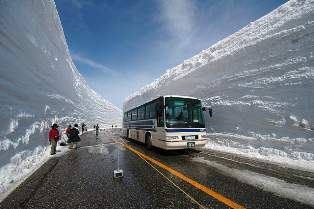
For the safety of human beings, faced with iced up roads, there are gravel stations in Sapporo. 1,200 boxes filled with gravel bags are peppered across the city. The gravel is used to spread across the icy ground; it makes walking in the city less hazardous.
Further afield, near the city of Toyoma is Mount Tateyama, one of Japan’s holy mountains. The road leading up to the mountain is known as Snow Canyon. Extensive snow plowing is required to keep it clear for traffic; it creates mighty snow walls as seen in the picture.
The Japanese Society of Mechanical Engineers has indicated that an automated snow clearing robot is to be developed; it would work constantly to clean construction areas. This is technology that may indeed be used more widely eventually. Presently 3,000 people are employed though the night in Sapporo, to eradicate snow from the city. An automated roof snow-clearing robot has also been proposed, to assist the elderly who sometimes injure themselves trying to remove snow from their roofs.
Clearing snow in Japan is one of the most interesting engineering challenges in the world, and every year the Japanese improve the way they tackle it.
Works Cited
“Japanology.” YouTube, YouTube, www.youtube.com/channel/UCd4V3I7nYybm4nKwONcOSdA/videos.
Nobel, Justin. “How to Clear a Path Through 60 Feet of Snow, Japanese Style.” Atlas Obscura, Atlas Obscura, 10 Mar. 2017, www.atlasobscura.com/articles/snow-canyon-japan.
- Details
- Written by: Quintus Potgieter
Governments may be responsible for the slowing down of technological progress around the world. Government shutdowns and Presidents who refuse to leave their seats despite alarming corruption scandals impact negatively on the advancement of technology in their countries.
Puerto Rico, devastated by a hurricane in 2017, only now, over 140 days later, has restored electricity to 75 percent of its inhabitants. In the modern age of engineering it is baffling that a U.S. colony has been incapable of restoring power to their island in the five months since the hurricane.
Elon Musk offered to send Tesla’s utility-sized Powerwall batteries to help with the Puerto Rican crisis, but no credible news of a handover was ever reported. Then, on Sunday evening the 11th of February 2018, an explosion at an electric substation plunged 400,000 power customers back into darkness in Puerto Rico.
VIDEO: @Bomberos_de_PR logran controlar incendio en subestación @AEEONLINE Monacillos en Río Piedras. https://t.co/uWih2e8Yvv pic.twitter.com/qyVcmO8d0l
— NotiUno 630 (@NotiUno) February 12, 2018
The colony’s government has now announced that the state-owned Puerto Rico Electric Power Authority (PREPA) would be privatized. Its power infrastructure is almost 30 years older than the American industry average. The U.S. Army Corps of Engineers said that full power will be restored by May.
New technological answers to ensuring longer uptime for electricity companies and their substations are being developed; Puerto Rico would certainly benefit. Private companies may be better able to find engineering solutions.
Even in tough economic times, private enterprise is able to emerge with incredible feats of engineering that paint a sunny picture of technological progress in the world. Elon Musk’s tweeted gesture of offering to help Puerto Rico is a bigger gesture than the Puerto Rican government was able to muster. Many Puerto Ricans spent Christmas in the dark.
Wider gap between private and government

One of the more obvious disparities between governments and the private sector is arising in one of the most unexpected industries; the aerospace engineering industry. Musk’s SpaceX Heavy Falcon launch last week showed how much more efficient privatized space companies are (when compared with previous government-funded launches).
In the United Arab Emirates, there are calls for private sector and government cohesion. Saeed Al Gergawi, the Program Director of the Mohammed bin Rashid Space Center’s Mars 2117 program, said:
“As governments try to catch up to private industry, it is vital to ask how they will be able to set the right policies and governing strategies for new technology.”
Government and company attempts at collaboration make sense. NASA and SpaceX engineers will be working together in upcoming Mars Missions and the United Arab Emirates desires a similar outcome for their space missions.
While collaboration efforts are becoming agenda items in parts of the world, privately owned engineering enterprises steam ahead. Amazon, Google, and Apple are world leaders in technology development that governments will one day rely on.
Works Cited
Hoyos, Joshua. “Puerto Rico Governor Announces Privatization of State Owned Power Company.” ABC News, ABC News Network, abcnews.go.com/US/puerto-rico-governor-announces-privatization-state-owned-power/story?id=52533378.
Person. “Closing the Technological Gap between Government and Private Industry.” Arab News, Arabnews, 28 Jan. 2018, www.arabnews.com/node/1234736.
- Details
- Written by: Quintus Potgieter
Chances are, if you live in the colder countries of the world, you’ve had to de-ice something in your life. De-icing is critical - the safety and usability of an engineered product often depends on it.
Engineering in the aviation industry is a point in case. Airports are an interdisciplinary hub of engineering activity as are the planes; minutes before a plane takes off it has to go through the process of de-icing.
The wings and the tail of the aircraft need particular attention - they play an integral role in the aerodynamics of an airplane. If a plane flies into cold temperatures with no de-icing, extra weight burdens the wings. This video illustrates the process of de-icing.
In Chicago, Southwest Airlines had to cancel flights because of a shortage of de-icing fluid - 200 flights were affected.
The pitfalls associated with ice build-up on aircrafts have been highlighted in Russia this week. First responders found a grisly scene on Sunday the 11th of February 2018. A plane from Moscow, flying to Orsk, crashed soon after takeoff; 71 casualties were reported. Experts say that icing may have caused the anti-ice system to collapse, resulting in ice forming in the engine. These claims are still unverified; but experts agree that improper de-icing may have caused issues.
Inadequate de-icing has been the cause of Russian plane crashes before. In 2012 failure to de-ice a passenger plane before takeoff led to a crash that led to 31 casualties. Experts suggest the same may have occurred with Flight 6W 703. However, engine fire, speed sensor failure, and pilot error were also given as possible reasons for the crash.
Aviation authorities, talking to Kommersant newspaper, described the plane’s attempt to ascend:
“Having climbed to an approximate altitude of 1,800 meters, at a speed of about 600 kilometers per hour, the plane suddenly nosedived to an altitude of 1,500 meters, climbed again, and then fell on the ground.”
The newspaper also claims that the pilot had refused a de-icing procedure before takeoff.
Works Cited
“Plane Crash Kills 71 near Moscow: This Is What Is Known about the Disaster.” RT International, www.rt.com/news/418490-saratov-airlines-crash-summary/.
Sudakov, Dmitry. “Experts Name Reasons That Led to the Crash of the An-148 near Moscow.” PravdaReport, Pravdareport, 12 Feb. 2018, www.pravdareport.com/hotspots/crimes/12-02-2018/140002-an_148_crash-0/.
- Details
- Written by: Quintus Potgieter
From the 9th to the 25th February this year the world will have access to a visual buffet of snow sports; the Winter Olympics is to be hosted by South Korea’s PyeongChang. Fans around the world will be cheering on their respective countries’ athletes. Also to be lauded, however, are the engineers who work behind the scenes; the smooth running of the Games is frequently their responsibility.
It started with the Olympic Torch Relay; technology played a bigger part in this tradition than ever before.
Robots...robots everywhere
Leading up to these winter Games (on the 12th December, 2017); on the 41st day of the Relay, a non-human carried the torch. Robot HUBO has become the first Olympic torchbearer in history.
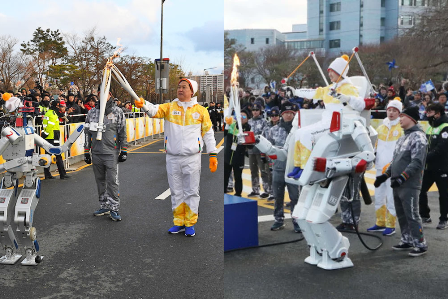
HUBO is a humanoid robot who was put through his paces; his first task was to drive a vehicle to an obstacle course. (His passenger was Dennis Hong, the Professor of the project.) When they arrived HUBO carried the flame towards an obstacle that lay before him.
Thereafter, he went on to demonstrate his usefulness as a rescue operation robot; HUBO drilled a hole in a wall; a hole through which he passed the Olympic torch.
The torch was then handed to a 14-year-old aspiring engineer who sat atop a human-operated-robot named FX-2. Professor Hong explained that the robots involved in this Olympic Games showcase how far robotics has come; they also reveal what we can expect in the future.
During the actual Games there will be 85 robots hard at work. Not all will be like HUBO, there will be 11 robot types assisting with a range of tasks. Some will clean floors, others will deliver things, and those with linguistic talents will offer directions to the spectators - in Korean, Chinese, Japanese and English.
Some of the robots even have creative ability; they will paint murals on the venue walls.
These robots are all controlled by the engineers at the Korean Advanced Institute of Science and Technology (KAIST).
Constructions, slopes, and snow
Korea’s largest steelmaker, Posco, contributed to the construction of facilities wherein the Games will be held; they have built the “International Broadcasting Center, media residence” and the “Gwandong Hockey Center”.
All in all, twelve facilities will be utilized during the Games, making these Winter Olympics the largest ever. Six older facilities have been refurbished and six are newly constructed. South Korea has also been congratulated for completing all necessary construction six months in advance of the Games.
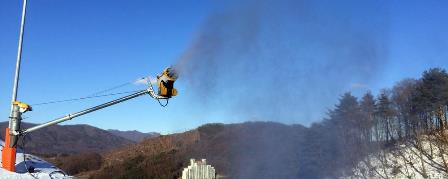
TechnAlpin is the company responsible for the condition of the snow on the slopes. It has also assisted in the upgrade of the ‘snow-making systems’ at the two main venues. These venues will host the ‘skiing, alpine, snowboard and freestyle’ competitions.
TechnoAlpin installed the original systems back in the 1990s; now they have been upgraded to work around the clock during the Winter Olympics. 250 snow guns will spread snow around the various courses; they will be powered by three pumping stations and overseen by snow-making consultant Davide Cerato.
CEO of TechnoAlpin, Erich Gummerer said: “We are very proud to have been entrusted with providing guaranteed snow for the Winter Olympic Games in Pyeongchang.”
In conclusion, all of us at the Engineering Institute of Technology would like to wish all competitors the best of luck. We also earnestly hope that the Games can indeed be a time of friendly rivalry and healing between nations. And finally we congratulate and thank the engineers and technicians whose hard work makes such an event possible.
Works Cited
Herald. “Posco's Premium Steel, Engineering Solution Used for PyeongChang Olympics.” The Korea Herald, 20 Dec. 2017, www.koreaherald.com/view.php?ud=20171220000826.
Tousignant, Lauren. “A Robot Carried the Olympic Torch in South Korea.” New York Post, New York Post, 12 Dec. 2017, nypost.com/2017/12/12/a-robot-carried-the-olympic-torch-in-south-korea/.
- Details
- Written by: Quintus Potgieter
The Winter Olympics are upon us. The opening ceremony airs on February 9th, 2018. Over the course of the competition in Pyeongchang, South Korea, the feats of many engineers will be on display too. In fact it will be hard to find an event untouched by engineering. (Some of the athletes themselves even have engineering degrees.)
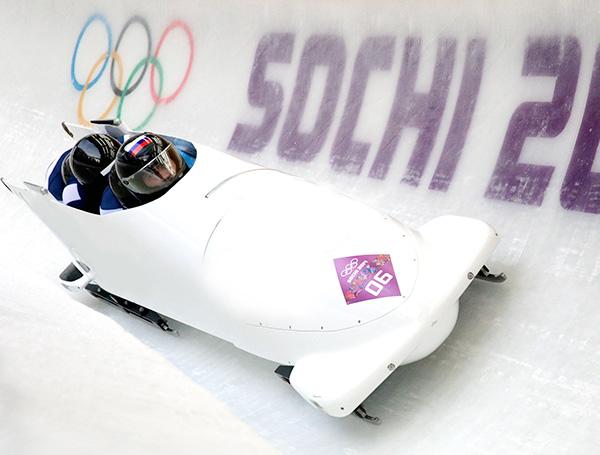
One of the competitions at the Winter Olympics that should get pulses racing is bobsleigh. It is also known as Formula One on Ice because the engineering teams behind Formula One vehicles design the bobsleds.
Reuters spoke to Rachel Blackburn, the engineer who has presided over Britain’s bobsled program since 2003. She works for supercar manufacturer McLaren.
She says car companies have historically become involved with bobsleigh competitions because it is a fun way to test aerodynamics. It helps to create data that may help them engineer other products for other industries. She told Reuters:
“Applied engineering is far more interesting than the pure stuff, so when it’s applied to something that’s fun and exciting it does make it a lot easier to solve the problems. There is Americas Cup, sailing, Formula One and the high speed ice sports as well. It’s the same concept. In the skeleton we’re looking at chassis dynamics, it’s not dissimilar.”
BMW, who have been hard at work designing the most premium bobsled for the Pyeongchang Winter Olympics, have been utilizing their wind tunnels - normally used for cars - to improve their bobsled. These days, however, before creating the prototype bobsled a round of computer simulations occur.
Holger Gau, BMW expert for 3D simulation methods told The Drive.com:
“We can optimize the bobs here in exactly the same way as we optimize our cars. We look at turbulence, analyze pooling regions and use appropriate shape changes - or changed seating positions - to try and minimize resistance. We use high-performance software tools to evaluate the aerodynamics of the combination of the bob and the team, and to optimize this virtually. Then the verification and fine-tuning takes place in the wind tunnel. It’s all about finding the optimum way to interlink the advantages of both worlds - digital and real-time in the wind tunnel.”
The times are a-changin?
Whilst the advent of 3D printing (rapid prototyping) vastly improves the manufacturing process and end product efficiency of bobsleds, there is one element of the vehicle that is hampering its innovation.
The chassis is a steel chassis. Thus, whilst the body and other elements can be rapidly prototyped, the chassis is still made from steel. Blackburn says:
“The fact that we still limit things to steel makes it quite a lot trickier for small nations now to get things made, especially to the precision that skeleton sleds require given the speeds and the temperatures they are going through.”
Whilst steel innovation may be painstaking, the same cannot be said for the bobsleigh course. Researchers at Purdue University in the US suggest that instead of iced bobsled tracks the future material for the course could be plastic. And this innovation may be introduced soon after these Winter Games.
Jan-Anders Mansson, a Professor in Materials and Chemical Engineering, and the Director of the Composites Manufacturing and Simulation Center at Purdue University, explains that the bobsled tracks are used only rarely. And they are expensive. According to PHYS.org the track built for the Turin Olympics in 2006 cost US$100 million. A plastic course, today, would only cost US$5 million.
Thus, Mansson conducted three years of research into ‘ultra-high molecular weight polyethylene’. He found that when the plastic was coated with a light spritz of water over a kilometer track of the plastic, it could produce the exact kind of conditions bobsleds need to perform.
Talking to PHYS.org, Mansson said the polymer was also self-healing and would not be fatally damaged by bobsleds passing over it. He says the discovery could open the sport up to children around the world. He said:
“The goal for any sport is to get kids in there and they start to compete, and the interest grows. If you do this not with ice but with plastic that has the same properties, you can have summer bobsledding, family bobsledding and even large events in warm countries.”
Works Cited
Bartosiak, Dave. “BMW Designs Bobsleigh for German Olympic Team.” The Drive, 9 Jan. 2018, www.thedrive.com/sheetmetal/17515/bmw-designs-bobsleigh-for-german-olympic-team.
“Future Bobsled Competitions May Be Sliding toward Plastic Ice.” Phys.org - News and Articles on Science and Technology, phys.org/news/2018-01-future-bobsled-competitions-plastic-ice.html.
Rutherford, Editing by Peter. “Formula 1's Bobsleigh Input Helps Make an Ice Runner.” Reuters, Thomson Reuters, 8 Jan. 2018, www.reuters.com/article/us-olympics-2018-bobs-f1/formula-1s-bobsleigh-input-helps-make-an-ice-runner-idUSKBN1EX17H.
- Details
- Written by: Quintus Potgieter
New data generated from the U.S. Department of Transportation has revealed that more than 54,000 American bridges are structurally deficient. America has 612,677 bridges.
Americans cross these bridges 174 million times daily.
One in three bridges are in need of repair, and one in three Interstate highway bridges have also been flagged as needing maintenance.
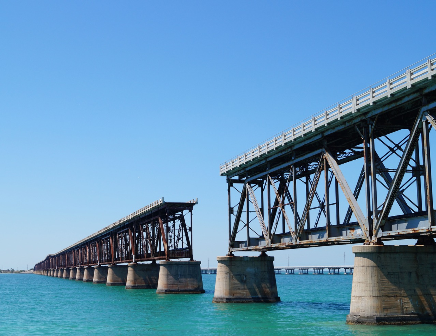
Dr. Alison Premo Black, Chief Economist for the American Road & Transportation Builders Association, who led the research, said that it would take 37 years, at the current rate of repair, to fix or replace structurally deficient bridges in America.
The figures were released just in time for the President of the United States Donald Trump’s State of the Union address. In the address, he suggested that what America needs is a US$1.5 trillion in investment into infrastructure in the next decade. President Trump said:
“Together, we can reclaim our great building heritage. We will build gleaming new roads, bridges, highways, railways, and waterways all across our land.”
President Trump has encouraged Congress to stimulate the budget for the infrastructural maintenance required to fully restore America’s infrastructure. Jason Lange, a reporter at Reuters, says that the situation is not as bad as President Trump asserts. Lange said:
“The view that roads, bridges, other pieces of U.S. infrastructure are failing, they’re crumbling - it’s a bit overblown. We’ve analyzed federal data on highway bridges; there’s more than 600,000 of them. And, about just under 9% are deemed structurally deficient, which means, they need repairs. That sounds like a large number, but actually, it’s been falling for decades. It was above 20% in the early 1990s.”
He also says that only 4% of the bridges that see the highest number of daily crossings are in need of repairs – a fairly low number. But the bridges that have failed in the U.S. have reportedly been those with the least daily crossings.
How to keep the built environment in the U.S. structurally sound is complex.
Historical infrastructural shortcomings
In 2007, with the collapse of Mississippi’s I-35W bridge, it was evident that America had a crumbling infrastructure problem. The collapse caused the deaths of 13 people.
When Hurricane Harvey descended on the U.S. in August 2017, America’s infrastructure shortcomings were highlighted once again. You can read our report here: Hurricane Harvey: Engineering industries confront the flooding and infrastructure needs for the future. Floods due to bad storm water draining is something that New Orleans still struggles with to this day - even after the lessons supposedly learned after Hurricane Katrina.
It has been a problem that has persisted, and is something that President Trump has promised he would rectify. The American Society of Civil Engineers has asserted that water facilities may need more attention than bridges in the short-term.
The silver lining: engineers and industry workers will be employed in the next ten years - working to strengthen America’s infrastructure. There may not be a trillion dollars of investment, but what engineers can be sure about, is that they will share in billions of dollars in infrastructure investment in the next decade. It is something America sorely needs - both Democrats and Republicans agree about that.
Works Cited
American Road & Transportation Builders Association. “Over 54,000 American Bridges Structurally Deficient, Analysis of New Federal Data Shows.” PR Newswire: News Distribution, Targeting and Monitoring, 29 Jan. 2018, www.prnewswire.com/news-releases/over-54000-american-bridges-structurally-deficient-analysis-of-new-federal-data-shows-300589542.html.
Lange, Jason, and Katanga Johnson; “Crumbling Bridges? Fret Not America, It's Not That Bad.” Reuters, Thomson Reuters, 31 Jan. 2018, www.reuters.com/article/us-usa-trump-bridges/crumbling-bridges-fret-not-america-its-not-that-bad-idUSKBN1FK0J0.
- Details
- Written by: Quintus Potgieter
The largest manufacturing plant in the world is in Wolfsburg, West Germany. It is a car manufacturing plant that belongs to none other than Volkswagen. It covers an area of 6.5 million square miles. It is so vast that employees are able to cycle around the company’s main headquarters.
The houses surrounding the factory are filled with Volkswagen employees, and whoever else lives there is in some way or another associated with the car manufacturer.
Volkswagen beat Toyota in sales, becoming the largest automaker of 2017.
The company is no doubt an engineering giant. However, Volkswagen’s global stature has afforded the company the freedom to do as they please in the automaker industry. This was highlighted when three students exposed Volkswagen for cheating on nitrogen oxide emissions tests in what would become known as the Dieselgate Scandal. You can read the story here: The College Students Who Exposed Volkswagen.
After Volkswagen had apologized for their unethical behavior of underreporting nitrogen oxide levels with illegal defeat devices within their vehicles, they might have thought the nastier details of how they tried to cheat emissions tests would have disappeared. Unfortunately, for them, they have not been so lucky.
Dieselgate Continues
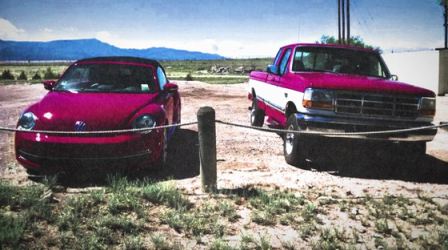 According to newly released Netflix Documentary, Dirty Money, Volkswagen conducted emissions tests on monkeys in 2014 to try and prove their TDI vehicles were environmentally safe.
According to newly released Netflix Documentary, Dirty Money, Volkswagen conducted emissions tests on monkeys in 2014 to try and prove their TDI vehicles were environmentally safe.
Volkswagen reportedly started a fake non-profit company named the European Research Group on Environment and Health in the Transport Sector (EUGT). The company paid north of US$700,000 to another company called Lovelace Respiratory Research Institute (LRRI) - a company that would go on to test BMW, Mercedes-BEnz and VW cars’ diesel exhaust emissions.
Michael Melkersen, the attorney who uncovered VW’s unethical behavior - revealed that VW were going to take their TDI engines and pit them up against old diesel technologies and compile reports to show that VW’s engines were more environmentally friendly.
James Liang, an engineer working in the Office of Diesel Competence at Volkswagen America, who had a hand in setting up the defeat devices that were named and shamed in the Dieselgate Scandal, also had a hand in the animal testing scandal that has now been revealed.
Liang delivered a VW TDI Beetle to a research facility owned by LRRI. They were going to compare the Beetle’s cleaner diesel technology to the older technology belonging to the 1997 Ford F250’s emissions. How they proposed to show the TDI cars were less harmful to human beings and more environmentally safe was shocking - to say the least.
The experiments
Michael Melkersen, talking to the filmmakers of Netflix’s Dirty Money, said:
“In the original draft of the study, they were actually going to have a human sitting on an exercise bike - and there’s actually a diagram of this in the proposal - where a human participant would sit riding an exercise bike and they would then be exposed to gas directly from the diesel vehicles. Then, they would poke and prod that person later to determine what type of health effects they would see from this person being gassed.”
It is not known if Volkswagen tested emissions on any humans, but they have apologized for tweaking the experiment to test the diesel emissions on monkeys. LRRI eventually compiled the report; with the heading reading: Exposures to Diesel or Alternate Technology Emissions to Evaluate Biological Response in Non-Human Primates (NHP).
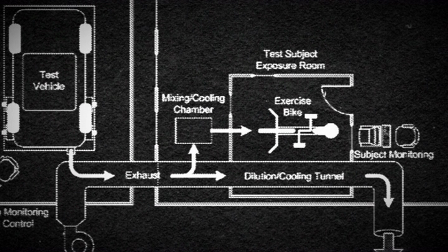 Volkswagen engineers pumped diesel emissions from the new TDI Beetle and Ford F250 into sealed cages with distracted cartoon-watching monkeys. Each test reportedly went on for hours. The New York Times confirmed that illegal cheating software was used on the TDI Beetle for the experiment. The TDI cars named in the Dieselgate scandal reported 80 times the legal limit of nitrogen oxide emissions.
Volkswagen engineers pumped diesel emissions from the new TDI Beetle and Ford F250 into sealed cages with distracted cartoon-watching monkeys. Each test reportedly went on for hours. The New York Times confirmed that illegal cheating software was used on the TDI Beetle for the experiment. The TDI cars named in the Dieselgate scandal reported 80 times the legal limit of nitrogen oxide emissions.
The New York Times reports that Volkswagen had begun funding EUGT as early as 2007. Daimler AG, who own BMW and Mercedes-Benz have distanced themselves from the practices. In a statement to media, they said: “Daimler does not tolerate or support unethical treatments of animals.”
Volkswagen said: “The scientific methods used to conduct the study were wrong. Animal testing is completely inconsistent with our corporate standards. We apologize for the inappropriate behavior that occurred and for the poor judgment of individuals who were involved.”
Works Cited
“Dirty Money.” Netflix Official Site, 26 Jan. 2018, www.netflix.com/za/title/80118100.
Ewing, Jack. “German Carmakers Criticized for Emissions Research on Monkeys.” The New York Times, The New York Times, 28 Jan. 2018, www.nytimes.com/2018/01/28/business/german-carmakers-diesel-monkeys.html.
- Details
- Written by: Quintus Potgieter
National Society of Professional Engineers, American Society of Civil Engineers, Engineers Without Borders, American Nuclear Society, American Society of Safety Engineers, Biomedical Engineering Society, Institute of Transportation Engineers, Society of Manufacturing Engineers, Order of the Engineer, Institute of Industrial and System Engineers.
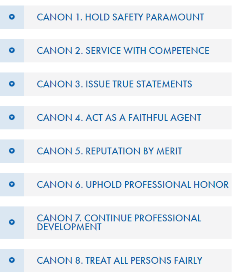 This is enough to make your head spin. The aforementioned engineering societies are only a portion of those that exist in the United States alone. Each has a set of rules, specific creeds, managerial structures etc.
This is enough to make your head spin. The aforementioned engineering societies are only a portion of those that exist in the United States alone. Each has a set of rules, specific creeds, managerial structures etc.
Source: American Society of Civil Engineers
Engineering societies do have merit; they hold engineers to a level of professionalism and they help to keep them ethical. The American Society of Civil Engineers, for example, has a good code of ethics that engineers in other industries could also benefit from.
And the National Society of Professional Engineers promises to do ‘everything that can be done’ to ensure engineering industries are transparent, ethical, and organized - in order to protect the engineering profession itself.
In today’s world, however, membership is dropping away. Often the only motivation to join one is because of the belief (misguided perhaps) that it will secure the member a job in industry.
On the social media site Reddit a user highlighted the issue. He reported that at the local American Institute of Aeronautics and Astronautics corporate board meeting the turn-up was poor. He went on to write:
“The older guys claimed that 10 years ago the chapter was full of life, with 30-40 members attending tours/lectures several times a year. But now, the local chapter is functionally an organization of officers.”
A popular response to the post speaks volumes: Jadbal wrote:
“Back when engineers would start at a company fresh out of college, and stay their whole career, it made sense to join a professional organization and attend regularly. Now, we move every two to three years for the first decade of our careers. Hard to get involved when you don’t know where you’ll be in six months.”
Build your own society
Joining an engineering society and being a name on an emailing list is no longer a functional way of keeping up to date with peers within the industry. Historically, societies provided engineers with internship opportunities and some even found jobs from being closely linked with other engineers in their disciplines.
Now with social media services like LinkedIn, engineers, on top of their already premium set of skills, are learning how to network in a different forum.
Keeping a virtual (or real) rolodex of names and numbers and acquaintances in the industry is a far better strategy. Engineers are more mobile so need the flexibility of networking online. And there is another reason contributing to the drop-off in membership: some societies charge monthly fees. Admittedly they often have the authority to confer ‘chartered status’, but projects demanding this elite status are also dwindling.
Society member or not, the following is a wholesome reminder of what it means to be an engineer. It is an oath and is called the ‘Obligation of an Engineer’.
“I am an Engineer. In my profession I take deep pride. To it I owe solemn obligations.
As an engineer, I pledge to practice integrity and fair dealing, tolerance and respect; and to uphold devotion to the standards and dignity of my profession, conscious always that my skill carries with it the obligation to serve humanity by making the best use of the Earth's precious wealth.
As an engineer, I shall participate in none but honest enterprises. When needed, my skill and knowledge shall be given without reservation for the public good. In the performance of duty, and in fidelity to my profession, I shall give my utmost.”
— "Obligation of an Engineer"
Works Cited
“The Death of the Professional/Technical Engineering Society? • r/Engineering.” Reddit, www.reddit.com/r/engineering/comments/7saj5y/the_death_of_the_professionaltechnical/.
- Details
- Written by: Quintus Potgieter
On the 9th of January 2018 a destructive mudslide, in Santa Barbara and Ventura County, California, hit the community of Montecito the hardest. Houses and businesses were literally swept off of their foundations. Days later the death toll had risen to 20 with scores more injured.
100 homes were destroyed and 300 more were damaged. Vehicles were among the losses too.
Freeways and hotels have been closed indefinitely as the community faces an enormous cleanup. Power had been cut off to some areas, and drinkable tap water was not available. Search and rescue teams were very active as people remained missing.
California has just undergone a destructive, dry season that produced many wildfires; these were followed by heavy rains. This dangerous cocktail of events is often followed by mudslides.
With climate change a serious threat, some are thinking California could continue to experience such disasters. Professor of Geography at UCLA, Glen MacDonald, spoke to CBC News about what could become California’s “new normal”.
“What is happening is climate change. We have been experiencing temperatures warming year after year now – this is exacerbating the contrast between our very dry summers and our wet winters. It’s essentially priming the pump for big fires, which are then followed by these landslide events. The new normal? It’s sort of like the normal that we had in the past, but on steroids.”
In 2014, California’s San Bernardino County experienced a mudslide that displaced 2,500 people and left one dead. California has become accustomed to possible mudslides, but it was the unprecedented torrential downpour that caused the latest mudslide.
Engineering around the climate
Demolition workers have begun the process of breaking down boulders that came off of the mountain during the mudslide of the 9th of January.
University Professor Laura Sullivan-Green who works in the Civil and Environmental Engineering department at San Jose University explained how the wildfires in California had a ‘direct impact’ on the mudslide.
Talking to Fox News’ KTVU, she said that California’s Thomas Fire had caused 280-thousand acres of scorched earth. The burned vegetation, mixed with the heavy rains, made the hillsides of Montecito a prime candidate for flash flooding and a mudslide.
The consensus from most experts is that the woes experienced in California are because of civil engineering practices of old. Despite the dangers, even back then, construction in California continued. The situation is similar to that in Mexico City: arguably humans should never have inhabited areas prone to natural disaster.
Mexico City was hit by an earthquake last year, highlighting its unfortunate geographic positioning. This capital city is likely to experience violent earthquakes as it is was built on an ancient lake bed. For more on Mexico City, read our report from last year.
Sullivan-Green explains that other areas of California may also be in danger of mudslides, especially if they too have suffered the triggers experienced by Montecito. She says:
“Making sure that water can drain easily, and sandbagging to prevent erosion are, really, the key things right now. It can take up to two years for the soil to recover significant vegetation, as well as reduce the water-repelling chemical change.”
Encouragingly, research is being conducted at the University of Arkansas. In 2014, a team of researchers were given US$1.4 million to develop a system of remote-sensing technologies. These were designed specifically to help the relevant authorities predict a mudslide, rockslide or similar event in the area of California.
Richard Coffman, the assistant professor of civil engineering, and head of the project said:
“The hazard to infrastructure resulting from wildfires includes the initial damage associated with the wildfire and then secondary effects from the wildfire denuding the soil. To combat these hazards, transport officials typically rely on various maps that document burn severity, soil composition, geology and topography - but these tools do not offer the high spatial and temporal resolution of remote-sensing data.”
California has suffered, but the researchers will benefit as they have yet more data to add to their current studies. It will also assist those civil engineers hard at work figuring out how to protect vital infrastructure in areas where mudslides may simply be unavoidable.
Works Cited
Ktvu. “Environmental Engineering Expert on SoCal Mudslides.” KTVU, www.ktvu.com/news/environmental-engineering-expert-on-socal-mudslides.
McGowan, Matt. “Grant Will Help Researchers Develop System to Assess Risk of Mudslides, Rock Falls.” University of Arkansas News, news.uark.edu/articles/25619/grant-will-help-researchers-develop-system-to-assess-risk-of-mudslides-rock-falls.
cbcnews. “Weather Extremes: California's New Normal?” YouTube, YouTube, 9 Jan. 2018, www.youtube.com/watch?v=8Akqrda6QhU.
- Details
- Written by: Quintus Potgieter
Cape Town, South Africa, may become the first modern city in the world to run out of water. This headline is being strewn across news networks around the world. Time is ticking toward ‘Zero Day’ - a day in April when the Cape is set to run out of water.
Cape Town residents are now restricted to 50 liters of water per household per day and this figure is soon to be halved.
Professor Mike Muller, the former Director-General of the Department of Water Affairs and Forestry (1997-2005) released a report in June 2017 named: Understanding the origins of Cape Town’s water crisis. He wrote:
“The water crisis that has confronted Cape Town this summer should be of concern to all professional engineers in the field of water management. How was such a critical situation allowed to develop in one of South Africa’s largest cities?”
The history
Ever since the colonization of the Cape by Dutch settlers in 1652 crippling droughts have been experienced. Between 1699 and 1732 it became clear that the Cape was moderately arid. Some excerpts from the Precis of the Archives of the Cape of Good Hope read:
October 29, 1699: The grain-crop suffering from drought. Rain wished for. Bad harvest feared.
January 29, 1700: The Governor refers to the poor harvest, caused by floods and succeeding droughts; the consequent want of grain here, and the necessity of making provision for supplies.
May 7, 1700: All the farmers are complaining of drought, as the ground is too hard to plough without rain, and the cattle for want of pasture is very poor and dying. Prayer should be made to Almighty God to preserve us from a third bad harvest, as our condition would otherwise be very miserable.
January 13, 1702: The south-easter blowing still (from before New Year, with slight pauses), causing the destructive drought to continue.
The word ‘drought’ is written 15 more times in the first volume of the Precis of the Archives of the Cape of Good Hope. In 1711 there was a drought. In 1713 after five months of no rain it finally came in March. In 1714 drought struck again. In 1725 there is another reference to a severe drought which again would produce a bad harvest.
Farmers had the same problems back then that they have today: devastating droughts followed by incredibly destructive storms and crops that either fail or are poor.
The situation has, however, changed over time - a change which further burdens already stretched resources. The population in the Western Cape has grown exponentially in recent years, exacerbated by migration to this southernmost tip on the African continent. And the city of Cape Town has borne the brunt. There is an estimated metropolitan population of between 3.5 and 4 million people with a population density (back in 2016) of 1,530 people per square kilometer. The population in Cape Town in 1955 was a mere 705,000.
A solution which factors in burgeoning growth is needed urgently. The water shortages today are dire; little seasonal rain in their 2017 winter have seen dam levels fall to desperately low levels – they are currently sitting below 30% and already potentially tainted.
The Eastern Cape’s dams are also in trouble as the drought bites there too. Experts believe that if the Cape experiences three years of seasonal rains they may be back on track.
In the interim what can engineers do to solve the crisis?
Prof Mike Muller goes on to write that if the Cape had wanted to avoid these latest water restrictions the government should have imposed technological ‘interventions’ in a timely manner.
There is a flurry of activity now, but the overarching question is: Can engineering save the Cape from its water crisis in time – enough to satisfy the daily city consumption of 580-million liters?
The Mayor of Cape Town, Patricia De Lille, has acted to contribute to the solution; she has called upon major drilling companies in the country to drill in “prime locations” to access aquifers she says could produce 150-million liters per day.
The drilling engineers will access these ancient water reserves that have been untouched for millions of years, says Mayor De Lille. Engineers and scientists will then ensure the water is potable before introducing it into the water supply. Work has started in the Cape Flats Aquifer.
This is likely to be a short term solution – once the water has been harvested the aquifers may struggle to replenish themselves - especially if the drought continues.
With the conservation of water being key, intelligent water pressure management technology has been implemented in the Cape. It will prove to be an efficient way of preventing damage to existing infrastructure and ensure that people do not use more than is necessary in these tough times. The City of Cape Town put out a statement saying:
“Not only does pressure management generally lower consumption by reducing the rate at which water flows to properties, it also reduces leaks and pipe bursts by better ensuring that pressure remains within levels that the pipework can tolerate, and reduces the rate of loss from leaks and bursts. At all times, careful consideration will be given to ensure minimal disruption to the water supply in affected areas.”
University of Cape Town Future Water Institute’s Dr Kevin Winter spoke to Talk Radio 702 about the aquifers. He believes that if the locals could reduce their water consumption to below 450-million-liters per day, it would be a significant saving. He also suggests that treated effluent get injected into the aquifers to assist with their recharging.
If and when the storms come the storm-water must be trapped and fed into the aquifers too.
Finally and long-overdue, three new desalination plants will be implemented in the Cape. For residents who have been subjected to water restrictions for quite some time now, it may be too little too late, but at least they offer a sustainable solution.
Works Cited
“Drilling on Cape Flats Aquifer Starts as Cape Town Dams Dry up in Drought.” News24, 11 Jan. 2018, www.news24.com/SouthAfrica/News/drilling-on-cape-flats-aquifer-starts-as-cape-town-dams-dry-up-in-drought-20180111.
“EDITORIAL: Parched Cape Runs out of Time.” BusinessLIVE, www.businesslive.co.za/bd/opinion/editorials/2017-10-30-editorial-parched-cape-runs-out-of-time/.
Muller, Mike. “Understanding Cape Town's Water Crisis.” By Mike Muller :: SSRN, 5 July 2017, papers.ssrn.com/sol3/papers.cfm?abstract_id=2995937.
“Precis of the Archives of the Cape of Good Hope : Cape of Good Hope (South Africa). Archives : Free Download & Streaming.” Internet Archive, 1 Jan. 1896, archive.org/details/precisofarchives01capeiala.
http://worldpopulationreview.com/world-cities/cape-town-population/
- Details
- Written by: Quintus Potgieter
The future of automation is set in stone. It seems clear that industrial robots will replace human beings on the assembly line inside most, if not all, factories in the future. Car manufacturers have already seen many of the tasks on the assembly line replaced by robots - tasks that, once upon a time, belonged to the human employee.
However, Ford Motor Company may have just prolonged the human employee’s stay on the assembly line with new exoskeleton technology.
EksoVest is a joint venture between Ford and California bionics company Ekso Bionics. The wearable technology is designed to decrease the likelihood of injury and fatigue for the assembly line worker. And it makes assembly workers a little stronger, too.
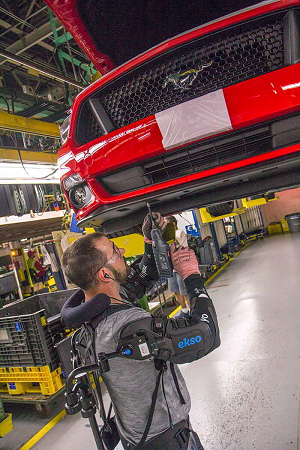
Image source: Ekso Bionics
The EksoVest is attached to the upper body of an employee who performs tasks on the undercarriage of Ford’s vehicles. Overhead work on the assembly line can be quite arduous work when done in long stretches of time.
The EksoVest takes some stresses off of the shoulders, and lessens fatigue. It can also help workers pick heavy equipment up, providing extra lift assistance of up to 15 pounds per arm. What was once science fiction has become science fact.
One of the assembly workers at Ford’s Michigan assembly said:
“Mo job entails working over my head, so when I get home my back, neck and shoulders usually hurt. Since I started using the vest, I’m not as sore, and I have more energy to play with my grandsons when I get home.”
Engineering health and safety
The most common injury on Ford’s assembly line, according to Ford’s ergonomics engineer Marty Smets, is to the workers’ shoulders. As a result, Ekso Bionics, with Ford’s cooperation, tested several prototypes with the assembly line staff until settling on a refined product that would be the best suited ‘wearable’ for its workers.
Russ Angold, the co-founder and chief technology officer of Ekso Bionics told Ford’s media wing:
“The end result is a wearable tool that reduces the strain on a worker’s body, reducing the likelihood of injury, and helping them feel better at the end of the day - increasing both productivity and morale.”
As factories of the future add more machinery, the health and safety of employees on the factory floor is increasingly at risk. Ford is dedicated to keeping the workplace safe for its workers, and now, with exoskeletons, workplace injuries may be avoided.
Ekso Bionics is passionate about lessening injuries across engineering industries. The company reports that the United States spends $21 billion a year on workplace-related injuries. They are continually developing wearables to counteract the effects of hard labour in engineering industries.
Works Cited
Carey;, Nick. “Ford, Ekso Team up for 'Bionic' Auto Workers.” Reuters, Thomson Reuters, 9 Nov. 2017, www.reuters.com/article/us-ford-ekso-workers/ford-ekso-team-up-for-bionic-auto-workers-idUSKBN1D93B0.
“Login.” Ford Pilots New Exoskeleton Technology to Help Lessen Chance of Worker Fatigue, Injury | Ford Media Center, media.ford.com/content/fordmedia/fna/us/en/news/2017/11/09/ford-exoskeleton-technology-pilot.html.
- Details
- Written by: Sharne

Like water off of a duck’s back, Volkswagen’s Dieselgate controversy has not deterred consumers from buying their vehicles. Autoblog estimates that VW’s worldwide overall sales reached “around 10.7 million cars” in 2017, cementing it as the largest automaker in the world - inching just above Toyota.
The company also set a new record for a car manufacturing company; the company produced six million cars in a year. The Volkswagen Polo was the 7th most purchased vehicle in 2017.
For all its successes, however, it is hard to ignore that VW’s Dieselgate controversy will be a case study of what engineers shouldn’t do within an engineering company - it’s a study in ethics, after all. But how did the story go from unethical engineering practices undertaken quietly, to a story spread across the tabloids?
A publication named Der Spiegler compiled a two-part report, interviewing the students on the events - here is a summary:
Trial + error = a scandal
 Three college students were behind the discovery that led to the Dieselgate scandal. Arvind Thiruvengadam (left) and Hemanth Kappanna (middle) are both from India, and Marc Besch (right) is from Switzerland. The three mechanical engineers had enrolled at West Virginia University in the Center for Alternative Fuels, Engines and Emissions.
Three college students were behind the discovery that led to the Dieselgate scandal. Arvind Thiruvengadam (left) and Hemanth Kappanna (middle) are both from India, and Marc Besch (right) is from Switzerland. The three mechanical engineers had enrolled at West Virginia University in the Center for Alternative Fuels, Engines and Emissions.
They say the revelations were all an accident; one that would go on to cost Volkswagen US$30 billion. It all started in 2012; Volkswagen began boldly running advertisements stating that their turbo diesel engines were “Clean Diesel” engines.
At the same time, the Center for Alternative Fuels, Engines and Emissions was awarded a contract, with budget, for testing diesel cars and their emissions technologies. Eventually taking their studies to California, (a state with the largest number of the so-called environmentally-friendly clean diesel engines from VW), the student engineers went to work.
According to Der Spiegler’s two-part report, the students hired a VW Jetta 2.0 TDI, a VW Passat 2.0 TDI, and a BMW X5, and took them to the California Air Resources Board (CARB). Lab tests reportedly revealed that all cars abided by the legal emission levels. The students then took the cars onto the roads – here they worked out, before long, that the VW Jetta substantially transgressed the legal levels.
The students did an impressive 6,000 kilometers in the cars, traversing San Diego, San Francisco and Seattle. They were continually baffled by the VW measurements - without considering what would go on to define the scandal, the cars’ ‘defeat devices’.
After presenting their findings at a conference in 2014, the deputy head of CARB’s interest was piqued. CARB then continued the research in California, expanding on the students’ research.
The California Air Resources Board, due to their legal framework that holds companies who produce nitrous oxide levels to account, lobbed a host of investigative questions to Volkswagen Group in Germany.
By September 2015, the Environmental Protection Agency had all the facts they needed and were ready to reveal that Volkswagen was unethically underreporting the emissions their vehicles were emitting. To explain how Volkswagen was underreporting their emissions, the Verge put together a very short explainer that reveals how the engineers at VW cheated the system:
Works Cited
Felton, Ryan. “The College Students Who Uncovered VW's Diesel Cheating.” Jalopnik, Jalopnik.com, 24 Oct. 2017, jalopnik.com/the-college-students-who-uncovered-vw-s-diesel-cheating-1819804604.
Oehmke, Philipp. “Out of Nowhere: The Three Students Who Uncovered 'Dieselgate' - SPIEGEL ONLINE - International.” SPIEGEL ONLINE, SPIEGEL ONLINE, 23 Oct. 2017, www.spiegel.de/international/business/the-three-students-who-discovered-dieselgate-a-1173686.html.
- Details
- Written by: Sharne
A new year has arrived, and with it, new engineering challenges. As 2018 rolled in, so did incredible weather events in both the Northern and Southern Hemispheres.
In the Northern Hemisphere, it has been extremely cold. Days after New York’s governor, Andrew M. Cuomo, revealed a clean energy policy proposal for the state, a winter storm known as a ‘bomb cyclone’ descended upon the East Coast of the United States of America.
Extreme cold
The East Coast has undergone one of the coldest holiday seasons in recent memory. Florida has seen unfamiliar changes in temperatures too. So much so, the state’s iguanas were sent into a state of confusion - they became so cold that they fell out of their trees.
Then, there are the engineering challenges that come with immensely cold temperatures. At Kennedy Airport (JFK) in New York, a water pipe suffered a weather-related break, subsequently flooding a terminal, which led to delays for thousands of travelers.
The Port Authority of New York and New Jersey released a statement explaining that it was the pipe-fed sprinkler system within Terminal 4 that broke at 2 p.m. on Sunday, the 7th of January 2018. The Port Authority’s Executive Director Rick Cotton said:
“What happened at JFK Airport is unacceptable, and travelers expect and deserve better. While the water pipe break that occurred appears to be weather-related, we have launched an investigation into the incident to determine what occurred and why an internal pipe was not weather protected and whether any other failures contributed to this disruption.”
All electrical systems were powered down in the terminal to ensure short-circuits did not occur. 500 flights were canceled due to the pipe break. The baggage claim areas were packed with hundreds of passengers’ bags due to the cancellations.
The bomb cyclone led to three days of flight disruptions for the airport. The Port Authority maintained that “frigid temperatures” would continue to cause “equipment failures and slower than normal operations”.
Extreme heat
In the Southern Hemisphere, sweeping heat waves have sent temperatures soaring. In Victoria, Australia, it was so hot a section of the Hume Highway began melting. Motorists were forced to avoid sticky, melted portions of the road on Friday, the 5th of January 2018.
Temperatures reached 40 degrees Celsius (104 Fahrenheit) on the Hume outside Broadford, causing the bitumen (binding agent) in the tarmac to reactivate and turn to liquid. Alarmingly, the bitumen gets stuck to tires due to the ‘bleeding’ road surface.
Interestingly, melting asphalt is easy to repair due to the fact that only the top layer of the asphalt is affected, which is, in part, why it is used in highway engineering. Moreover, higher grade bitumen can be used to prevent asphalt softening.
However, the disadvantage of bitumen asphalt roads is that greenhouse gases are released once the road begins melting. This has led to some civil engineers to suggest that concrete roadways are better, despite being more expensive.
Climate change effects continue to present engineers with new and unique challenges – 2018 is proving to be no different.
Works Cited
Clark, Emily. “Explained: How Heat Affects Roads, Trains and Planes.” ABC News, 6 Jan. 2018, www.abc.net.au/news/2018-01-06/how-heat-affects-roads-trains-and-planes/9308342.
Silva, Daniella. “Water Main Break, Baggage Pileup at JFK Airport Add to Winter Travel Chaos.” NBCNews.com, NBCUniversal News Group, 7 Jan. 2018, www.nbcnews.com/news/us-news/water-main-break-baggage-pileup-jfk-airport-add-winter-travel-n835431.
“Who, What, Why: When Does Tarmac Melt?” BBC News, BBC, 15 July 2013, www.bbc.com/news/magazine-23315384.
- Details
- Written by: Quintus Potgieter
It would not have been a pleasant break at the end of 2017 for those working in the power industry. General Electric (GE) is retrenching 12,000 employees from their electrical power division; it equates to 18 percent of their workforce. The European branches of GE Power seem to be the hardest hit; Switzerland and Germany are losing the most employees.
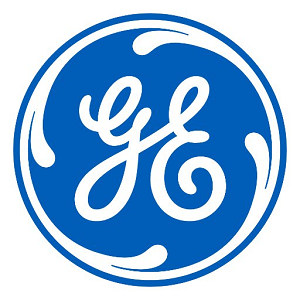
The company initially made its fortune when Thomas Edison’s idea for the incandescent light bulb was realized. In November 2017 - triggering the end of an era for the company - they announced that the light bulb division would be closing.
The move will purportedly save them $1 billion in 2018.
GE Power Chief Executive Russell Stokes, in a statement, said:
“This decision was painful but necessary for GE Power to respond to the disruption in the power market, which is driving significantly lower volumes in products and services.
GE is pointing to the energy industry’s ongoing move from fossil fuels to alternative renewable energy for its current woes. It is, however, not the only power company experiencing a downturn. Siemens AG recently let 6,900 employees go and Siemens has reduced its global workforce, in its power and gas divisions, by 2 percent.
Siemens Management Lisa Davis said:
“The power generation industry is experiencing disruption of unprecedented scope and speed. With their innovative strength and rapidly expanding generation capacity, renewables are putting other forms of power generation under increasing pressure.”
General Electric also appointed new CEO John Flannery in an attempt to steer the company away from the despair it had witnessed during 2017. His first move was to buy 60,000 of GE’s share.
The company, unfortunately, became the worst-performing stock on the Dow Jones Industrial Average last year - a shocking decline for a blue chip stock. The stock had fallen by more than 42.2 percent since the beginning of 2017. The forecast for 2018 doesn’t look any healthier.
How to remain relevant
Cross-skilling, up-skilling and remaining relevant in your industry, which may very well change in the future, is critical. As the world enters the fourth industrial revolution we all need to become more nimble and remain watchful; all opportunities to professionally develop must be considered.
For example, if a worker in the manufacturing sector does not learn the principles of a disrupting technology, like rapid prototyping (3D printing); it may indeed be to his detriment. By keeping an eye on such technologies and ensuring his skills broaden - in line with the demands of his industry - he is much more likely to remain in demand.
Competence in a career that is subject to change is always difficult. With the right tools, however, it is doable. Perhaps, John Lorriman says it best in his book ‘Continuing Professional Development: A Practical Approach’: “You own the world’s most powerful computer -- your brain.”

Works Cited
Merriman, Editing by Jane, et al. “Siemens to Cut 6,900 Jobs to Tackle Flailing Turbines Business.” Reuters, Thomson Reuters, 16 Nov. 2017, www.reuters.com/article/us-siemens-power-restructuring/siemens-to-cut-6900-jobs-to-tackle-flailing-turbines-business-idUSKBN1DG257.
Revill, John. “General Electric to Cut 12,000 Jobs in Power Business Revamp.” Reuters, Thomson Reuters, 7 Dec. 2017, www.reuters.com/article/us-ge-jobs/general-electric-to-cut-12000-jobs-in-power-business-revamp-idUSKBN1E11GU.
- Details
- Written by: Quintus Potgieter
The people of London, England, are officially one year away from using a new underground railway. Crossrail is a new railway that links up to the renowned Elizabeth Line; since 2009 the teams involved have been working around the clock to make it happen.
Engineers behind the project are calling it the most “ambitious infrastructure project since the Industrial Revolution”. Upon completion, Crossrail will be 118 kilometers (73 miles) long. 10 stations are also being constructed. By December 2018 the railway will open to the public - after an investment of US$20 billion.
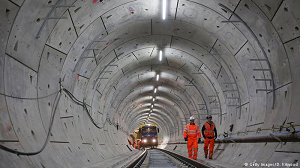
For all Britain's engineering successes, there are some aspects of the industry that require consideration. For example, Britain has the lowest number of female engineers in Europe.
The Crossrail project, however, has created opportunities for female engineers too. In fact, the Daily Mail reports that a third of the engineers attached to the project are female. Another impressive fact is that Crossrail Limited will have created more than 1,000 apprenticeships during the construction of the railway.
The female engineers attached to the project have been given the nickname the ‘Girlpower Tunnel Gang’.
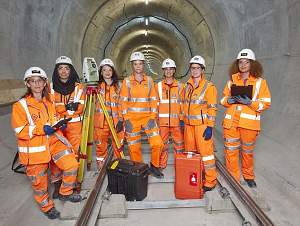
Rachel, a 43 year old civil engineer working on the railway told the Daily Mail:
“When I was a little girl I was utterly ignorant of engineering. It never crossed my mind that engineering was a masculine industry. I grew up in a family of feminists where you do what you want to do. Now, I do get people asking me whether I boss lots of men around, which I don’t.”
The dedication to the project has been remarkable too – those involved will work through the festive season and New Year.
Another of the female engineers - who moonlights as a beauty blogger - spoke about the misconceptions some people have about females in the engineering industry. She said:
“People don’t expect someone like me to be an engineer because I like make-up and beauty. I don’t put my full make-up on all the time to go to work - I’m not going to get up an hour early just to do that. People might think if you look a certain way you are not serious, but I have studied hard.”
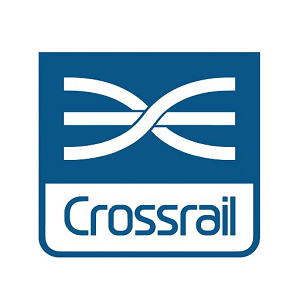
The project employed eight tunnel boring machines (TBM); each one at a cost of approximately US$13 million. These machines work around the clock and requires up to 20 people to operate them. Andrew Wolstenholme, the CEO of the Crossrail project spoke to Deutsche Welle, saying:
“I’ve travelled in many different continents in my career, and I see British engineering sitting right at the forefront. We’ve always been good at architecture, at engineering. I think we’ve put people and social issues at the heart of Crossrail, so we’ve attracted now more than 700 apprentices. These are young men and young women. I say young women because 30 percent of our apprentices are female, which we’re very proud of. They come from all sorts of different backgrounds, giving people the opportunity, some from disadvantaged backgrounds, to have engineering as their first choice in the UK.”
Social issues, and putting people first aside, the project still needs to meet deadlines and do it without overspending. Wolstenholme says everyone on the Crossrail project is disciplined and has the expertise to finish the project. With London’s growing population rates, the new railway is going to be a godsend for minimizing congestion in the city and reducing travel times.
Project Manager Camilla Barrow, a team leader in charge of 40 other employees at Crossrail, said:
“Having more women engineers is better for everyone - if you have diverse people on a project, you will get better ideas. If everyone thinks the same, you're less likely to get innovation. When you have a huge project like Crossrail, you need that creative thinking. For instance, we created from scratch a unique drilling rig - and it was designed by one of our young engineers.”
Works Cited
(www.dw.com), Deutsche Welle. “Tunnel Vision: Inside London's New Subterranean Railway | Business | DW | 20.11.2017.” DW.COM, www.dw.com/en/tunnel-vision-inside-londons-new-subterranean-railway/a-41444842.
Ruth Sunderland City Editor For The Mail On Sunday. “The Girlpower Tunnel Gang! Meet the Female Crossrail Engineers behind the Biggest Construction Job in Europe.” Daily Mail Online, Associated Newspapers, 9 Dec. 2017, www.dailymail.co.uk/femail/article-5163163/Meet-female-Crossrail-engineers.html.
- Details
- Written by: Quintus Potgieter
By now you might have noticed that voice recognition hardware and software are growing exponentially. Companies including Google, Amazon, and Apple are developing technologies that allow humans to access the internet and control connected devices by using their voices.
The introduction of products such as Amazon’s Alexa and Google’s Home has piqued the interest of consumers. They can envision the benefits of these emerging virtual assistants and so can businesses.
Even Microsoft’s Windows is incorporating voice into its product range. For example Windows’ virtual assistant, Cortana, speaks up and guides a user when installing a Windows operating system.

The voice-install method occurs by default upon a clean install of the operating system. Consumers can, however, opt out of the voice-input installation method if they do not want to converse with the assistant.
Engineers are being met with the task of integrating voice into many of the projects they are involved with. It goes without saying that proficiency in artificial or machine intelligence is becoming critical to those working in the engineering industry.
According to a recent report by Research and Markets, just the Global Voice Recognition Market is to reach a market size of $126.5 billion by 2023.
The Chief Technology Officer for Amazon Web Services, Werner Vogels, has said that the future of technology must be human centric instead of machine centric. Utilizing voice is one way of ensuring technology relates more ably to a human user.
To this end Amazon has announced Alexa for Business. These are smart devices that can be peppered throughout the workspace to encourage efficiency and keep a team on track.
Amazon has made the SDK (software development kit) available for the AVS (Alexa Voice Service). With this at their disposal engineers are learning how to embed voice recognition systems into their future designs.
For engineers who want to hear their daily news and other content, these smart audio devices are perfect. And the future of these nifty creations, thanks to the engineers behind the assistants: smaller and more affordable versions.
'
Works Cited
McLean, Asha. “The Future of Digital Will Be Human-Centric and Voice Will Reign Supreme.” ZDNet, ZDNet, 30 Nov. 2017, www.zdnet.com/article/the-future-of-digital-will-be-human-centric-and-voice-will-reign-supreme/.
“Voice Recognition Market - Expected to Reach $126.5 Billion by 2023 - Research and Markets.” Voice Recognition Market - Expected to Reach $126.5 Billion by 2023 - Research and Markets | Business Wire, 13 Dec. 2017, www.businesswire.com/news/home/20171213005500/en/Voice-Recognition-Market---Expected-Reach-126.5.
- Details
- Written by: Quintus Potgieter
Tire development has always formed a large chunk of the United States’ National Aeronautics and Space Administration’s (NASA) research. After all NASA has to put robust tires on the rovers they use in space. In fact the exploration of an arid, somewhat unpredictable landscape is very much dependent on good tires.
Space exploration has advanced alongside the growing capabilities of technology. With new landscapes to be explored the tires needed to be more versatile and durable.
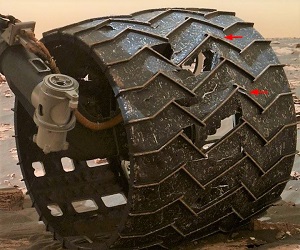
Despite this, in 2013, after some extensive traveling on the surface of Mars, the engineers behind NASA’s Curiosity Rover noticed holes and tears in the vehicle’s aluminum wheels. By 2017 NASA was reporting much further damage, with engineers estimating that the wheels were 60% spent.
NASA realized that if they ever intended to send humans to Mars (with reliable transport around the planet); they needed to go back to the drawing board and engineer a tire that could go to Mars and beyond.
Tire evolution
The aerospace engineering world has seen an evolution of tires fitted to lunar and Martian exploration vehicles. The Russian vehicle, Lunokhod, in 1970, used mesh-like wheels fixed onto spokes - reminiscent of a bicycle.
The MET-ROVER had nitrogen filled inner-tubes and were manufactured by Goodyear. The Lunar Roving Vehicle, which famously went to the moon on the Apollo 15 mission, also utilized a flexible wire mesh.
The flexible wire mesh concept was further developed in the NASA Glenn Research Center by engineer Vivake Asnani. With assistance from Goodyear, in 2000, they created the ‘Spring Tire’ - an airless tire created with coiled steel wires criss-crossed to create a mesh.
NASA’s engineers believe the Spring Tire is perhaps their best bet for the next vehicle that goes to Mars. The engineers have focused their energies on creating prototypes to improve its ‘traction in soft sand’, increase its durability and reduce its weight.
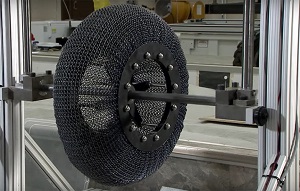
A new tire is born
At NASA’s Jet Propulsion Laboratory (JPL), new mesh-tire prototypes have been undergoing tests; the simulations mimic the conditions on Mars.
The difference between the old mesh tires NASA has used and these newer prototypes is all in the material: titanium, with a unique atomic structure. The structure is less susceptible to pressure and stress. According to the engineers at NASA Glenn, the titanium based tire is thirty times more durable than tires before it.
As a result, the engineers over at NASA have developed a “memory alloy tire”. A tire that returns to its original form once it has come into contact with something that has caused it to deform. The researchers write:
“There are three major benefits to developing high performing compliant tires that are capable of performing in a Martian or Lunar environment. First, they would allow rovers to explore greater regions of the surface than currently possible. Secondly, because they conform to the terrain and do not sink as much as rigid wheels, they can carry heavier payloads for the same given mass and volume. Lastly, because the compliant tires can absorb energy from impacts at moderate to high speeds, they can be used on crewed exploration vehicles which are expected to move at speeds significantly higher than the current Mars rovers.”
The wheels are being perfected in time for a mission to Mars planned for 2020. NASA will send Curiosity 2.0 to the red planet - an almost identical rover to the Curiosity that is currently on the planet. But it will have six newly engineered wheels (and a few other new trinkets).
Works Cited
“Reinventing the Wheel.” NA http://bgr.com/2017/11/26/nasa-airless-tire-no-flat/
- Details
- Written by: Quintus Potgieter
Instead of entrusting a handful of engineers to design and build, why not open it to a world of engineers, or those who are enthusiastic about all things engineering?
Thanks to low-cost cloud computing, it is all possible. Collaborative engineering design was seen as far back as 2008 in the automotive industry, the company involved was Local Motors.
Founded in 2007 in Phoenix, Arizona, Local Motors became an open-source motor vehicle design and manufacturing company.

Source: Local Motors | Image: The first 3D printed car - Strati
After seeing how Ferrari, GM and Tesla went from design to manufacturing, founder of Local Motors, Jay Rogers, came up with a plan to get vehicles designed and to market more quickly. They opted for designing the car of the future through ‘co-creation’, using collaborative teams from all over the world.
They originally employed student designers, but these resulted in various setbacks. The founders then decided on crowdsources designs from teams around the world that had the necessary expertise. The teams included engineers, car enthusiasts, innovative minds and creative professionals.
Those designs that met the CAD requirements for 3D printers and deemed the best car designs were up-voted by the ‘community’.
In 2008, the company and its many co-creators around the globe designed the world’s first crowdsourced car. Once the winners were picked, they began printing their first car; the Strati was born. Local Motors explained that it only took two-three-day weekends to manufacture the car.
Once a car is designed the community can opt to buy the car. Local Motors then builds a micro-factory in a town or city and begins the manufacturing process. By 2014, the company had eighty-three employees and three manufacturing micro-factories.
According to Sam Ismail’s book ‘Exponential Organizations’, the traditional car manufacturing company spends US$3 billion bringing a new car to market, whereas Local Motors might spend US$3 million. (Although traditional car manufacturers do push out more cars per annum.) Nonetheless, an improvement in organizational structuring and manufacturing could eventually drive the cost of production down for traditional vehicle manufacturers too.
Local Motors recently announced its latest mobility project; a 3D printed bus named Olli. The bus is a self-driving vehicle powered by IBM’s Watson. The company uses its micro-factories to manufacture the buses.
Continued crowdsourcing
Local Motors’ micro-manufacturing processes soon began to influence some of the largest and oldest stalwarts of engineering.
In 2014, General Electric (GE) saw the benefit to Local Motors’ crowdsourcing efforts and wanted in on the fun. GE linked arms with Local Motors in a partnership that would see a community of “engineers, scientists, fabricators, designers and enthusiasts” co-create items with GE that would eventually go to market.
GE Executive Director of Global Innovation Steve Liguori said:
“At GE over the past years, we've refined our approach to innovation, focusing on R&D as well as co-creation, open collaboration and partnership, which has allowed us to engage new audiences; a new era of manufacturing is dawning -- and with Local Motors, we are pioneering the future of work, fast tracking a new model for the manufacturing industry, and improving and expanding GE’s product offering to better meet future customer needs.”
General Electric appliances - pertaining to the cooking industry - were co-created by an open-source, collaborative network of engineers and other professionals. This network, known as FirstBuild, utilizes rapid prototyping. They create prototypes from the most up-voted items designed by the community of contributors and then run tests on them.
Another crowdsourcing service engaging freelancing engineering professionals is CADCrowd . Entities can pick their favorite items from a list of freelancing engineers or engineering teams who are looking to score money from their designs.
Those who are willing to pay are looking at engineering designs for a range of uses, from wringing water out of a sponge mop to step ladders.
Works Cited
“Blog | Local Motors.” Launch Forth, launchforth.io/localmotors/blog/.
“GE, Local Motors Partner to Pioneer New Model for Manufacturing Industry · Local Motors.” Local Motors, localmotors.com/press-release/ge-local-motors-partner-pioneer-new-model-manufacturing-industry/.
Exponential Organizations, exponentialorgs.com/.
- Details
- Written by: Quintus Potgieter

It is almost that time of the year again, the moment that sees out the old and welcomes in the new, on New Year’s Eve. In the seconds that take 23:59 in 2017 to 00:00 in 2018, bursts of fiery light will appear in the night skies around the world as displays of fireworks are triggered.
Some of the world’s grandest fireworks happen on Australia’s Sydney Harbor, on the United Kingdom’s London Eye, on France’s Eiffel Tower in Paris, and on Brazil’s Copacabana Beach in Rio de Janeiro, to name a few.
Nothing dazzles crowds quite like fireworks displays. They are, after all, a marvel of chemical engineering. There is a visceral excitement felt by many when fireworks burst into the sky as a New Year dawns.
However, for visually impaired members of our global population, enjoying a fireworks display is limited to the reverberating explosions alone. The engineers and researchers at Disney Parks and Resorts have worked to find a solution.
The company is world renowned for its firework displays; in fact they are the largest consumer of fireworks in the world. A former Product Designer at Disney Consumer Products, Ben Suarez, says Disney uses up to US$50,000 of fireworks per show at their resorts. It is estimated that the resorts collectively blow up $50 million worth of fireworks every year.
Feeling Fireworks
Researchers at Disney are developing a technology that would allow visually impaired patrons to experience the fireworks at their parks in a new way; by feeling them. A flexible screen is set up, with water jets positioned behind it. By placing their hands against the screen they feel a representation of a firework exploding outwardly.
To further improve the experience, a Microsoft Kinect camera array is set up, for the purposes of tracking users’ hands. Once a user's hands are up against the flexible screen, the jets are activated through the Kinect sensor and a personalized ‘fireworks explosion’ is performed for the user.
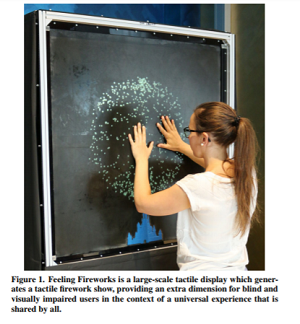
Disney’s researchers are experimenting with a variety of nozzles on the water jets to produce varied patterns and thus a breadth of tactile experience. Using an Arduino-based computer, the engineers control the amount of water the pump emits and can control the direction of the nozzles. The researchers have also found that they can produce the experience inexpensively. They write:
“Our approach is low-cost and scales well, and allows for dynamic tactile effects to be rendered with high spatial resolution.”
The rise and development of haptic technology will enable an increasing number of tactile experiences in the near future. Haptic feedback is something engineers are embedding in technology to make humans feel like their interactions with technology are more genuine.
Disney believes that the technology could be adapted to other industries. The researchers write:
“Beyond the specific application, the technology represents a novel and cost-effective approach for making large scalable tactile displays, with the potential for wider use.”
Disney’s investment in fireworks goes further. According to former Disney & NBC Product Designer Ben Suarez the company has invested millions into “developing new fireworks that left minimal amounts of smoke”, after the smell of their many fiery displays agitated crowds.
A festive season is, after all, for everyone. It is commendable that Disney has used their engineering expertise to ensure this gladness is spread a little more widely.
Works Cited
“Feeling Fireworks.” Disney Research, www.disneyresearch.com/publication/feeling-fireworks/.
“Quora - A Place to Share Knowledge and Better Understand the World.” Quora - A Place to Share Knowledge and Better Understand the World., www.quora.com/.
- Details
- Written by: Quintus Potgieter
 The world’s most powerful man’s house was built by a woman. A new documentary is attempting to make sense of the unorthodox and unexpected trajectory of Donald Trump; a complicated story of a man who went from property mogul to President of the United States.
The world’s most powerful man’s house was built by a woman. A new documentary is attempting to make sense of the unorthodox and unexpected trajectory of Donald Trump; a complicated story of a man who went from property mogul to President of the United States.
After inheriting the family business, Donald Trump began his rise to prominence in New York City.
New York was in an unprecedented economic slump in the 1970s - but that didn’t deter Donald Trump from asking for tax abatements or cuts on new construction projects.
Due to the economic slump, the Commodore Hotel had fallen into disrepair and had become an eyesore to the city’s inhabitants.
Trump applied for and was given a 40-year tax abatement to renovate the Commodore Hotel in New York City - an historic contract, the first of its kind in commercial property.
Trump expressed his wish that the city would “stop playing around”. He wanted the decision makers in New York to trust him to reinvigorate a city in disrepair with the projects his business planned.
After being granted the tax abatement, Trump was given $70 million by a collection of banks to complete the project. Trump explained in his slightly muddled way:
“The new hotel, which is going to be spectacular, something that New York has never seen; with elevators on the outside, and atriums and the largest ballroom in the city. We feel all of these are going to combine with, really, potentially, the best area in New York city and probably New York city’s most important area, the Grand Central area. All of this is going to combine to make, probably, the most successful hotel in the country we’ve seen.”
Trump used glass and steel to make the building look like a premium skyscraper. In 1996, the Hyatt Corporation who owned shares in the building bought Trump’s shares for $142 million. All in all, the Trump dynasty was responsible for 15 buildings in Manhattan and had benefitted from tax breaks to the tune of US$885 million.
Women & Concrete
Then came the construction of Trump’s most audacious project yet - the Trump Tower. He ambitiously attempted to jostle the government for yet further tax reductions for this project. He eventually won them!
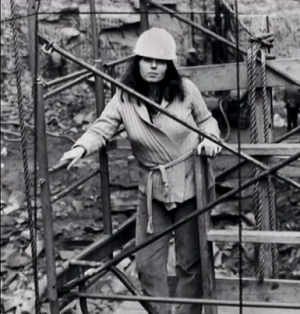
He began construction on the project, enlisting the help of a female engineer named Barbara Res. In a TV appearance, Res said:
“I am a graduate engineer and currently project manager of the newest addition to the New York city skyline known as the Trump Tower. I am proud of the fact that I am the first woman to have overall supervision of the construction of a major skyscraper in the New York metropolitan area.”
Res notes that the chances of a woman engineer getting the project manager position on a build like that was a rare occurrence in the industry. Females made up 1% of the engineering workforce in those years, Res recalls.
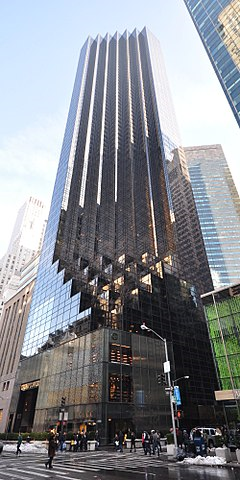
“It was a spectacular building. It was cutting edge, it was forward-thinking; the shape of it, the style of it, the idea of it, the location of it, the height of it. And the views were unparalleled. I mean, you had unobstructed views of whatever it was you were looking at. This was all very special stuff, and Donald had come up with this himself. He was a schemer and a dreamer and I just wanted to be part of It.:”
Trump moved away from the glass and steel approach of his previous projects, he built Trump Tower out of concrete. The construction manager for the Tower persuaded the structural engineer to switch to concrete; a cheaper and faster alternative to glass and steel.
Trump trumpeted that 5,000 construction workers were part of the build and added as a non sequitur that many people would be employed within Trump Tower as well!
Barbara Res admits that the general apartments in Trump Tower were cheaply made; she recalls Trump wanting to save as much money as possible. The allure of buying in Manhattan meant, however, that the lack of quality was overlooked.
Source: Wikipedia
Res, in the new documentary, Trump: An American Dream, said: “Yeah, it was Trump’s building - he conceived it...but I built it.”
Mr Trump is now the President of the United States and is promising tax cuts that will reportedly benefit the middle class. I dare say these hard working people deserve them – they would certainly not have had the opportunity to lobby governments for tax cuts while simultaneously feathering their nests.
There has, however, been a silver lining to it all: many engineers have benefitted from the array of construction projects that Trump has driven over the years. Barbara Res has opened up about her experiences, I am sure there will be others eager to reminisce about the man who is now the most powerful man in the world, for good or bad.
Works Cited
Bagli, Charles V. “A Trump Empire Built on Inside Connections and $885 Million in Tax Breaks.” The New York Times, The New York Times, 17 Sept. 2016, www.nytimes.com/2016/09/18/nyregion/donald-trump-tax-breaks-real-estate.html.
“Trump: An American Dream.” All 4, www.channel4.com/programmes/trump-an-american-dream.
- Details
- Written by: Quintus Potgieter
Zimbabwe could be at the dawn of a political revolution. It could also be business as usual. Amid a confusing week of political spring cleaning in the country, students working towards attaining qualifications in the tertiary sector have spoken out, painting a truly dire picture.

A few days ago BBC News described Zimbabwe as ‘cash-strapped and impoverished’. Despite this the powers that be were poised to initiate a raft of projects in honour of the recently deposed President, Robert Mugabe.
For example, it was revealed earlier this month that the country planned to upgrade its main airport at a cost of US$153 million and to rename it after the man who served as president for 37 years. The airport, currently named Harare International Airport, was to double its passenger capacity, to allow for 6.5 million passengers per year.
Another extravagant project was to include the launching a university worth US$1 billion; also to be named after Mugabe.
Are these plans likely to go ahead? Not much is certain after the military took control of the country on Wednesday 15th, when Mugabe was placed under house arrest.
The military acted after Mugabe sacked Emmerson Mnangagwa. It was Mnangagwa who they knew and trusted; as far as they were concerned he was to be Mugabe’s successor. With pressure from his second wife, however, Mugabe began preparing the way for her to succeed him as President; this was his undoing.
Reuters reported one of the delegates as saying, "He (Mugabe) has been expelled, Mnangagwa is our new leader."
The military is supposedly on a crusade to end corruption in the country. They are arresting government officials in an operation that will reportedly “weed out criminals around President Mugabe.” Incidentally, the officials who have been arrested were closely aligned to Mugabe’s wife, Grace.
The political situation has caused much uncertainty; in a country already reeling from mismanagement; 95% of those with qualifications in the country are unemployed.
And for those presently studying, a history of bad governance presents them with ongoing difficulties.
Ramifications on education and training
Students at the University of Zimbabwe are facing a fees crisis that is leading to many dropouts. Likewise, Zimbabwean distance learners, studying through global online institutions, have expressed their disdain at what has been transpiring in the country. The Reserve Bank of Zimbabwe has reduced (and in some cases banned) international transfers.
This has made it impossible for students to pay their monthly tuition fees. Some resourceful learners have made arrangements to continue paying.
An accounts department for an online institution mentioned that, “Some debtors are asking for financial aid from relatives out of Zimbabwe, and others travel to Musina (on the South African border) every month to pay tuition fees. They secure the forex from the black market -- really.”
Others have had to drop out.

(Interestingly the response to the flailing economy and the shortage of cash in the country has resulted in people investing in cryptocurrencies. Zimbabwe’s Golix bitcoin exchange rose by 10% on the day of the faux-coup.)
Zimbabwe has the highest adult literacy rate in Africa - approximately 92% of its population can read. Despite this extraordinary statistic, poor governance has resulted in soaring unemployment and devastating poverty.
It seems that the uncertainty in the country may persist for some time, but many do believe that there is a glimmer of light at the end of the tunnel. If the new government focusses on rebuilding the country they will not be disappointed, the people of Zimbabwe will do what they can to support them.
Works Cited
Brand, Robert, et al. “Zimbabwe Doesn't Have Its Own Currency and Bitcoin Is Surging.” Bloomberg.com, Bloomberg, 15 Nov. 2017, www.bloomberg.com/news/articles/2017-11-15/bitcoin-surges-in-zimbabwe-after-military-moves-to-seize-power.
“Is Zimbabwe's Adult Literacy Rate the Highest in Africa?” Africa Check, africacheck.org/reports/is-zimbabwes-adult-literacy-rate-the-highest-in-africa/.
- Details
- Written by: Quintus Potgieter
Whilst optimized curriculum vitae look good, professional licensing also speaks volumes to employers. But is the professional engineering status necessary? Can you call yourself an engineer without the formal designation of Professional Engineer?
In the fourth industrial revolution, with automation replacing many repetitive roles, a more fluid and dynamic set of engineering skills may be necessary. The future is very likely to require engineers to amass as many skills as possible.

To be employable practical skill and theoretical knowledge are a powerful combination. A qualification is highly valued and certainly makes finding a job that much easier. But a qualified individual with relevant experience is likely to be best placed to win a sought-after job.
There is also a notion of professionalism in the engineering industry. The question is: what truly makes an engineer an engineer? The job title is thrown around casually in some countries. In others the engineer is only recognized by prescribed professional status.
Should you get your PE status?
A common question among wannabe engineers is whether or not getting the formal credentials is necessary. In some states in the US, for example, it is illegal to call yourself an engineer if you do not have the Professional Engineering (PE) status.
A forum chat amongst the engineers on social media site Reddit discussed PE status. A question about getting PE status in the aerospace industry was posed. A user named Red_Eye responded to the question, saying:
“PE in aerospace industry here. Will it benefit you on paper in any way? Not directly. Companies like Lockheed are structured in such a way that your pay and promotions are based on years of experience, and nothing more. I will say, however, that it may increase your prestige and level of responsibility, thus increasing your job satisfaction. Eventually, you can use this to leverage a pay increase.”
Experience, on the other hand, is not being questioned; it is highly valued by industry. Unfortunately, students straight from university are not adequately equipped for the workplace so are often overlooked by experienced candidates and can struggle to secure work.
How the Engineering Institute of Technology (EIT) does it
EIT provides education and training options and pathways that can be acquired alongside full time work. Their live, online platform of learning enables this. EIT ensures all programs are driven by the skills required by industry which in turn are presented to students by industry experts.
Through a flexible, yet intensive system of education EIT qualifies individuals as technicians, technologists and engineers, whereafter graduates can apply for professional status in their own countries.

The Dean of Engineering at the Engineering Institute of Technology, Steve Mackay, highlights that the workplace for an engineer is vastly different to thirty years ago. And he feels that this is the same with tertiary education. Instead of attending a class on campus, engineers can now become qualified whilst earning money and gaining experience on the job.
An added bonus is that this often makes the process of study much more meaningful.
Each person’s career path is unique, but some things have become clear: we all need to remain nimble and do our best to remain at the forefront of changes in technology. We also need to avoid lengthy stints in positions which may become hollowed out by automation.
Works Cited
“Does Having a Professional Engineering (PE) License Benefit You in Anyway If Your Working for the Aerospace Industry like Lockheed Martin? • r/AskEngineers.” Reddit, www.reddit.com/r/AskEngineers/comments/64heyg/does_having_a_professional_engineering_pe_license/.
- Details
- Written by: Quintus Potgieter
Yahama is taking self-driving cars a step further: self-driving motorbikes. Meet MOTOBOT, a motorbike driving robot that has been engineered to surpass humans; to beat them at their own sport.
After months of trial and error, the engineers at Yamaha were ready to pit their self-driving robot against a human - a professional biker named Valentino Rossi. But the road to getting a robot driving a motorbike had to start with one crucial function: balancing.
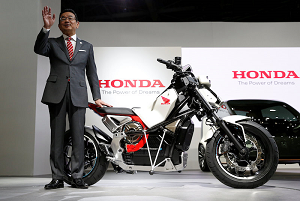
Image: Honda’s Self-balancing Bike
Source: The Malay Online
Honda has also been tasking their engineers with balancing motorbikes - and they seem to have perfected their ability to self-balance. They have called it the ‘Riding Assist-e’ - an all-electric motorbike that will never fall over.
The bike was reportedly engineered with inspiration from the ASIMO robot - made popular by Honda in 2000. The company is naturally keeping the particulars of how they engineered the vehicle under wraps. However, we know it has something to do with the bike’s gyroscope. Lead engineer Hiroyuki Nakata said:
“For years international bike manufacturers have experimented with various forms of gyroscopes to stop motorcycles falling over. But if you wanted to keep something as heavy as a motorcycle standing, you need a large and heavy gyroscopic device and you need to keep turning it.”
In Yamaha’s case, they fitted a robotic rider to their biker to control the motorcycle. To balance the motorbike, the engineers have positioned a humanoid robot on top of it, keeping the bike stable. Unlike Honda’s concept build, Yamaha’s bike is completely unmodified. On race day, the robot was unfortunately not as fast as Rossi. Rossi set a time of 85.740 seconds, whereas MOTOBOT set a time of 117.504 seconds.
Engineers now need to figure out how to implement an artificial intelligence that can mirror human decision-making in order to beat the Rossi’s lap record. They also need to enable the fixed humanoid robot to move atop the bike, to increase the accuracy of turns and generally display the agility of a human.
All in all, the experimentation of self-balancing and self-riding motorcycles will result in improving motorcycle safety in future. The Chief Executive of Yamaha says the project is a “moon shot”; if they are to get it right it could change the game.
Your next pizza could just be delivered by an autonomous motorcycle!
Works Cited
“MOTOBOT Episode 3: Racing the Clock 挑戦.” YouTube, 24 Oct. 2017, youtu.be/mafJmMGGOXk.
Philip E. Ross
Posted
27 Oct 2017 | 16:00 GMT. “Watch Yamaha's Humanoid Robot Ride a Motorcycle Around a Racetrack.” IEEE Spectrum: Technology, Engineering, and Science News, 27 Oct. 2017, spectrum.ieee.org/cars-that-think/transportation/self-driving/watch-yamahas-humanoid-robot-ride-a-motorcycle-around-a-racetrack.
- Details
- Written by: Quintus Potgieter
The methods used by the architects and engineers in the ancient world often remain mysterious and enigmatic. How the Great Pyramids of Giza were built, for example, still manage to stump engineers and other experts from around the world.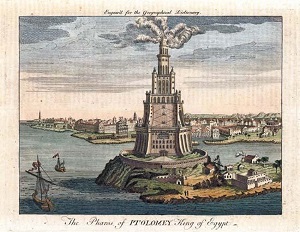
Neither the tools nor the techniques used to construct these complex and giant edifices can be fully explained. It is this fact that makes them one of the seven wonders of the ancient world.
The Lighthouse at Alexandria or Pharos of Alexandria is also considered one of those seven wonders. It is an ancient marvel not ever replicated in the modern world; an example of engineering design that has been lost to history.
The Lighthouse, erected in the ancient Greek town of Alexandria, no longer exists. A spate of earthquakes between CE 956 and 1323 caused catastrophic failure. A remnant of a lighthouse, built to similar specifications by the Roman Empire, does however exist at Dover Castle in the United Kingdom.

Image: Ruin of Roman Lighthouse at Dover Castle
Source: Garry Hogg
Pharos of Alexandria was engineered by Sostratus of Cnidus, the Greek architect and engineer in 280 BCE. It is said to have been the world’s first lighthouse.
It was also considered one of the highest buildings in the world, it stretched to 400 feet. But some believe it was originally 100 feet tall; the confusion allegedly stemming from the number of times the lighthouse was repaired after earthquake damage.
It had a square base made out of masonry blocks, lined with molten lead - this ensured a sturdy build that could withstand waves crashing into it.
Arab traveler Abou-Haggag Al-Andaloussi offers the most descriptive account of what the Pharos of Alexandria looked like. He wrote:
“The Pharos rises at the end of the island. The building square, about 8.5 meters (28ft) each side. The sea surrounds the Pharos except on the east and south sides. This platform measures, along its sides, from the tip, down to the foot of the Pharos walls, 6.5 metres (21ft) in height. However, on the sea side, it is larger because of the construction and is steeply inclined like the side of a mountain. As the height of the platform increases towards the walls of the Pharos its width narrows until it arrives at the measurements above.”
Possible war machine
It is believed that a fire lit it at night, but mirrors reflecting the sunlight were used during the day. It is said that once the Romans had control over Alexandria, they utilized a rotating, reflective mirror system similar to that which is used today inside a modern lighthouse.
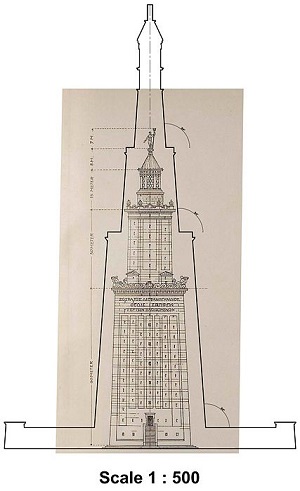
Rumor amongst historians and legend suggest that the mirrors could have been used for warfare too with the Romans manipulating the mirrors to defend the city from enemies. This involved focusing the rays of the sun onto the mirrors then reflecting this magnified intensity onto the oncoming ships, leading to their fiery end. Scholars remain skeptical.
Whether a war machine or not, it is still considered one of the greatest feats of engineering of its day. And for this glimpse into the ancient world of engineering our gratitude must go to the careful writings of a handful of Arab writers and 1st century Roman historian Josephus.
Works Cited
“Eye Witness Accounts of the Lighthouse of Alexandria, One of the Wonders of the Ancient World | 1001 Inventions.” 1001Inventions, www.1001inventions.com/lighthouseofalexandria.
sunbright57. “The Roman Lighthouse, Dover, Kent.” The Journal Of Antiquities, 2017, thejournalofantiquities.com/2013/05/12/the-roman-lighthouse-dover-kent/.
- Details
- Written by: Quintus Potgieter
The Great Pyramids of Giza are a complex of ancient monuments dating back to 2,000 BCE. They have taken their rightful place as one of the seven wonders of the ancient world; monuments that reflect astonishing ancient engineering skill and precise architecture. The pyramids are also the last of the seven wonders of the ancient world to remain standing.

They have been extensively researched, prodded and explored; despite this the manner in which they were constructed is largely unknown. The mystery remains, but a new discovery may shed some light on part of the process.
Engineering and archaeological professionals believe they have found a previously unknown void in the Great Pyramid - also known as Khufu’s Pyramid.
The ScanPyramids Project started in 2015. The Faculty of Engineering at Cairo University and the Heritage Innovation Preservation got the ball rolling, recruiting many scientific partners including Japan’s Nagoya University, and others, to work alongside the project. Their mission is to expand the search within the pyramids non-invasively.
Using the latest in site surveying technologies, the team went to work. Through the utilization of infrared tomography and 3D simulations, they began their work. Two years later, with the use of radiographic moun tomography technologies, the engineers and archaeologists could confirm that there are voids, previously undiscovered, within the pyramids.
In their report in the Nature Journal the researchers explained how they found the void. They wrote:
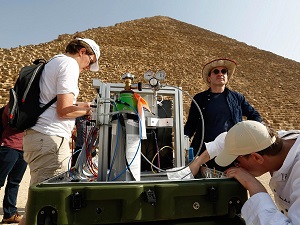
“To better understand its internal structure, we imaged the pyramid using muons, which are by-products of cosmic rays that are only partially absorbed by stone. The resulting cosmic-ray muon radiography allows us to visualize the known and potentially unknown voids in the pyramid in non-invasive ways.”
In simple terms, the process basically allows researchers to ‘X-ray’ dense materials.
Through many independent investigations, many of the scientific groups and engineering groups involved all agreed that their muon-heavy data showed that there was definitely a void above the Grand Gallery - a section of the Great Pyramid discovered in the 19th Century.
The technology has been used to plot out segments of the pyramids before, but the technology has since been improved. (This form of radiography has also been used to look inside the Fukushima nuclear reactor without endangering life.)
Minister of Antiquities for the Egyptian government, Zahi Hawass, is skeptical about the new find. He says the belief that there are large ‘voids’ within the structure is tenuous. He thinks that the pyramid is very likely to be full of tiny voids that maintain the structural integrity of the pyramid.
To substantiate the existence of the void is fraught with difficulty; archaeological works on an undiscovered void with no apparent entryway may cause damage to the pyramid.
Nonetheless, the project reflects the power of collective expertise; where researchers from different industries and countries come together and use the tools at their disposal to uncover history.
To see the full report on finding the voids within the pyramids, take a look at this video:
Works Cited
Fleur, Nicholas St. “Inside Giza’s Great Pyramid, Scientists Discover a Void.” The New York Times, The New York Times, 2 Nov. 2017, www.nytimes.com/2017/11/02/science/pyramids-giza-void.html.
Nature(2017).doi:10.1038/nature24647.12 October 2017.24 October 2017. Published online. 02 November 2017
- Details
- Written by: Quintus Potgieter
President Xi Jinping of China has earned official recognition as the Communist Party’s leader. An honor bestowed last to Mao Zedong and his successor Hua Guofeng. This means that the leader has garnered the utmost respect of all members within the party.
Xi Jinping can therefore put his recently unveiled Belt and Road Initiative (BRI) into action. The initiative is a $US1 trillion plan to revolutionize manufacturing and construction in the country. The government hopes to create more opportunities for trade through the plan as well.

The initiative will include the economic zones of more than 60 countries, which will generate 40 percent of China’s GDP going forward. It will undeniably be an opportunity for engineers to profit from the infrastructural projects China has around the globe.
This comes after China’s National Energy Administration (NEA) announced that all construction projects for new coal power plants have been cancelled. Instead, the NEA is investing $361 billion into expanding renewable energy technologies in an effort to reduce the crippling smog levels in many cities in China. The number of coal power stations that will be halted, according to Reuters, is “over 100”.
It has been estimated that the move from coal to renewable power will reportedly generate 13 million jobs in the renewable energy sector in China.
Universities in China plan to support Xi Jinping with the renewed establishment of the Communist Party’s dominance over government in China. The institutions will reportedly create research institutes that will strive to improve China as a whole. Xi Jinping studied chemical engineering at Tsinghua University himself.
Experts say that China and India’s economic
growth will produce 40% of STEM
(Science Technology Engineering and Mathematics) graduates worldwide, by 2030.

Image: Nova Cidade de Kilamba
Engineering influence
China has become world renowned for its influence in engineering industries across the globe. The country spends billions in creating infrastructure for allied nations. China has construction deals that total US$73 billion in Africa alone.
In 2014, the Nova Cidade de Kilamba was built in Luanda, the capital of Angola, built by the China International Trust and Investment Corporation (CITIC). (The housing development, however, stood largely empty for some years after its construction was completed.)
The group works in Financial Services, Real Estate & Civil Infrastructure, Engineering Contracting, Energy & Resources, Manufacturing, and IT.
Angola forewent any deals with Western governments, choosing to rebuild their country - after a brutal civil war that lasted from 1975 to 2002 - with the help of Chinese companies.
The New York Times reports that Angola exported an estimated US$600 billion in oil alone, from 2002 to 2015. The governments of Brazil and Portugal shared in the construction boom that followed the end of the civil war.
Further afield, in the Southern African country of Lesotho, Chinese embassy political counselors recently handed over the reins to water supply projects built through the China-Lesotho People-to-People Friendship Action Fund.
At the event, the embassy deputy ambassador Mr. Song Changqing said that the fund would lead to “socialism with Chinese characteristics”, which would enter the country into a “new era” with China at the forefront of “building a community of shared future for mankind.”
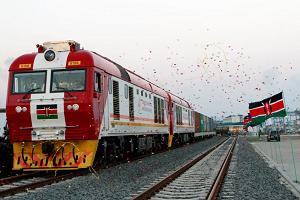
Image: Kenya’s New Railway
Source: Newsweek
Similarly, Kenya has opened their borders to Chinese engineering. The country has just opened their largest infrastructure project of the last fifty years; a 298-mile long railway stretching from Nairobi to Mombasa funded and built by Chinese investors.
The project cost US$3.8 billion, but is part of a bigger project that will improve railway networks across East Africa.
This provides a little insight into Chinese engineering activity in Africa and the world; something that is unlikely to slow down anytime soon.
Works Cited
Hand-over Ceremony of Water Supply Projects Held by China-Lesotho People-to-People Friendship Action Fund in Thaba-Tseka, www.fmprc.gov.cn/mfa_eng/wjb_663304/zwjg_665342/zwbd_665378/t1503949.shtml.
Meng, Meng, et al. “China to Plow $361 Billion into Renewable Fuel by 2020.” Reuters, Thomson Reuters, 5 Jan. 2017, www.reuters.com/article/us-china-energy-renewables-idUSKBN14P06P.
Onishi, Norimitsu. “Angola’s Corrupt Building Boom: ‘Like Opening a Window and Throwing Out Money.’” The New York Times, The New York Times, 24 June 2017, www.nytimes.com/2017/06/24/world/africa/angola-luanda-jose-eduardo-dos-santos.html.
- Details
- Written by: Allison
3D printing – the possibilities really are endless of where this technology can take us in the future.
An example of this is with Peter Armstrong, a mechanical engineering student from Colorado who was inspired by a family friend who underwent a double amputation to the lower limbs. Through years of research and various prototypes, Peter has been able to apply his knowledge and skills to produce low-cost prosthetics using 3D printing technology.
He foresees these prosthetics, costing an average of US$300 to produce, being utilized in parts of the world where prosthetics and medical aid can be difficult to afford.
His project has grown into the company, Go Prosthetics and he is currently looking for companies to collaborate with to develop his 3D printed prosthetics further.
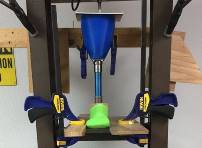
(Image Source: Go Prosthetics)
Prosthetics have come a long way over the years. Developments in technologies such as robotics and 3D printing have made the future for amputees an exciting time and a much cheaper future.
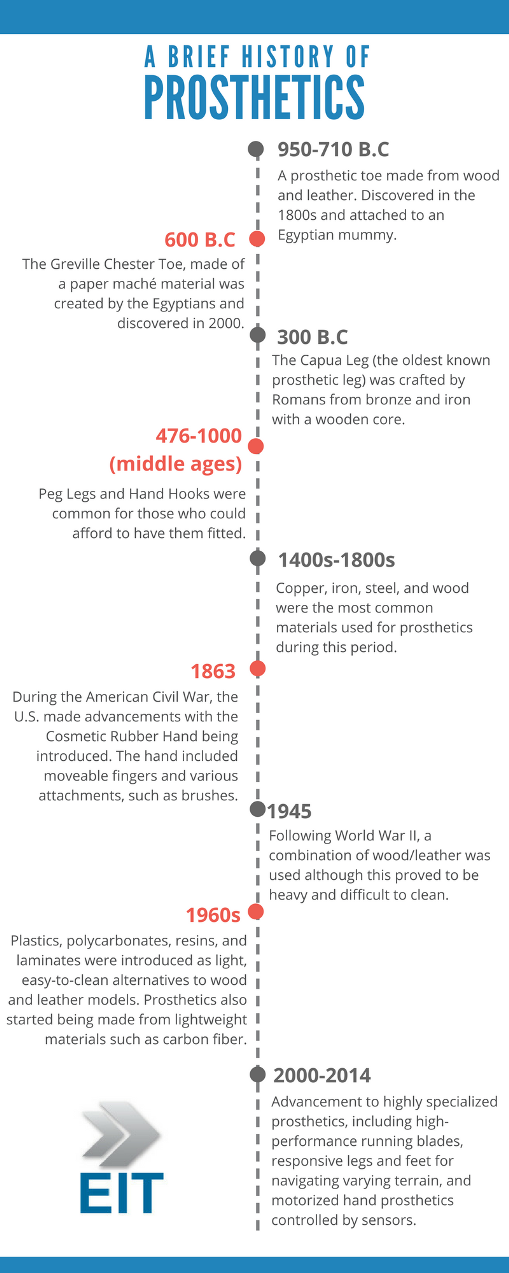
- Details
- Written by: Quintus Potgieter
Attrition rates are a bone of contention within tertiary education institutions. There is an inevitable desire to deny that the number of students dropping out of courses is too high, let alone rising.
 Students, wherever they obtain the money, invest it into gaining qualifications; the key they believe, to establishing or furthering their careers. This is a high stakes investment with the idea of dropping out unthinkable for many.
Students, wherever they obtain the money, invest it into gaining qualifications; the key they believe, to establishing or furthering their careers. This is a high stakes investment with the idea of dropping out unthinkable for many.
Students failing to complete qualifications, however, is a large scale problem across the globe.
Bill Gates, the brains behind Microsoft, describes the dropout rate in the US as ‘tragic’. Gates laments that out of the 2 million new first-year students set to study at U.S. universities this fall, it is estimated that about half (54.8 percent) will emerge with a diploma at the end of their studies, the rest will drop out. Gates writes:
“The U.S. has the highest college dropout rate. We’re number one in terms of the number of people who start college but we’re like number 20 in terms of the number of people who finish college.”
Gates was informed of these terrifying statistics after visiting Georgia State University (GSU) in the U.S.; a university which is tackling the problem:
Gates attributes the success of GSU’s improvement in graduation rates to the immense wealth of data they are able to generate about their students. Gates reckons that data is the key to figuring out how better to assist students who are in danger of dropping out. He writes:
“Using this information, advisers are now able to identify the students who need assistance - often before the students know it themselves.”
Gates says GSU has actively tried to remove some of the obstacles that result in students failing to continue with university. Some of these included:
- Complex admission forms
- Weaker high school academic records (resulting in high first year drop out rates)
- Financial constraints
- Too many class and major options causing confusion and then becoming a deterrent
There are many factors at play causing students to leave university before graduating. Gates suggests that these should all be determined and then tackled in innovative ways. In GSU’s case, they have redesigned student application processes, for example, and have approached student support in different ways.
Global institutions
The attrition rate crisis is not restricted to the United States, but is a global problem that is affecting campus-based and online education institutions. With the improvement in online technologies new models of education and training are popping up. One of these is the advent of the Massive Open Online Courses, or MOOCs.
MOOCs involve videos of lecturers streaming to thousands of students who enroll online. There is no interaction with the lectures, but some of the formats use discussion boards which are more or less helpful. The attrition rates here are understandably very high.
The Dean of Engineering at the Engineering Institute of Technology, Steve Mackay, says some online models do not effectively retain students. MOOCs, with no interaction between student and lecturer, lead to a 90% drop out rate. Mackay says:
“My suggestion to students is to avoid asynchronous online education. Look instead for courses where there are lecturers and students meeting in real time via a video conferencing or web conferencing format, in other words, synchronous online learning. This approach is less flexible, but is what drives students to finish. Some of our courses, using this platform of learning,  have only a 10% attrition rate.”
have only a 10% attrition rate.”
EIT also employs Learning Support Officers who assist and guide students throughout their studies. And although EIT employs an online approach to education and training, students have the opportunity to interact more with lecturers than in many other models of learning available in the world today.
Offering support to students is the key to retaining them and having them ultimately graduate successfully. But as education becomes increasingly accessible to a larger pool of people education facilities will need to be innovative if they are to provide meaningful qualifications whilst keeping students on board.
Works Cited
Gates, Bill. “Putting Students First.” Gatesnotes.com, www.gatesnotes.com/Education/Georgia-State-University.
- Details
- Written by: Quintus Potgieter

It is becoming more technically complex for energy companies to supply energy to their growing base of customers. To confirm the purchase of power a number of broker companies are involved to verify that the purchases have been made.
If governments want the whole world to be connected to some sort of energy grid a novel approach to its supply must be found.
Blockchain Technology
Enter: The Blockchain. A blockchain is a collection of digital transaction blocks that create a digital ledger of unique, encrypted information that cannot be changed or altered.
The blockchain, in a currency sense, confirms cryptocurrency transactions in a ledger. It facilitates safe online transactions in a more efficient and transparent way than previously achieved.
This video contains an interesting way of explaining the blockchain; it uses the mining of diamonds and their distribution to do so:
The energy industry has become very interested in the speedy way the blockchain confirms transactions and is keen to enhance it. According to MIT Technology Review, it takes 60 to 80 days for an electricity producer to obtain the money from consumers.
The alternative is for energy generators and distributors to establish a network that delivers an amount of energy to a customer based on how much a consumer has paid - in real time. The auditing firm Deloitte’s Corporate Venturing and Blockchain Lead, Alexander Shelkovnikov, has recently published a report named, ‘Blockchain applications in energy trading’. An excerpt of the introduction to the report reads:
“Picture a trade floor five years in the future. The robotic trader managing one of the gas desks is about to execute a physical natural gas trade with an industrial customer. One of the robot’s trading algorithms scans available market interests and optimizes its search for the best deal to meet the customer’s volume and tenor requirements for a given period.”
The blockchain system’s transparency will prevent errors, discrepancies and fraud.
The implementation of an automated ledger system could, however, result in some job losses and the transactions may face security risks.
Renewable Energy Opportunities
However, the positive could outweigh the negatives in a renewable energy future. The blockchain technology could allow renewable energy to be sold between individuals who generate it; a peer-to-peer network of energy trading. Australian start-up Power Ledger is trying to capitalize on creating an infrastructure that will facilitate these transactions.
To see how this would work, take a look at this video:
Thus, local traders whose solar panels generate the energy that the grid could benefit from, could trade with individual households in need and with the utilities. It is definitely a disrupting technology, whilst also being a technology that could revolutionize energy trading on a localized and industrial level.
What remains clear, though, is that blockchain needs a level of governmental regulation. But how long will it take before that regulation suffers the same conflicts of interest that caused the first blockchain to be invented? Shelkovnikov asserts, however, that if regulation is imposed and the blockchain implemented in marketplaces, the benefits will outweigh the many negatives.
Energy trading may not be the only area revolutionized by blockchain; it could impact many other engineering industries too. At this stage, however, it seems that the energy industry is the one ready for decentralization, and with blockchain, much like Bitcoin, it might be here sooner than we think.
Works Cited
Diss, Kathryn. “How Blockchain Technology Could Help You Become Your Own Energy Mogul.” ABC News, Nov. 2017, www.abc.net.au/news/2017-10-11/blockchain-technology-fuels-peer-to-peer-energy-trading-start-up/9035616.
Deloitte UK.” Deloitte United Kingdom, June 2017, www2.deloitte.com/uk/en/pages/energy-and-resources/articles/blockchain-applications-in-energy-trading.html.
- Details
- Written by: Edwina Ross
Back in 2008, when we were expanding from a company providing courses for professional development into a fully-fledged college of engineering, Dick was not only an enormous support, but his involvement contributed to the success we enjoyed. He was hearty in his encouragement of our efforts and he shared his expertise generously. Dick’s enthusiasm certainly carried us through those tenuous early years, when doubts can often undermine one’s confidence and dampen persistence.
We, at the Engineering Institute of Technology (EIT), had adopted a fairly innovative live and interactive online platform of learning, placing us a little ahead of our time. Our methodology certainly caused the regulators in the industry some consternation, but not Dick.
His support for us was reflected in his involvement with the college; he became a member on our Academic Board and gave the introductory lectures on our Advanced Diplomas in Industrial Automation.
To accommodate the time zone differences of students scattered across the globe, our online sessions have to be repeated three times during the day. (Dick had no problem with this as he needed little sleep.) Interestingly, though, many of our students chose to attend all three live webinar sessions; it was clear to them that they were engaging with an engineering rock star.

Dick Morley at The Barn alongside his automated loader
Sharné Pretorius was instrumental in rolling out the earliest versions of our online learning methodology and was deeply saddened at the news of his death. She recalls:
“He was brilliant but unpredictable so moderating his webinars was always a bit of an adrenaline rush”
Dr Steve Mackay, a passionate engineer and our Dean of the college, reflected on a man he considered a friend and mentor:
“What really struck me about Dick was his can do attitude and his encouragement to, ‘just get on with it, don’t hesitate’, admitting, ‘you will often fail, but what the hell’. He was extraordinarily supportive and very interested in our engineering college activities. I could call him at any time (did he ever sleep?) for his valuable counsel on the content of our courses, on marketing and he offered vital contacts. Dick served for many years on our Academic Board and taught on many of our courses (for which, unsurprisingly, he received great accolades). He also kindly, but with gritted teeth (the travel from New England took a good few days) presented at one of our conferences here in Australia. I loved his wry and eccentric sense of humour; he was always thinking from left of field. He will be missed”
In his honour we have created a Dick Morley Prize for Engineering Excellence. Graduates from our Master of Engineering (Industrial Automation) will have the opportunity to win the award - for a thesis considered the most innovative and useful. Dick will be remembered as the Father of the Programmable Logic Controller, certainly. But for us, at the Engineering Institute of Technology, he will be that someone splendid who helped us gird our loins and forge a brave and determined path towards creating a college of excellence in engineering education.
- Details
- Written by: Quintus Potgieter
Scotland’s world-first offshore ‘floating’ turbine farm has begun producing energy. 20,000 homes on the mainland will be receiving power from this renewable energy source.
The operation has been constructed in Peterhead in Aberdeenshire, Scotland. In a world first the wind turbines have been placed further out to sea than ever before; they are located 25km (15.5 miles) offshore. Why the greater distance you may ask? In an ocean, the deeper the water the more energy there is to be harvested.
The Chief Executive of WindEurope, Giles Dickson, spoke to The Times saying:
“Eighty percent of Europe’s offshore wind potential is in waters 60m and deeper, where bottom-fixed offshore is less attractive. The potential is massive: 4,000GW in Europe alone.”
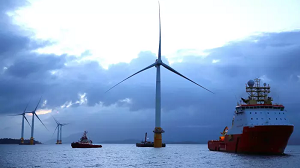
The Hywind Scotland Farm was constructed by Statoil who, aiming for optimal energy production targeted the deeper ocean waters further out to sea.
Because of the greater water depth the engineers knew that inserting steel rods into the seabed might fail to keep the turbines rigid. They had to come up with another plan. After 16 years the solution was indeed found and the farm finally came to fruition.
How to float a turbine
The engineers utilized a technology normally employed in deep offshore oil-rig operations; suction buckets.
The video here illustrates how the ‘suction bucket jacket foundation’ technology works (the inspiration for the Hywind Scotland Farm):
Each turbine at the Scottish installation includes a 90-metre long, 3,500 ton, floating substructure. This gets upended into the ocean after which it is ballasted with 5,000 tons of iron ore. Mooring lines are connected to the seabed and attached to the floating substructure by suction bucket anchors.
Every turbine is a marvel of engineering prowess and precision; each one is a multiple piece turbine puzzle which ultimately creates a renewable source of energy production.
What will follow at Peterhead in Aberdeenshire is the installation of a 1MWh lithium-ion battery, placed on-shore. This will store some of the energy received from transmission lines connected to the floating farm.
Watch the entire journey of Hywind Scotland’s floating turbines:
Works Cited
Megan Geuss - Oct 18, 2017 6:13 pm UTC. “First Floating Wind Farm, Built by Offshore Oil Company, Delivers Electricity.” Ars Technica, 2017, arstechnica.com/science/2017/10/first-floating-wind-farm-built-by-offshore-oil-company-delivers-electricity/. Thanks to Nathalie Thomas and The Financial Times for the image
- Details
- Written by: Quintus Potgieter
 Internships provide the opportunity for a prospective professional to gain the work experience needed in the industry they are aiming to work in. Internships enable students or workers to gain the work experience that is being sought after by employers. Adding ‘work experience’ to the curriculum vitae is an invaluable addition that sets a candidate apart from others who don’t have any, especially in engineering industries.
Internships provide the opportunity for a prospective professional to gain the work experience needed in the industry they are aiming to work in. Internships enable students or workers to gain the work experience that is being sought after by employers. Adding ‘work experience’ to the curriculum vitae is an invaluable addition that sets a candidate apart from others who don’t have any, especially in engineering industries.
Internships are particularly famous for being used to implement more equality within industries that lack gender neutrality. Some companies believe, for example, that internships specifically designed for women, will bring more females into STEM (Science, Technology, Engineering, Mathematics) workplaces. At other times internships are used to show prospective employees the ropes and give them a taste of an industry.
Internships are usually well run programs that do help individuals become professionals. There is a problem however: instead of a win-win, companies are using internships to their benefit without giving the interns much in return.
The unpaid intern fallacy
Some interns are being exploited. In their bid to gain that illusive experience they are taking on unpaid work. In the United Kingdom, for example, it is not uncommon to find qualified graduates working full time without pay. They often have to find alternative work, at night and at weekends, to make ends meet.
 The Institute for Social and Economic Research as the University of Essex have just published a report on the effect of post-graduate unpaid internships. Angus Holford, the lead author of the report, Access to and Returns from Unpaid Graduate Internships, writes:
The Institute for Social and Economic Research as the University of Essex have just published a report on the effect of post-graduate unpaid internships. Angus Holford, the lead author of the report, Access to and Returns from Unpaid Graduate Internships, writes:
“We show that, on average, former interns face a salary penalty of approximately £3500 per year compared with those who went straight into paid work, and £1500 compared with those who went into further study.”
A crackdown on unpaid internships has occurred in the United States. Companies are now being discouraged to advertise posts under the guise of unpaid internships that promise exposure and exposure alone. The government has taken it a step further and implemented the Fair Labor Standards Act which stipulates that an intern within a company must at least be paid minimum wage.
Students and workers are realizing that doing hard labor within companies, and not being compensated for it, is not worth their time. The rule of thumb, according to a number of engineers commenting on the matter in online forums, is never to take an unpaid engineering internship in the first place.
A system of temporary, on-the-job training positions, properly compensated, assists a student to further him/herself in an industry (and benefits the company too). Holford believes that this sort of contract is indeed useful:
“There is evidence that although workers on temporary contracts receive lower wages and job satisfaction, and less on-the-job training than those on permanent contracts, temporary contracts do act as a ‘stepping stone’ into permanent employment for university graduates.”
Rewriting study and work experience
Steve Mackay, Dean at the Engineering Institute of Technology (EIT), believes that where possible, study and work should be undergone simultaneously because practical work experience and theory-based knowledge are an excellent complement when acquired together. Steve recently outlined how the system of education and training at the EIT blends on-the-job training with part-time studying
EIT’s Bachelor of Science and Master degrees are contingent on students getting positions within a company, in an industry that will equip them with the relevant engineering skills. EIT offers school leavers and already working individuals a flexible online study option which includes a three year BSc degree followed by a two years Master degree. In Steve’s words:
“We’re hopeful that, for most of those five years you can be working, if not full time, then part-time. That’s a critical aspect today which I believe a lot of universities ignore. We need to make sure you all get jobs. Once you’ve completed your 3-year BSc with us, you can continue to study for the two years Master degree part-time, alongside full time work.”
Online learning is certainly making it more convenient for people to acquire professional development and/or a qualification. It also makes the process of learning more meaningful; theory gained from study can be implemented in the workplace and tested. Being able to contextualize the learning will inevitably enhance the experience.
It would be preferable for companies to do away with unpaid, post-graduate internships. Instead, graduates should be given a chance to prove their worth, whilst being properly compensated for their efforts. If they haven’t been able to work alongside their studies they will need the necessary mentoring to help build their capabilities on the job. And when required they can complete relevant, online courses of quality, to ensure they develop professionally.
Works Cited
"ABC - Australian Broadcasting Corporation." ABC - Australian Broadcasting Corporation. 27 Feb. 2013. Web. 31 July 2017.
Holford, Angus. "Access to and Returns from Unpaid Graduate Internships." By Angus Holford :: SSRN. 10 July 2017. Web. 31 July 2017.
- Details
- Written by: Quintus Potgieter

Friday night (the 25th of August) a tropical storm hit Texas in the United States of America. 60cm of rain fell overnight (23 inches) with a total of 50 inches expected before the week was out. Whether or not Texas’ drainage system is able to deal with the volume of water that climate change is bringing will be a pertinent question once relief efforts have been fulfilled. Questions surrounding Houston’s water infrastructure are already being asked.
A New York Times opinionista has pointed to climate change as the leading cause for Hurricane Harvey’s wrath whilst accusations of America’s hand in contributing to global warming persist. Simultaneously many face practical considerations - what to do in the aftermath of an infrastructure-crippling hurricane.
The devastation caused by Hurricane Harvey will encourage engineers to lend their minds to climate science studies and funnel this knowledge into solutions for a world facing an increase in natural disasters, many of which involve flooding. The lack of engineering foresight, thus far, has been highlighted in neighboring state Louisiana.
No lessons learned
In New Orleans, Lousiana, critical water infrastructure (pumps and canals) were not prepared for heavy rainfall this hurricane season. This is despite the New Orleans’ levee failures in 2005, during Hurricane Katrina. Those levee shortfalls can be found in case studies comparing them to some of the largest engineering failures of all time - including Chernobyl. Furthermore, the studies pertaining to Katrina clearly highlighted the inadequacies of the civil engineering practices within the United States Army Corps of Engineers.
New Orleans experienced a spate of floods on August 5th of this year, with Louisiana’s governor declaring a state of emergency as a result of the flooding. According to the New Orleans Advocate, repairs and maintenance on pumping stations reduced their efficiency by a third!
To give a little clarity to the problem: the drainage system in New Orleans is designed to deal with one inch of rain in an hour, and a half an inch each hour after the first. With this in mind, and according to the Economist, four out of five turbines were not working at one of the state’s pump stations during the floods, and other pumps, in harder hit areas, were down for maintenance. Elsewhere, staff shortages led to inefficiencies so pumps were not switched on in a timely manner.
The citizens in flood-hit areas of New Orleans have accused the sewerage and water board, (amidst other allegations of incompetence) of uncleaned/cleared catch basins which prevented water from moving to the drainage systems. This latest event has led to a political crisis in New Orleans. Officials, however, have said that old and poorly maintained infrastructure is an America-wide problem.
Thankfully New Orleans seems to have escaped the worst of Hurricane Harvey, avoiding the full brunt of the catastrophe 12 years after Hurricane Katrina.
Texas

The rising waters in Houston have resulted in a double-explosion at a chemical plant and, at the time of publishing, the hurricane has led to the deaths of 50 people.
The chemical plant belonged to Arkema Group, one of the world’s largest chemical companies. The coolant systems and power generators were rendered useless due to the floodwaters, and as a result the Arkema Group warned that an explosion was soon to follow. The plant exploded sending a large black plume of smoke into the air and forced police to evacuate an area of up to 1.5 miles. The Environmental Protection Agency (EPA) said that no toxic materials were reported to have been released but will continue to monitor the situation as more explosions are possible.
In Beaumont, Texas, flooding has caused the city’s water pumps to fail, causing 118,000 people to be without any running water. Hospitals have had to evacuate their patients and transfer them elsewhere due to the lack of water.
The Atlantic reports that the Association of State Floodplain Managers in Houston has tried to get funding for flood control, but in vain. Without engineering expertise in storm water management technologies it is unsurprising that an event such as Hurricane Harvey has wreaked such havoc.
City planning has also copped some criticism. An excerpt from the Atlantic’s article points to the fact that Houston and New Orleans’ cities are in flood-prone areas:
“The hardest part of managing urban flooding is reconciling it with Americans’ insistence that they can and should be able to live, work, and play anywhere. Waterborne transit was a key driver of urban development, and it’s inevitable that cities have grown where flooding is prevalent.”
And it seems that Houston’s everyday citizens knew that a hurricane would inevitably cause a flood.
People outside of HOUSTON believe this is a ONETIME thing but this HAPPENS every 2 MONTHS or SO .. BAD ENGINEERING & FLOOD CONTROL pic.twitter.com/oRaX8x7IWg
— Aristotle Onassis (@OnassisHa36) August 28, 2017
This is gonna be fun... But we have to appreciate the City of #Houston Public Works and Engineering team. Or else this would be much worse. pic.twitter.com/YKow0yrKxy
— TheGreatNike (@XboxNike) August 27, 2017
Works Cited
Bogost, Ian. "Houston's Flood Is a Design Problem." The Atlantic. Atlantic Media Company, 28 Aug. 2017. Web. 31 Aug. 2017.
Leonhardt, David. "Harvey, the Storm That Humans Helped Cause." The New York Times. The New York Times, 29 Aug. 2017. Web. 31 Aug. 2017.
- Details
- Written by: Quintus Potgieter
Pipelines. Can’t live with them, can’t live without them.
 It is rumored that approximately three years ago a swamp kauri mining operation led to the damage of the Ruakaka-Auckland Pipeline (RAP) in New Zealand.
It is rumored that approximately three years ago a swamp kauri mining operation led to the damage of the Ruakaka-Auckland Pipeline (RAP) in New Zealand.
Swamp kauri has 50,000 year old trees that have been perfectly preserved under swamp peat. The extraction of this wood is a tedious operation. It is believed that a digger struck the RAP.
The pipeline has failed; it began leaking and it is alleged that there was increased damage from fuel transportation engineers. The RAP runs from Marsden to Wiri in New Zealand. The single pipe delivers diesel, both premium and regular, and jet fuel. It is believed 40% of New Zealand’s fuel travels through the pipeline.
A New Zealand fuel shortage resulted. The damaged pipeline delivers jet fuel to Auckland Airport - New Zealand’s premier airport - and 80,000 litres of jet fuel had leaked into the soil before the leak was discovered.
New Zealand’s Prime Minister Bill English dusted off any ‘crisis-talk’. When speaking to Sky News, English said:
“I wouldn’t use the word crisis, what’s happened here is no threat to cars and trucks in Auckland. A bit of minor inconvenience, 60 to 70 percent of scheduled flights are operating and this problem should be dealt with by early next week.”
Flight crisis
The reality is that flights have been cancelled, with thousands of passengers affected by the fuel shortage.
And rations were put in place – many planes have departed Auckland with 30 percent of their normal fuel levels. Tankers stepped in to deliver fuel to Auckland Airport, changing their normal transport routes, being forced to cart fuel from Marsden Port to Auckland Airport.
Qantas Airlines stepped up to the plate offering to fly a 747 from Sydney to Auckland to transport 50,000 kilograms of fuel to supply Jetstar and Qantas aircraft in New Zealand. A Navy ship named the Endeavour was also appointed to assist with the fuel shortages crisis.
According to the Guardian, traffic lights were reconfigured in Auckland to ensure that fuel trucks were given right of way, ensuring that fuel arrived at its designated destinations more quickly.
Questions asked
As with any engineering emergency, the questions pertaining to whether or not a disaster could have been avoided are asked. In 2012, a report by New Zealand’s Ministry of Business, Innovation and Employment, outlined contingency plans for damage to the pipeline.
Air New Zealand allegedly maintained the contingency plans for a disrupted aviation fuel scenario. They realized it would cause major operational issues for the airline and so asked that the government do something about it.

Source: Refining NZ
Refining New Zealand has been questioned about maintenance on the pipeline after the swamp kauri miners ostensibly scraped the pipeline two to three years ago. They responded that the pipe was indeed checked in 2014 and found to be in working order. The assumption is that when the diggers mined for swamp kauri one of the trees impacted the line as it was being pulled out of the ground. The trees are said to have been some of the biggest that farmers had ever seen.
The pipeline disaster came before an election in New Zealand and highlighted the infrastructural problems the country has been facing. Opposition Labour leader Jacinda Ardern blasted the ruling National Party of New Zealand saying:
“One pipeline and one digger and New Zealand grinds to a halt.”
The cause of the pipeline’s damage is still being investigated, but highlights a disturbing trend of damaged pipelines, the resultant cost to an economy and their considerable environmental impact.
Works Cited
NZ Herald By: Simon Collins, David Fisher: . "Airport Fuel Crisis: Kauri Log Digger Damaged Oil Pipeline." NZ Herald. Web. 20 Sept. 2017.
Roy, Eleanor Ainge. "New Zealand Jet Fuel 'debacle' Disrupts Election Campaign and Chokes off Exports." The Guardian. Guardian News and Media, 19 Sept. 2017. Web. 20 Sept. 2017.
"Swamp Kauri Mining at Fuel Site Was Years Ago - Neighbours." Radio New Zealand. 19 Sept. 2017. Web. 20 Sept. 2017.
